Few cities can match Rome’s cultural wealth and fascinating variety. Hence, it is known as the Eternal City for a reason. There’s ancient history at every corner. Yet, this goes just fine with the modern, energetic, and sophisticated millennial metropolis. In this comprehensive guide, I’ll show you why mesmerizing Rome turns first-timers as well as repeat visitors into eternal admirers.
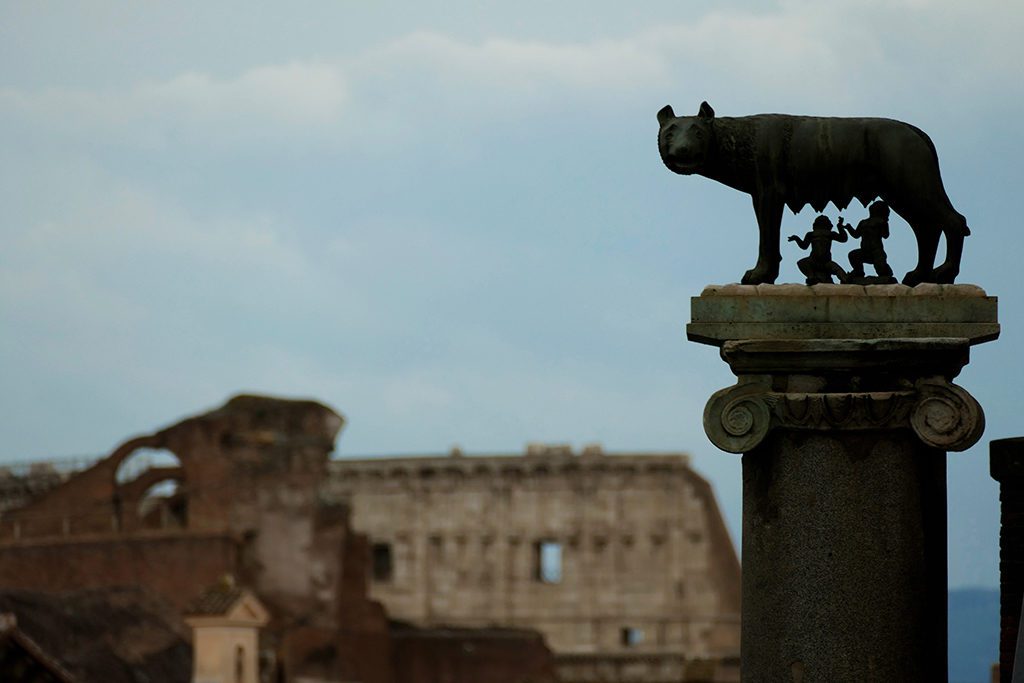
So Many Places, So Little Time
To visit all the landmarks, churches, and museums introduced in this post, you’ll need about seven to ten days. I’ve structured my guide by neighborhood. Ergo, it should be easy to compose your own itinerary – no matter how much time you spend in Rome.
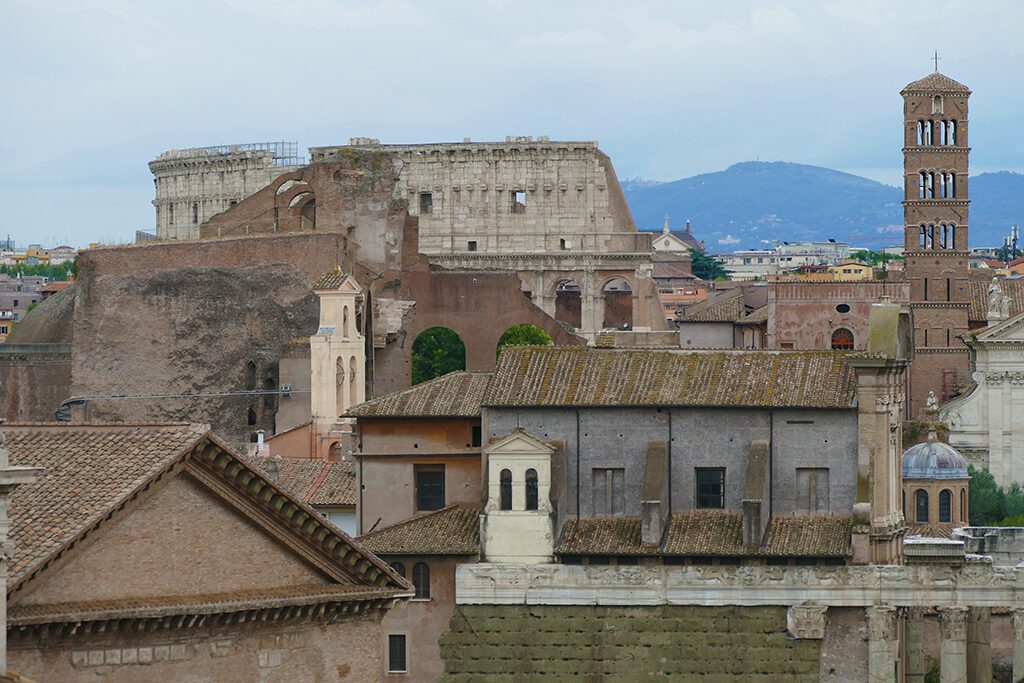
Rome is not only the capital of Italy but is also the fourth-largest city in Europe. It was built on the seven hills called Palatine, Aventine, Capitol, Quirinal, Viminal, Esquiline, and Caelius. These outlooks grant visitors beautiful panoramic views of the many districts that make up the city.
Believably, Europe was built on Rome’s Capitolium – next to Golgota and the Acropolis in Athens.
History in a Nutshell
Excavations on the Palatine have brought to light the remains of settlements from around 1000 BC. The Etruscans united various Latin and Sabine villages into one – eternal – city.
Obviously, Rome is basically breathing history. There are not many cities with structures that are more than 3,000 years old right in their center! Therefore, writing a short roundup of Rome’s history is an impossible endeavor. Nevertheless, here are some milestones.
How It All Began
According to historians, Rome was founded around 753 BC on one of the seven hills. However, finds suggest that as early as 1000 BC human settlements must have existed in this area.
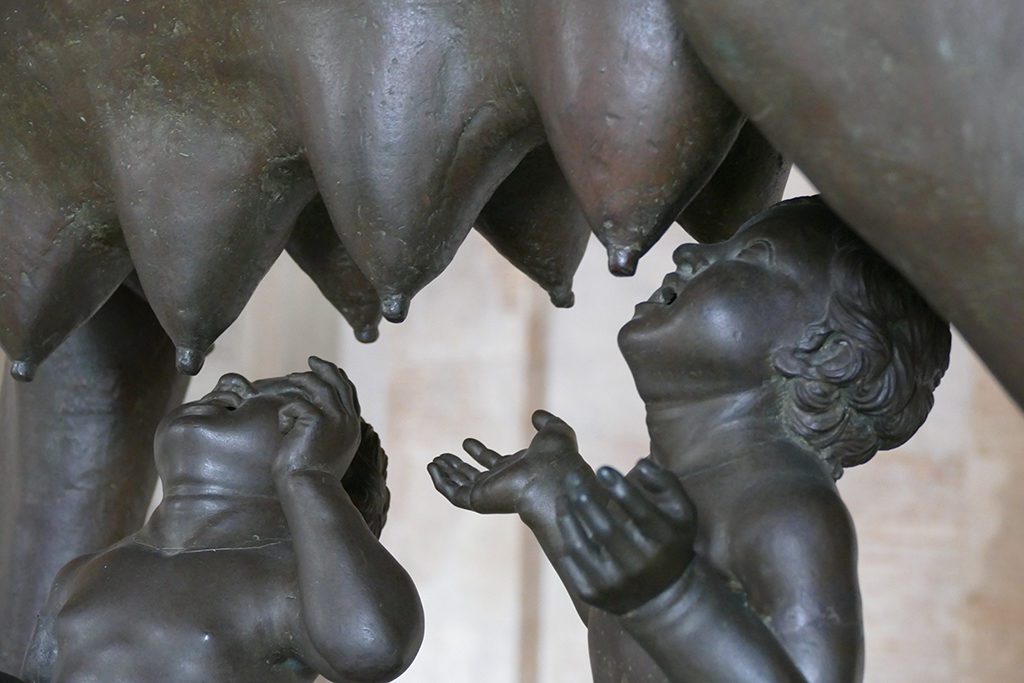
At the beginning of its history, Rome was a kingdom. The last Etruscan king, Tarquinius Superbus, had to leave in 509 BC.
The then following Roman Empire was the era between the 8th century BC and the 7th century AD. The ancient official name was Senatus Populusque Romanus, hence, the Senate and the People of Rome. You’ll find the abbreviation S.P.Q.R. to this date all over Rome
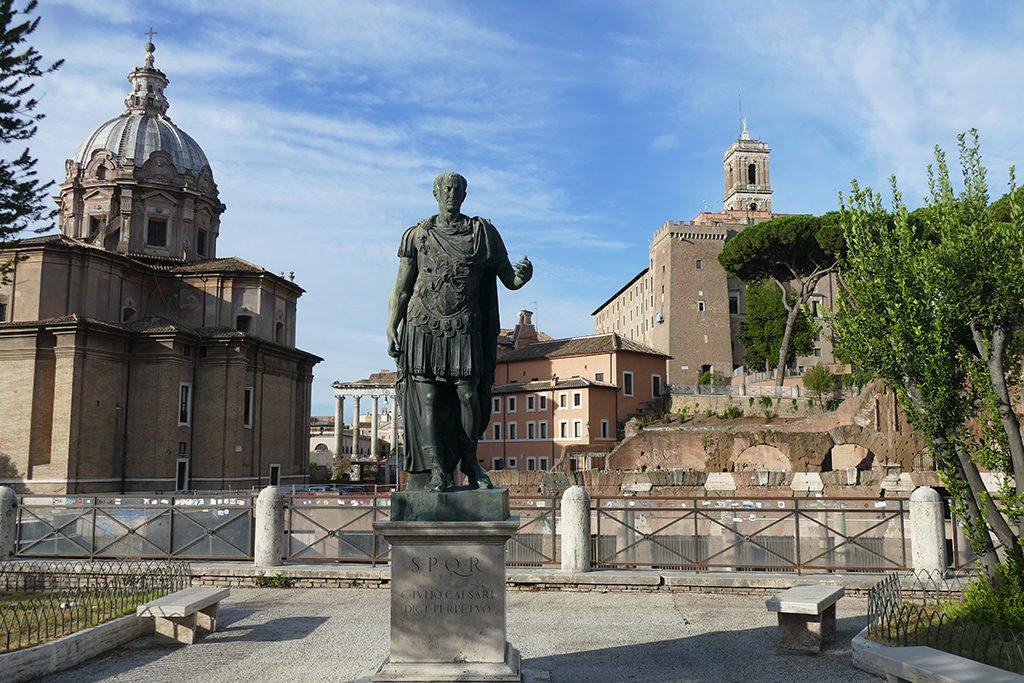
Obviously, everybody knows about Signore Gaius Iulius Caesar, the great strategist, general, and author. In fact, Caesar became the epitome of a statesman. Hence, the name became part of the title of all subsequent rulers of the Roman Empire.
In the 1st century AD, Rome was probably already a city of millions. Consequently, it was the geographical and as well as political center of the Roman Empire. There was a functioning freshwater and sewage system, a well-developed road network. Also, functioning civil protection units served as fire brigades with police powers.
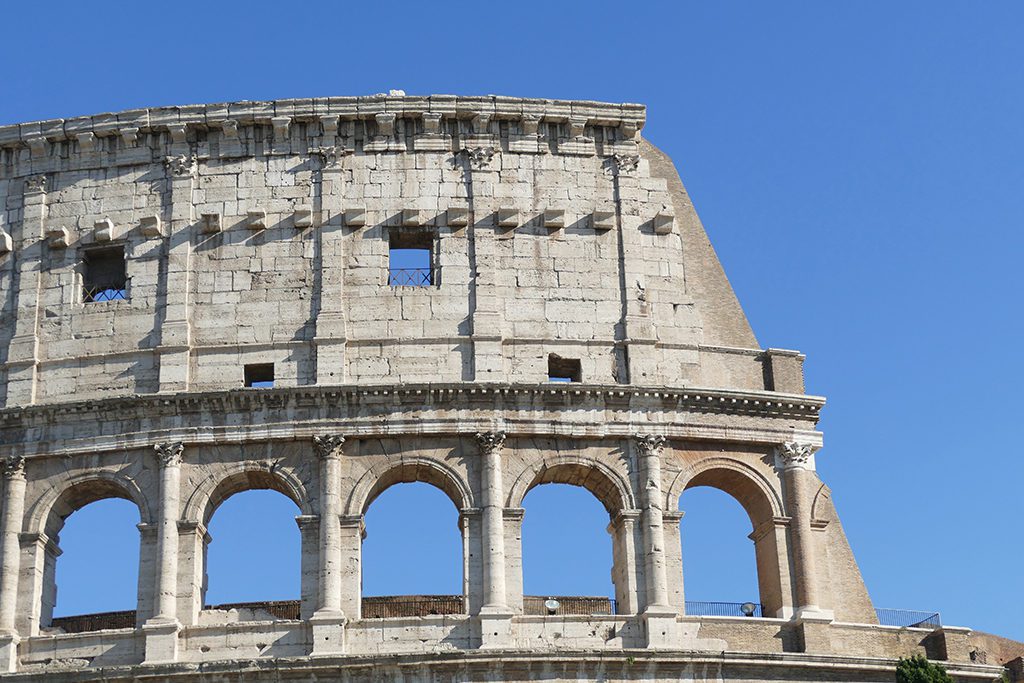
Under the rule of the Flavian dynasty, extensive construction work began. These new public structures included some of the most famous monuments, such as the Colosseum and the Imperial Forums.
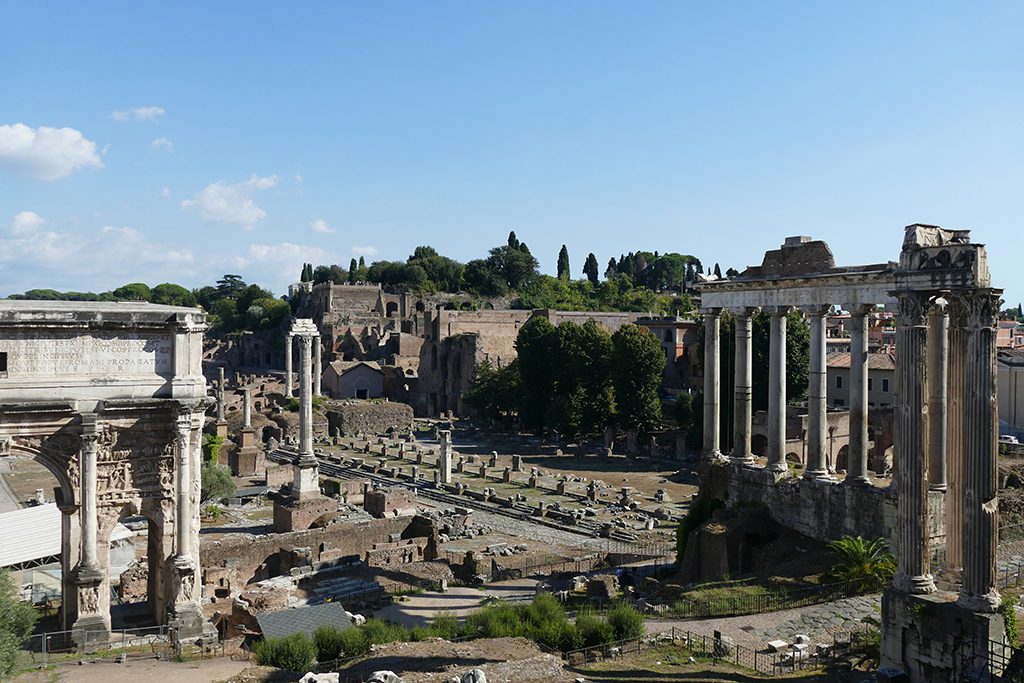
At the beginning of the 2nd century, they completed the last of these forums under Emperor Traian.
Also, large thermal baths, such as those built by Caracalla and Diocletian, became an integral part of urban Roman life. Obsessed with the idea of surpassing their predecessors, the emperors built ever larger structures.
At the beginning of late antiquity, around the year 300, Rome had reached its largest population. There was an estimated 1.2 million inhabitants. Nevertheless, as the various emperors preferred other residences like Constantinople, Milan, and Split, the city slowly lost its political importance.
In the 5th century, parts of the empire got into damaging civil wars and suffered attacks from outside. This, obviously, also affected the city of Rome.
Middle Ages
From 781 to 810, Pippin, Charlemagne’s third son, was King of Italy. During his reign, Rome gained new importance as the capital of the Patrimonium Petri, the Papal State. Alongside Jerusalem and Santiago de Compostela, the city was the most important place of pilgrimage for Christianity.
New splendor came to the city in the year 800. That year, Pope Leo III crowned Charlemagne to become Emperor of the Holy Roman Empire.
Between the 8th and 11th centuries, the Lombards, Saracens, and Normans attacked and looted Rome many times. Around 800, the population had shrunk to only 20,000. Due to this rapid population decline, a good three-quarters of the urban area was abandoned.
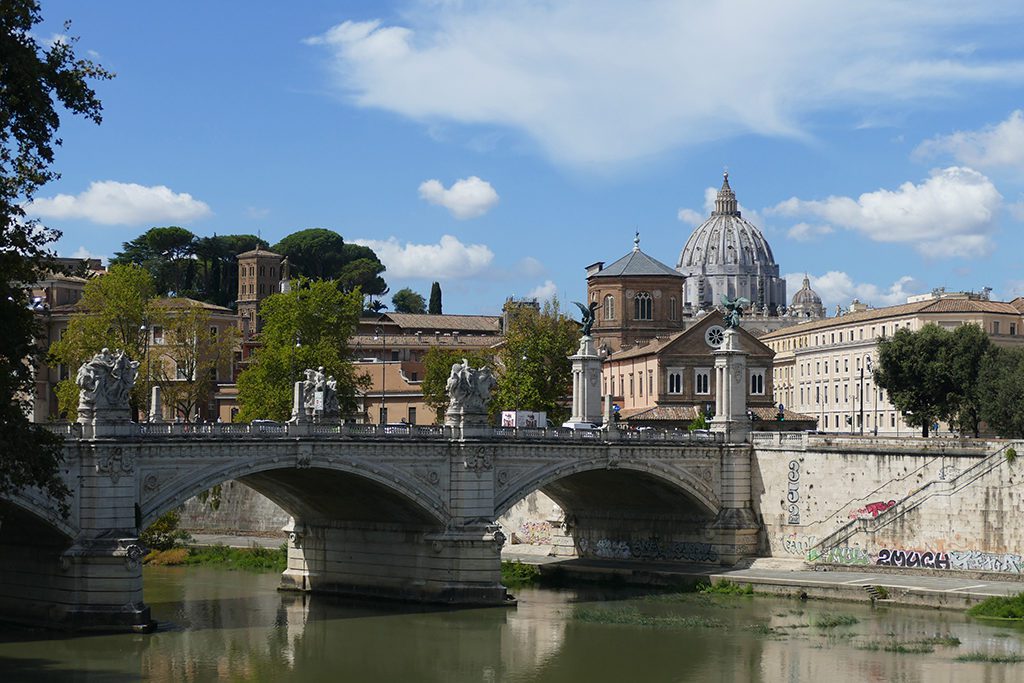
The neighborhoods on the banks of the Tiber were the most densely populated districts. Within the Aurelian Wall, this created distinctive contrasts. There were the abitato areas, the densely populated banks. And there was the disabitato, fallow, uninhabited spaces. This phenomenon characterized Rome from the 11th to the 19th century.
Today’s greatest attractions, like the Roman Forum, the Capitol, the Imperial Forums, and the Colosseum, were all in the disabitato.
Eventually, small settlements formed around Rome’s large churches outside the abitato. Fine examples are the Lateran Basilica and the Church of Santa Maria Maggiore.
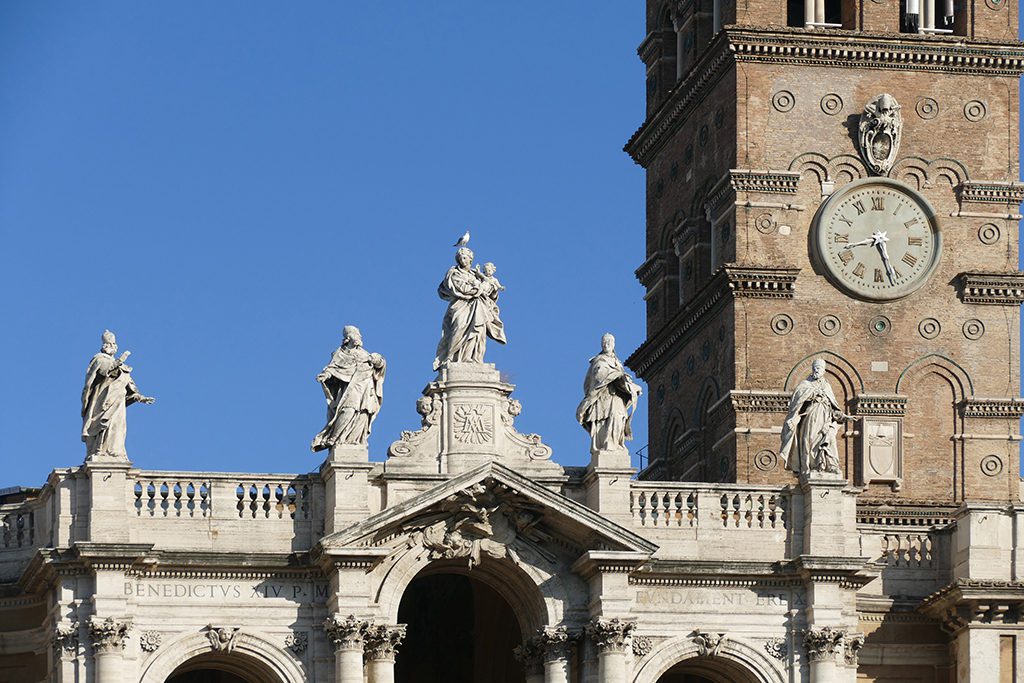
Santa Maria Maggiore, also known as Santa Maria della Neve, is one of Rome’s four papal basilicas. Moreover, it is one of the seven pilgrim churches. However, it stands in the extra-territorial district of the Vatican State, not far from the Roma Termini central train station.
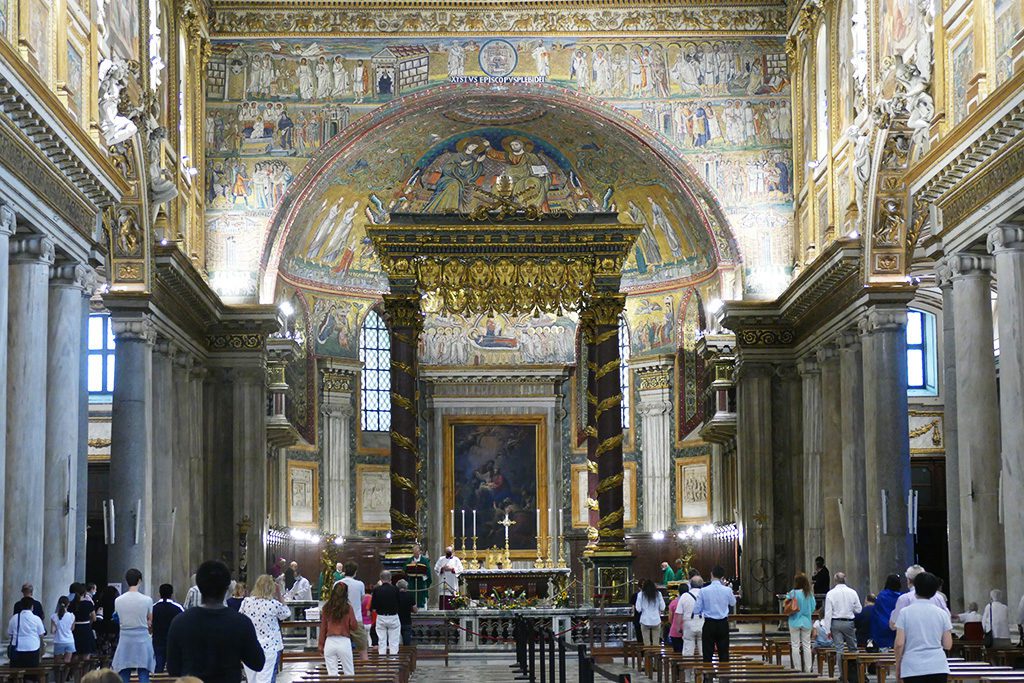
Since this house of worship is the most important one among the more than forty St. Mary’s churches in Rome, it’s called Maria Maggiore.
Renaissance and Early Modern Age
The Renaissance began in Italy in the late 14th century, hence, the 15th and 16th centuries formed the core period.
The essential characteristic was the rebirth of the spirit of the Antiquity when humanism was the formative intellectual movement. Hence, anthropocentric views replaced the spiritual darkness of the Middle Ages.
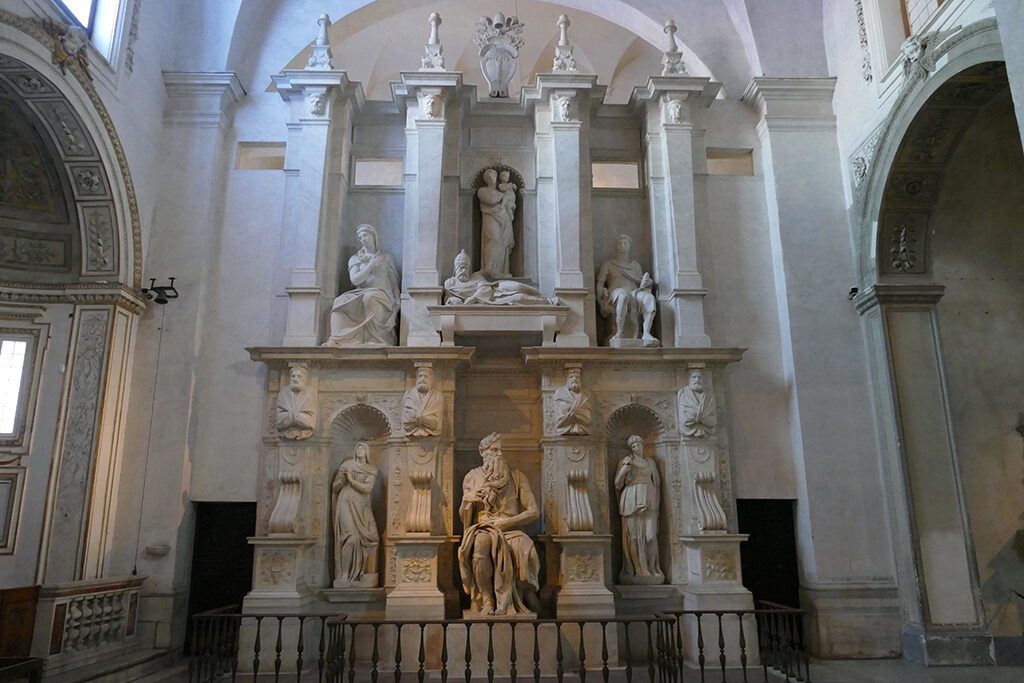
Powers emerged with enormous economic and cultural advantages. However, this occurred more in the independent regions such as the Duchy of Milan and the Republics of Venice and Florence.
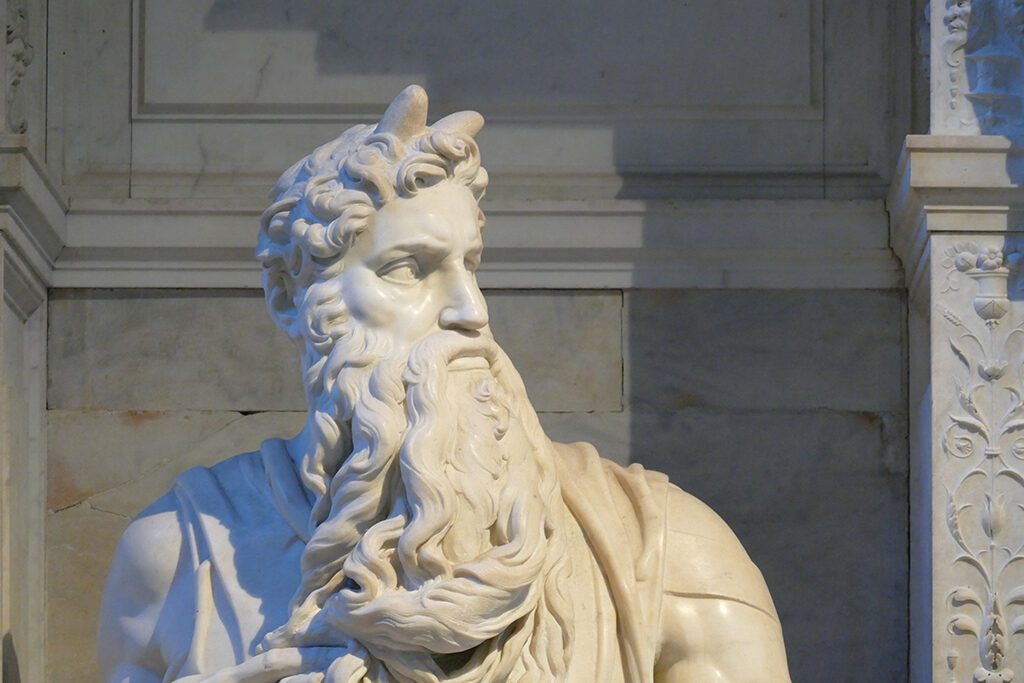
The decline of Italy began with the discovery of the New World. Then, trade shifted to the overseas colonies of Western European states. Politically, Italy became a pawn in the hands of foreign powers such as Spain, France, and the Austro-Hungarian Empire.
From the 16th to the 19th century, most of Italy was under foreign rule.
Becoming Italy
The Austro-Hungarian rule in Italy came to an end in the aftermath of the French Revolution. In 1806, the Holy Roman Empire was dissolved by the last emperor after its defeat at the Battle of Austerlitz.
The French Republic had spread republican principles. In 1849, France stationed troops in the Papal States. In 1870, however, France withdrew from Rome after declaring war on Prussia. The Italian military seized the opportunity and invaded the Papal States almost without a fight. It politically disempowered the Pope.
Italy annexed the Papal State by decree on October 6, 1870.
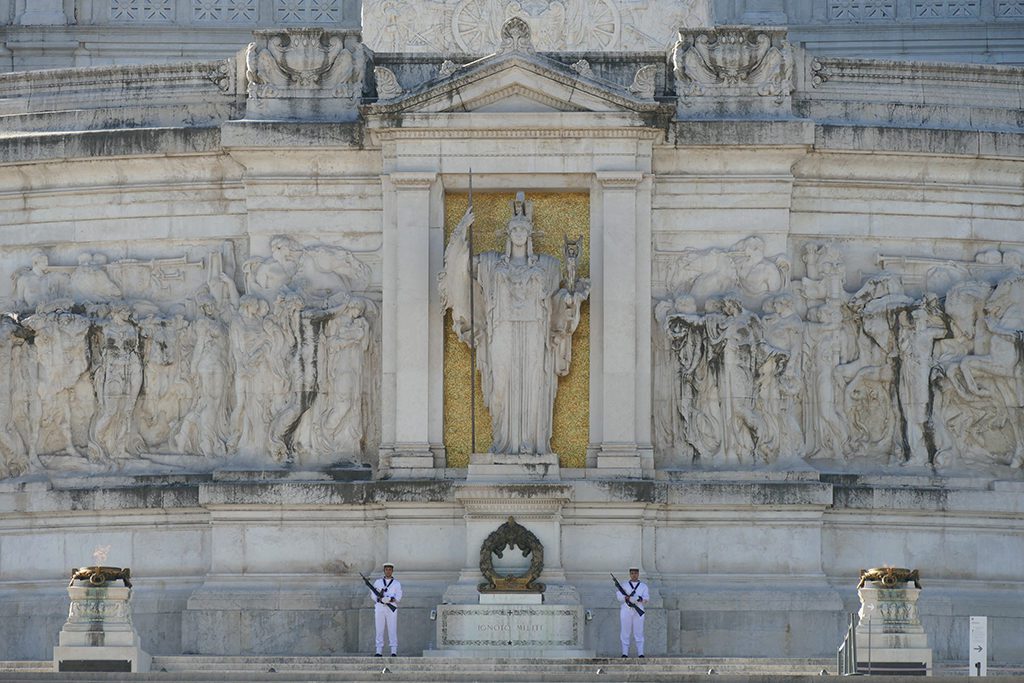
Today, it is one of the state symbols of the Italian Republic.
On January 26, 1871, Rome became the capital of the Italian nation. The inauguration of the Monumento Vittorio Emanuele II north of the Capitol Hill took place in 1911.
Fascism in Italy
In the wake of the social conflicts after WWI, the fascists under Benito Mussolini seized power in Italy. Under his rule, the discord between the state and church ended with the Lateran Treaty with the Holy See in 1929. An independent state of Vatican City was established.
Unlike for instance in Germany, Italy didn’t necessarily remove fascist inscriptions and symbols. Also, you can still spot the architectural and propaganda representation of fascism in the cityscape.
Roam Around Rome
I’m so excited to take you on a grand tour of this grand city! However, not only has it been impracticable to write a comprehensive roundup of Roman history. It is equally impossible to introduce you to all the amazing sights Rome has to offer.
Mind you, Rome has over 900 churches and more than 2,000 fountains alone! Hence, if you’ve been to Rome before, you might miss some of your favorite places on my Roman promenades. But hey, how about sharing your tips with my readers and me in the comment section below?
Also, I’m sure you’ll learn about some places that you haven’t known before. Keep in mind that you’ll need a lifetime to get to really know this Eternal City.
Anyway, I’ve tried to make things a bit easier, especially for first-timers. Therefore, I’ve structured the promenade neatly by using some of those iconic Roman piazze as central starting points. From there, I will introduce some of the important landmarks and the most beautiful spots in the area.
Along the Fori Imperiali
According to Rome’s history, we will start where it all began, obviously. Also, the area of the Fori Imperiali is in the very center of the city. All this makes it the perfect spot for commencing our exploration.
Imperial Forums
The Imperial Forums are four imperial terrains in the north and east of the Roman Forum. They were installed towards the end of the Roman Republic and in the early Imperial Era. Obviously, they carry their commissioners’ names – Caesar Forum, Augustus Forum, Nerva Forum, and Trajan’s Forum.
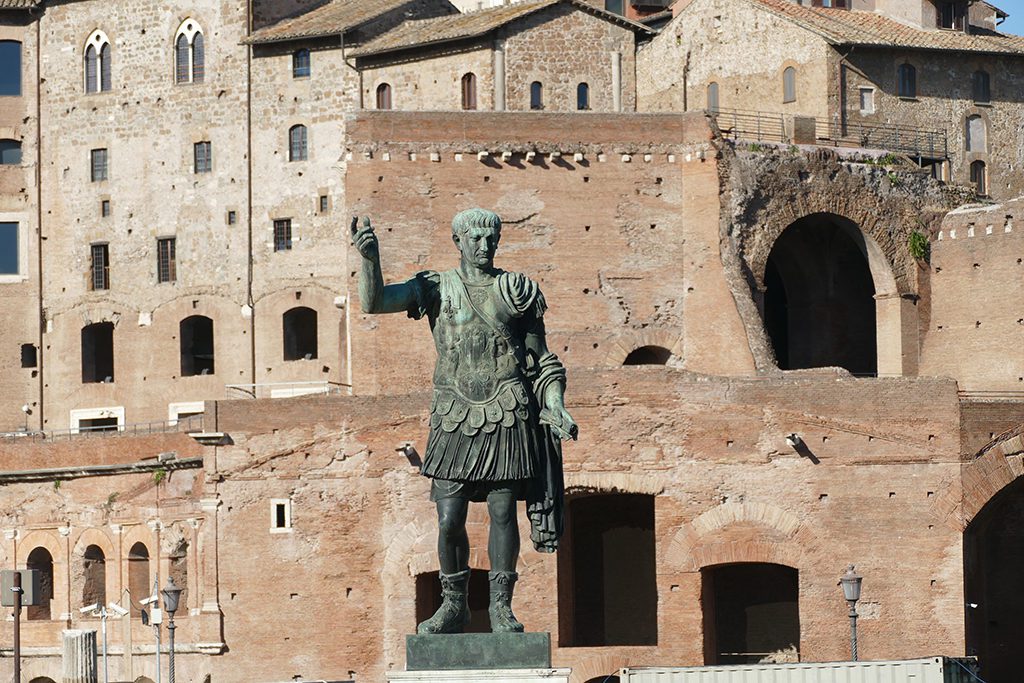
If you are a history buff, you’ll probably spend all your time in Rome in this neighborhood. There are uncountable temples, porticos, basilicas, and arches. The rocks’n’remnants and the dust of the past glory will make your head spin.
From 1924 to 1932, they built Via dei Fori Imperiali across the ancient ruins of the Imperial Forums. Benito Mussolini needed this broad boulevard for his military parades.
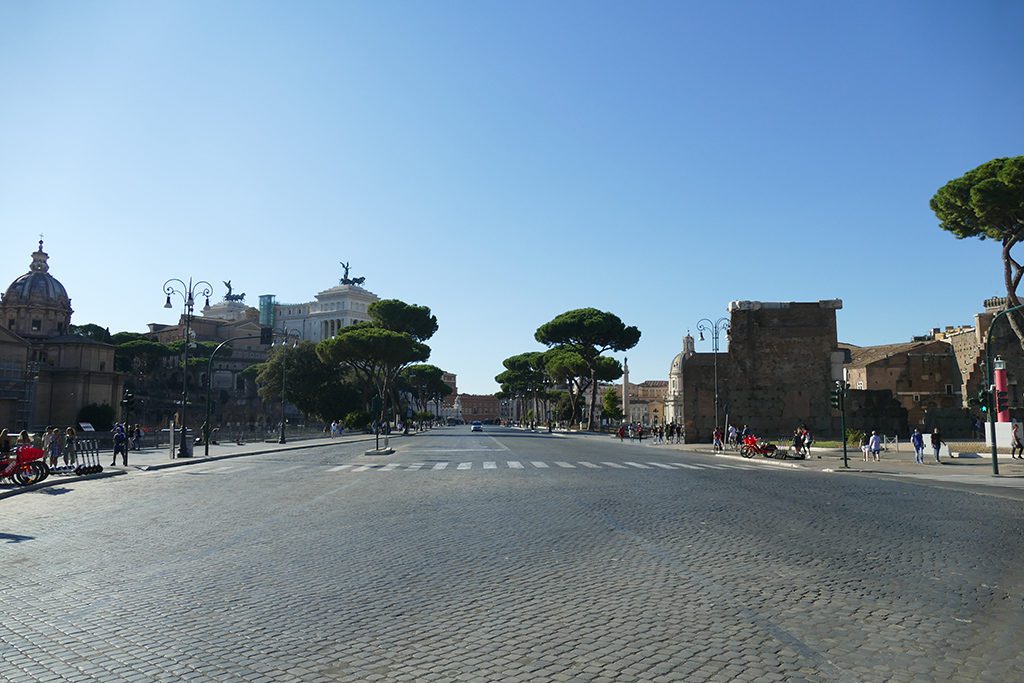
Colosseum
As you walk southeast on the Via dei Fori Imperiali, you’ll get to the Colosseum. This former Anfiteatro Flavio is not only the largest of all the amphitheaters stemming from ancient Rome. It is actually still the largest amphitheater worldwide!
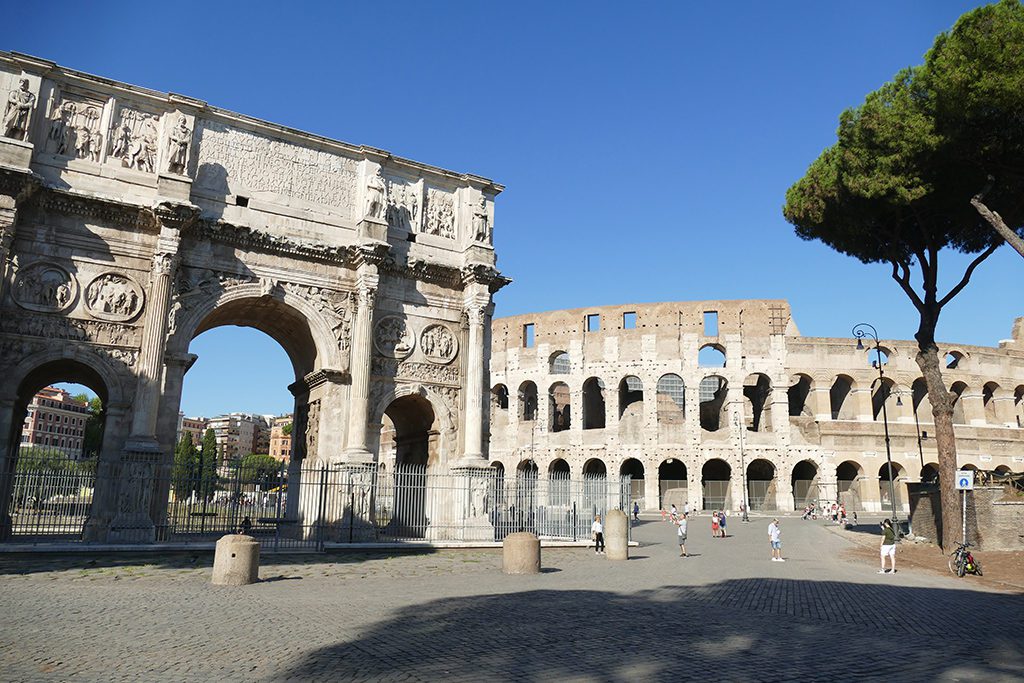
The Colosseum was erected between 72 and 80 AD. As you know from books and movies, it was here where the imperial family organized incredibly brutal events. Hard to imagine that the free residents felt entertained and amused by those inhumane games. By the way, entrance for them was free.
The entire area between the Colosseum and the Capitolino is basically an open-air museum. Hence, you can visit the premises only with a ticket.
I highly recommend reading the website of the Parco Archeologico del Colosseo very thoroughly. On that site, you get all the information you need to plan your visit. Most importantly, you can buy tickets online which saves you lots of time respectively makes a visit possible at all.
My Tip
With the Forums, the Palatine, the Colosseum – to name just the most important spots – you can spend days at the Archeological Park. So, if you are not a total history buff or if you simply don’t have so much time to spare, you can just follow my guide alongside the Via dei Fori Imperiali. Or you climb the Capitolino to get a comprehensive view of these fascinating sites. Remember, it’s an open archeological site with basically no view obstruction. Therefore, you can see and even take pictures and get all the fascinating facts from a guidebook or an app. For the latter, you might want to check out MyWoWo. That’s a very informative and fun app that covers many great cities around the world. It is available in seven languages.
Circus Maximus
To continue our visit, you have to walk down the Via San Gregorio. Then, turn right into the Via dei Cerchi.
This boulevard runs alongside the Circus Maximus. Today, it’s an uncharming green space. Only the remains of a stone marble arena remind you that long ago, up to 250,000 Romans watched exciting chariot races from their seats.
Bocca della Verità
While today, the Circus Maximus is not very exciting, just around the corner is one of Rome’s quirkiest must-see.
The Bocca della Verità – the Mouth of Truth – is a disk-shaped relief. You’ll find it on the left side in the portico of the Roman church of Santa Maria in Cosmedin. The bocca should be about 2,000 years old. However, it has been on the porch of the church only since 1632.
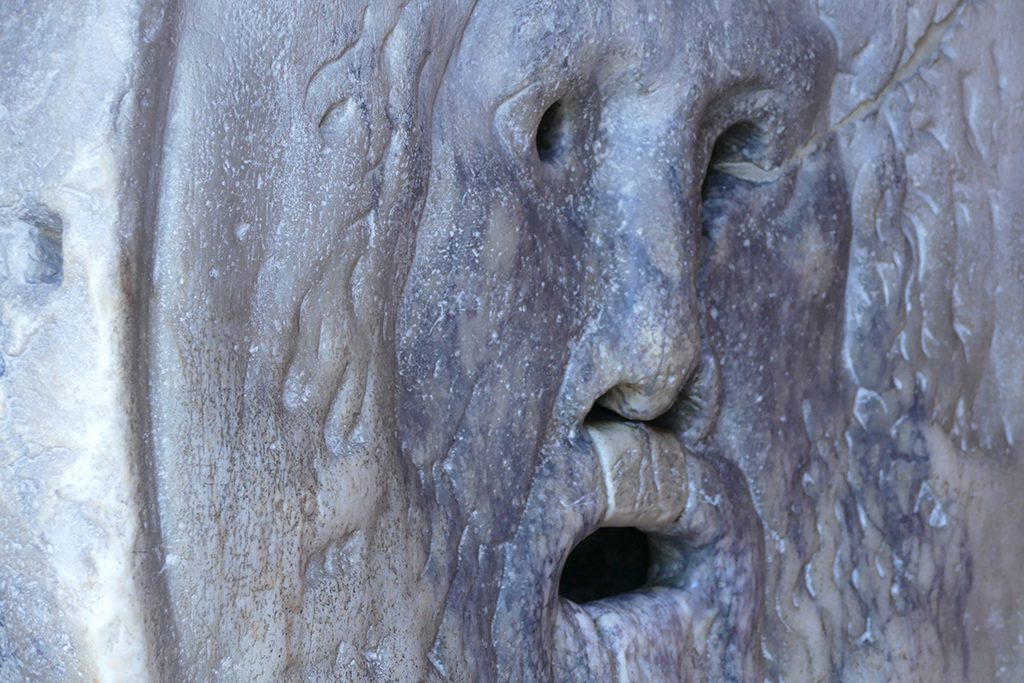
This landmark gained fame by the movie Roman Holiday starring Audrey Hepburn and Gregory Peck. Since then, it’s been a major tourist attraction.
According to the legend, anyone who puts his hand in the mouth and lies will have it bitten off.
The Legend of a Mouth
In the 15th century, the mouth was probably used for the examination of defendants. An executioner hid behind the mouth. Those who were found innocent were able to withdraw their hand unharmed. But the convicted ones had their hands cut off.
However, it’s unlikely that this has always been the Bocca della Verita’s purpose. It’s more likely that the disk once served as a manhole cover. According to its present appearance, it seems that people have walked on it for a long time. Also, it has five holes, namely the eyes, the nostrils, and the mouth. These enabled the water to drain into the Cloaca Maxima, which is located at the Santa Maria in Cosmedin church.
Across the Isola Tiberina
With 406 kilometers, the Tiber is Italy’s third longest river. In Rome, over 30 bridges cross the Tiber. Ponte Fabricio, built in 62 BC, is the oldest one. However, it doesn’t cross the Tiber all the way. Actually, it spans from the left bank to the Isola Tiberina, the picturesque Tiber Island.
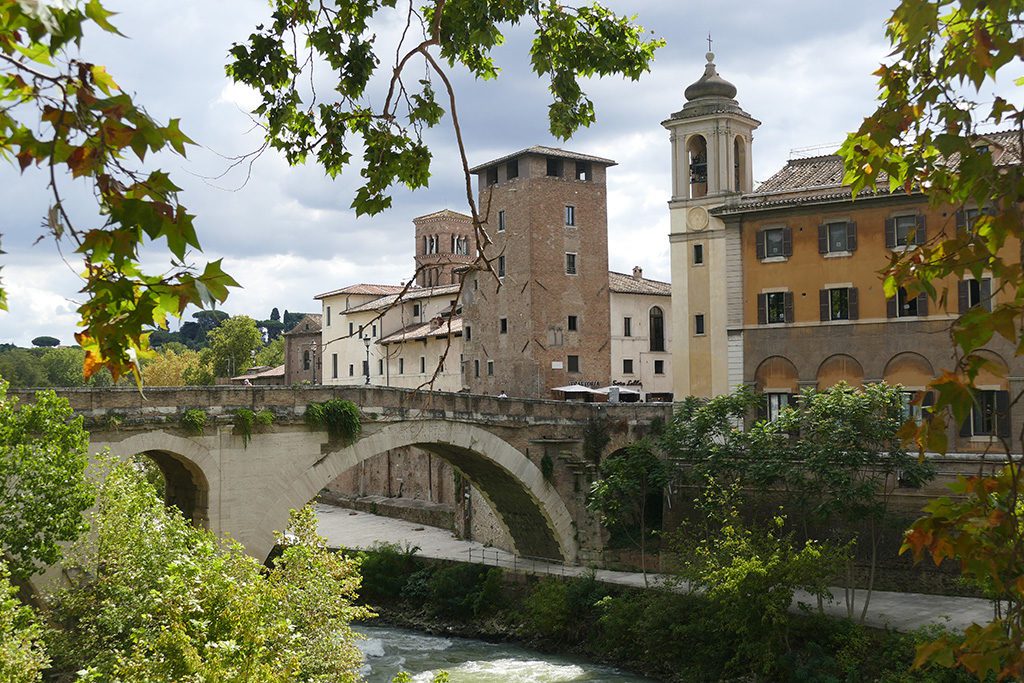
This island is, metaphorically and literally, the very center of the city of Rome. Its location made it one of the most important factors in the creation of Rome.
The Isle of the Sick’N’Tired
Around 290 BC, an epidemic struck the city – see, the mess we’re currently in isn’t even new. Following some superstitious mumbo-jumbo, they built a temple on the island. Porticos and other structures were added. This way, sick pilgrims found shelter. They were seeking miraculous cures on the premises. Several inscriptions attest to miraculous healings, votive tablets, and consecration gifts to the deity.
Also, masters sent their sick slaves to the island when the care became too burdensome for them. Actually, Emperor Claudius declared all slaves who were healed on the island free.
Today, the island houses the Basilica of San Bartolomeo all’Isola. Also, a hospital run by the Order of the Brothers of Mercy.
Jewish Rome
Also, Rome’s Jewish community has used the island since the late 19th century.
Actually, there was a Jewish community in Rome since pre-Christian times. The area where most of the Jews lived was on the left bank of the Tiber.
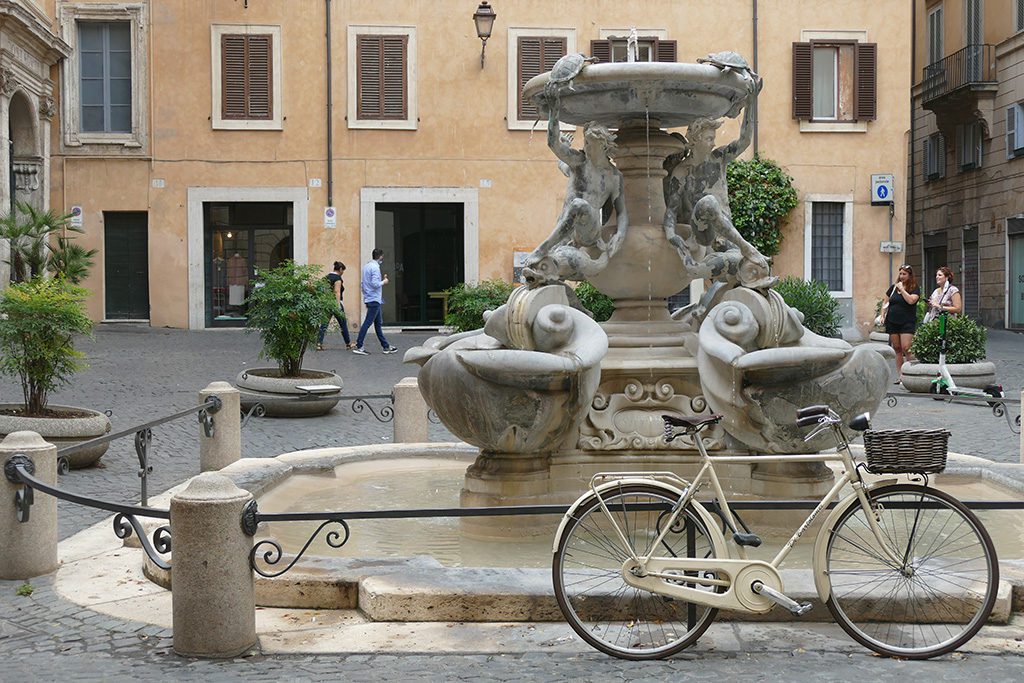
In 1555, Pope Paul IV set up an enclosed living area for the Jews, a ghetto. It was named after the Jewish district in Venice. At the beginning of the 19th century, the ghetto had about 10,000 inhabitants. This made it one of the largest Jewish neighborhoods in Europe.
Galleria Spada
A five-minute walk west of the Piazza Mattei is another one of Rome’s wonders.
Somewhat hidden at the Piazza Capo di Ferro is the Palazzo Spada. Architect Bartolomeo Baronino built the palace in the 16th century. Bernardino Spada bought it in 1623 – hence the Palazzo’s name.
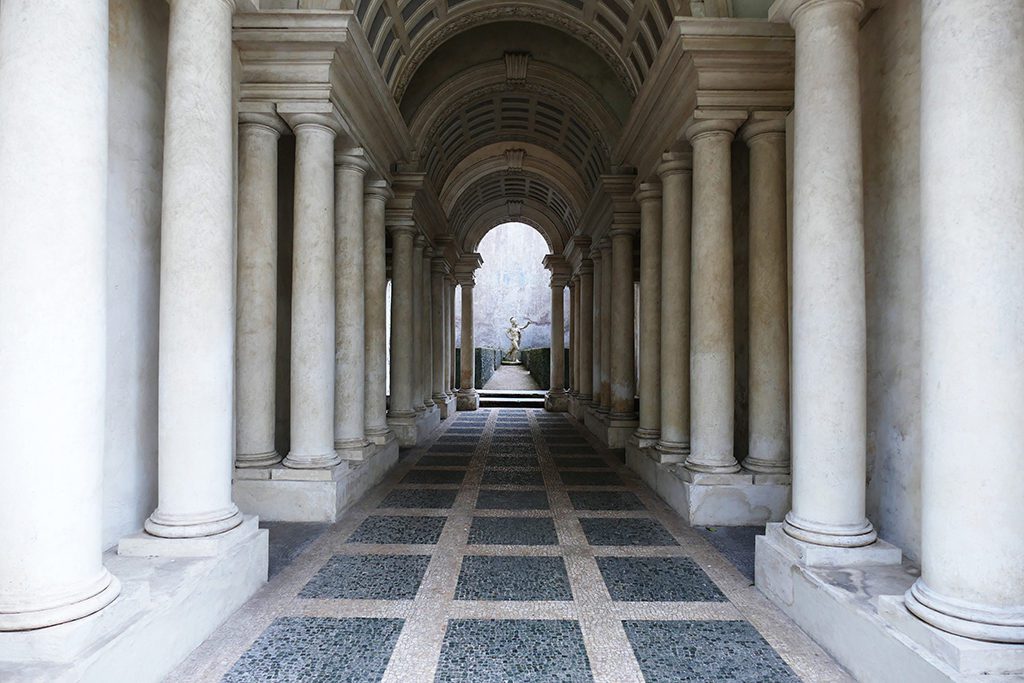
It gets narrower from the inner courtyard, and the distance between the columns decreases. This way, you have the impression of seeing a long and wide space. Nevertheless, the arrangement is only nine meters long.
From 1635, Francesco Borromini restored the facade and laid out the famous perspective corridor. It is one of the most remarkable baroque optical illusions.
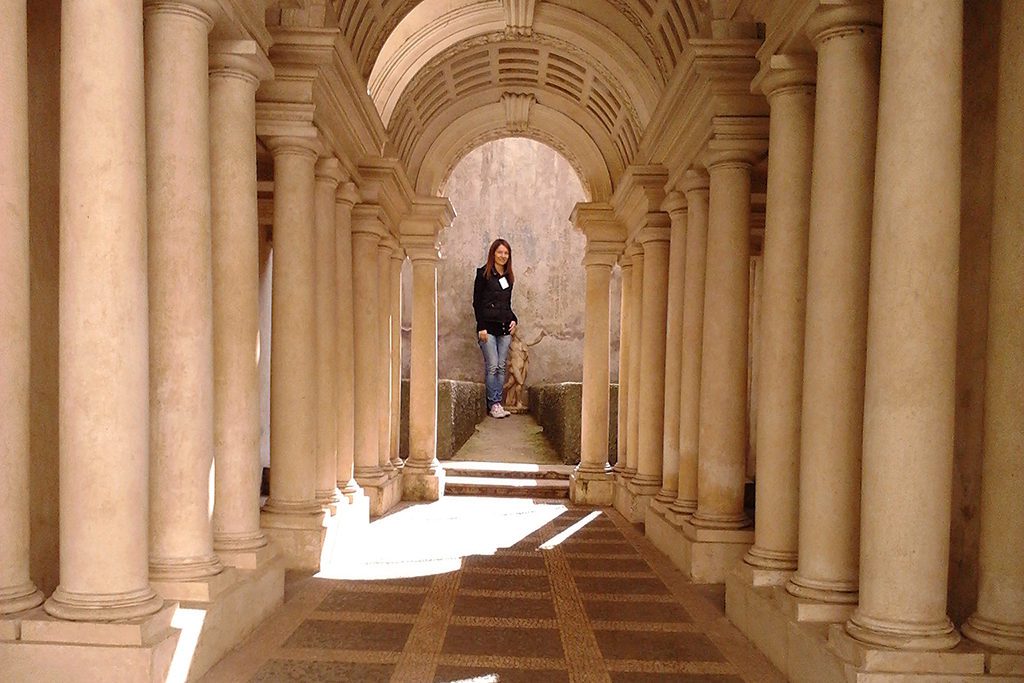
However, as you visit, they leave the best for last. First, you have to visit the Baroque art collection inside the historic rooms.
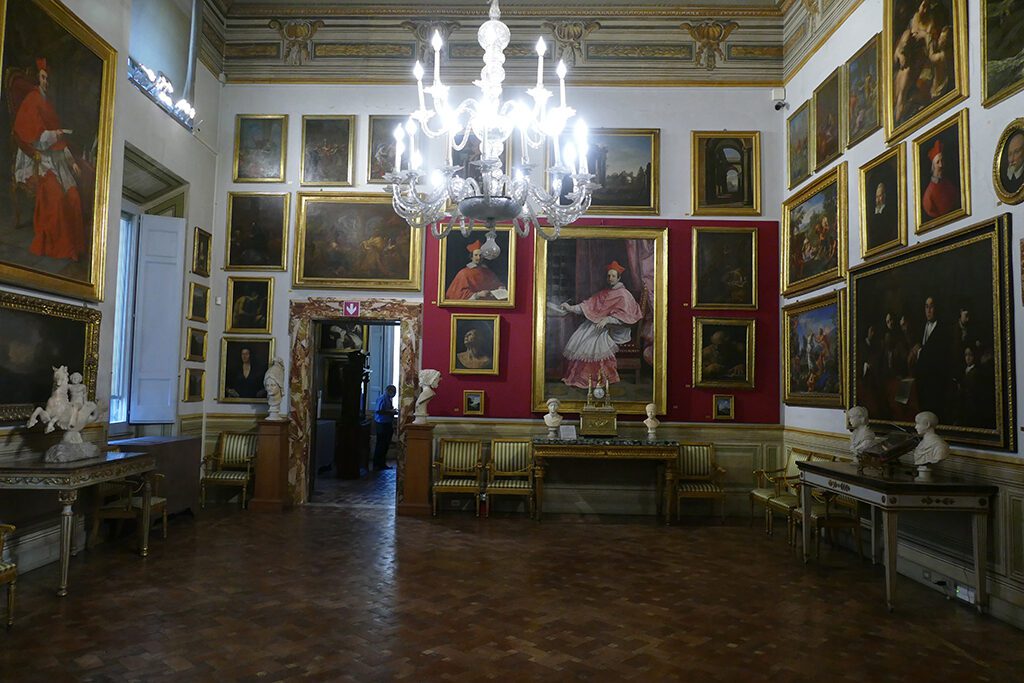
You’ll get to see for instance Rubens, Caravaggio, and Artemisia Gentileschi, Orazio Gentileschi’s daughter who was the first female member of the Accademia di Arte del Disegno in Florence.
At Trastevere
Trastevere – stemming from the Latin trans Tiberim, which translates to across the Tiber – was once Rome’s working-class neighborhood on the right, western bank of the Tiber.
Throughout history, Trastevere has remained a multicultural district since immigrants came to this area for the relatively cheaper housing.
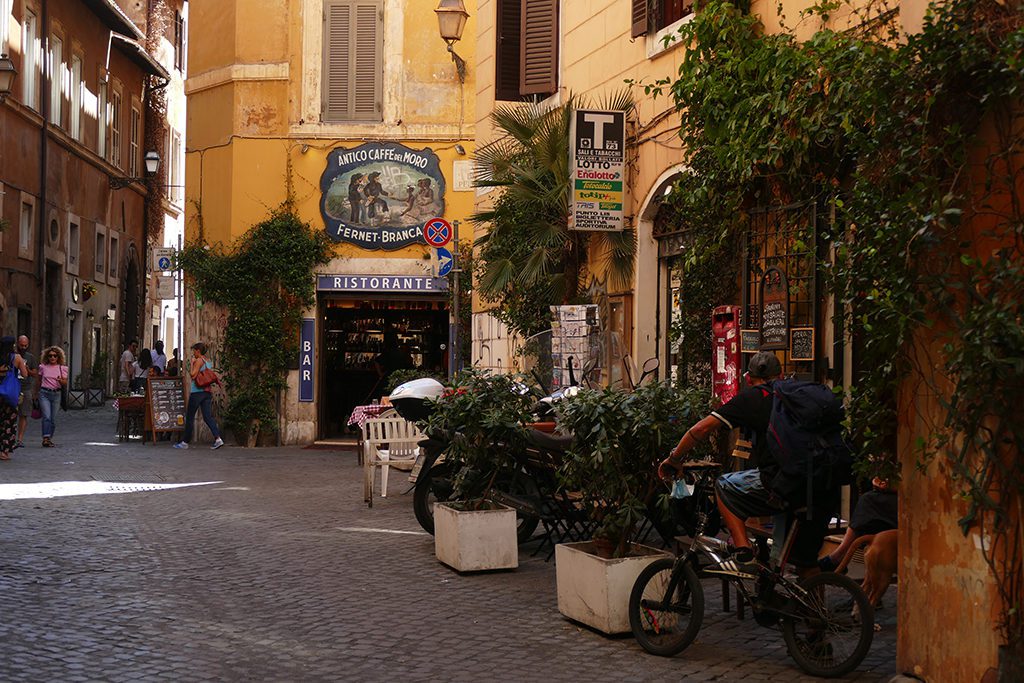
For the longest time, it was the most pristine and authentic district of the city. However, a disproportionately large number of old residential buildings and narrow streets have made Trastevere a tourist magnet. Consequently, since the 1970s, the neighborhood has been severely gentrified.
Porta Portese and Piazza dei Mercanti
One of the most popular spots in Trastevere for locals and tourists alike is the flea market that takes place every Sunday morning around the Porta Portese.
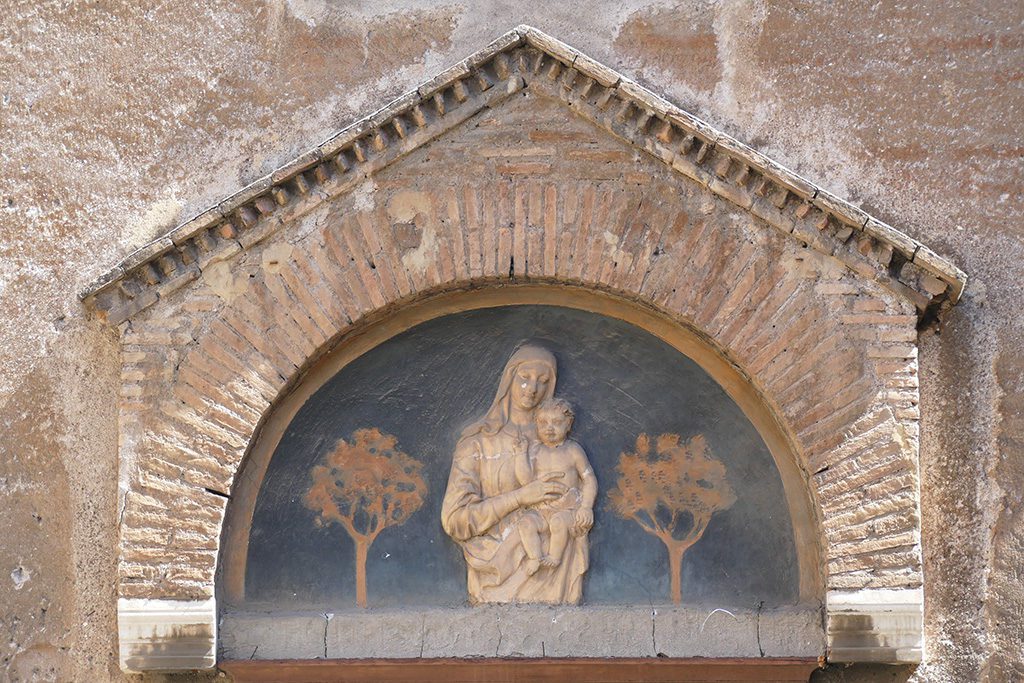
Walking up north, you’ll get to one of the most idyllic parts of Trastevere, the Piazza dei Mercanti. Apart from a gastronomic über-choice, there are some beautiful old churches such as the Basilica di Santa Cecilia in Trastevere with Cavallini’s masterpiece fresco as well as a beautiful sculpture of Saint Cecilia. Also, there is the Ospitale di Santa Francesca Romana. It used to be a lodging house, designed in the 14th century as a refuge for the sick’n’tired. Today, it is a small yet fascinating museum.
My Tip
For most of us visitors, all those beautiful churches housing sculptures by Michelangelo and paintings by Caravaggio are rather fancy museums. However, in a very Catholic country like Italy, they are full-functioning houses of worship. Hence, many have opening hours that do not match the ordinary traveller’s itinerary. For instance, many churches are on lunch break between noon and maybe 4 p.m. So if you want to visit certain churches, check their opening hours. Normally, you’ll find them on the internet – sometimes right on Google Maps.
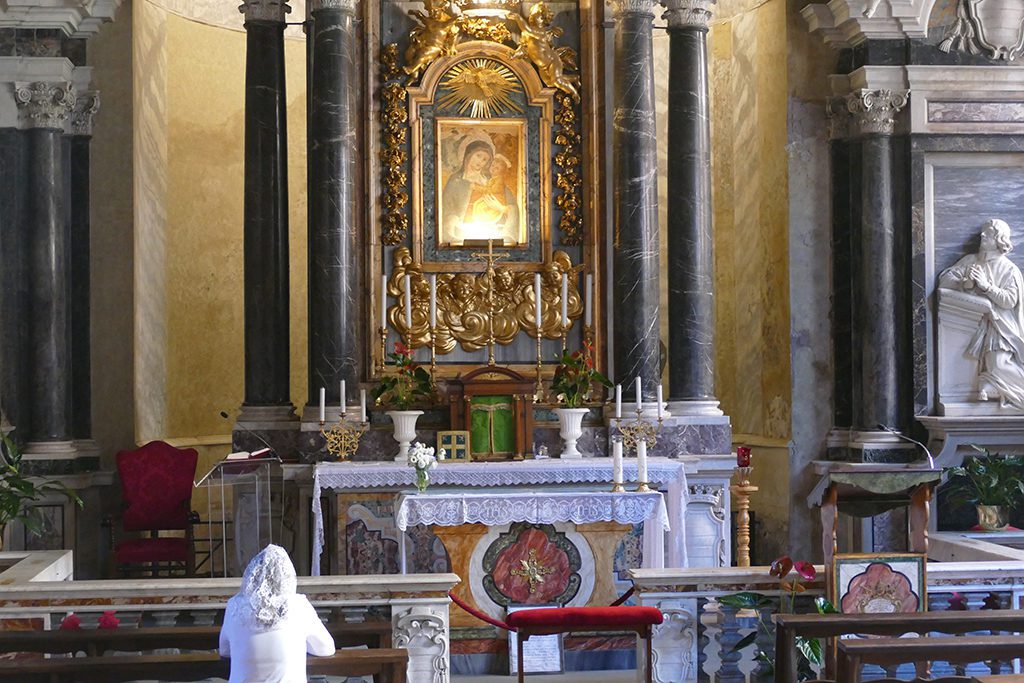
Nevertheless, always keep in mind that they often forbid touristy visits during service.
Piazza Santa Maria in Trastevere
Walking straight to the west, crossing the broad’n’ugly Viale di Trastevere, squeezing through all the narrow alleys takes you right to the quarter’s core, the Piazza Santa Maria in Trastevere.
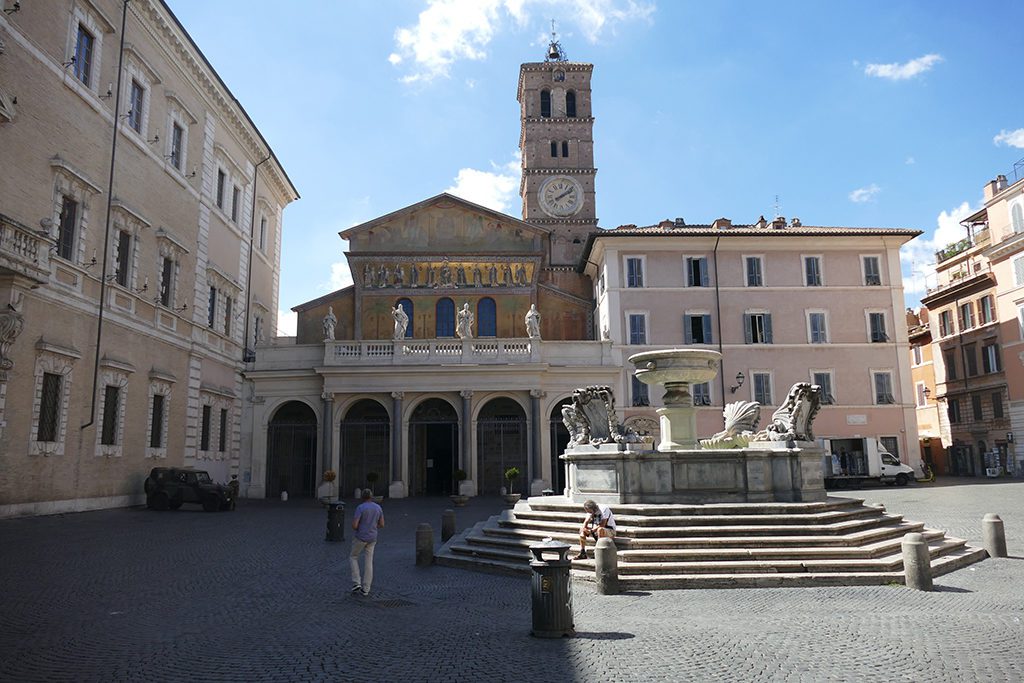
A great square to enjoy a refreshment while rubbing shoulders with Romans – and, of course, some fellow travellers. But most importantly, it’s for the Santa Maria in Trastevere church, Rome’s oldest St. Mary’s Church which has been a Roman titular church since the early 12th century.
Already on the outside, the building is a piece of art with its golden mosaic facade and the four statues of saints. But let me tell you, the inside decor will just blow you away.
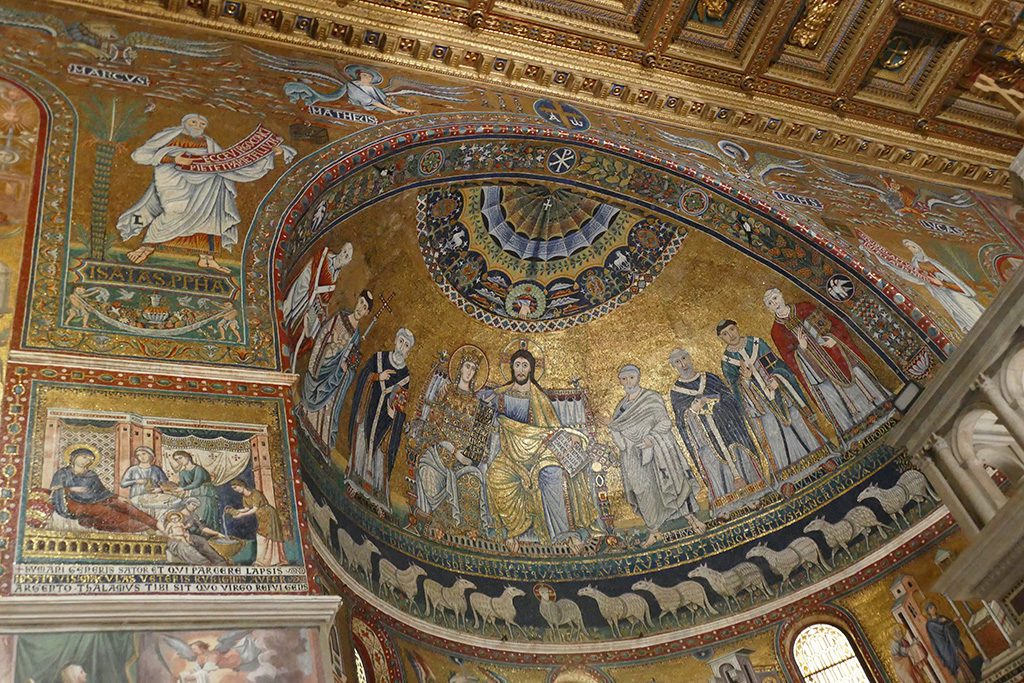
Pietro Cavallini created the mosaics on the triumphal arch and in the lower apse. They explain the life of Mary in six pictures. From the birth of the Virgin over the Annunciation, the birth of Jesus, the adoration of the wise, the offering of Jesus in the temple, to her death.
Porta Settimiana
Yes, the gentrification and mostly the popularity among visitors have transformed Trastevere into some sort of Italy-themed amusement park. However, while the Bohemian-Proletarian spirit is slowly fading away, the charming buildings and picturesque alleys still remain. A stroll through Trastevere is still mesmerizing.
So, coming from the Piazza Santa Maria in Trastevere, just dive into the net of alluring streets and alleys and walk north towards the Porta Settimiana, an archway from the 3rd century.
My Tip
If you need a snack, turn right before the Porta Settimiana. Across from the Church of Saint Dorothea, hidden in a corner is the entrance to the teeny tiny Pizzeria La Boccaccia.

It’s basically a large hole in the wall where they sell some of the best pizza al taglio. That means that you determine how large a piece of their delicious pizzas you want and then you pay according to the weight. You can enjoy your pizza right on the spot or on the go.
Once you’ve finished your pizza, continue through the Porta Settimiana on Via della Lungara northwards.
On the next large block, two amazing artistic treasure boxes waiting for you to open.
Palazzo Corsini
The Riario family commissioned the villa in the 15th century. In the 18th century, the Corsini family remodeled it in a Baroque fashion.
In 1736, Pope Clement XII’s nephew, Cardinal Neri Maria Corsini from Florence, acquired the palace.
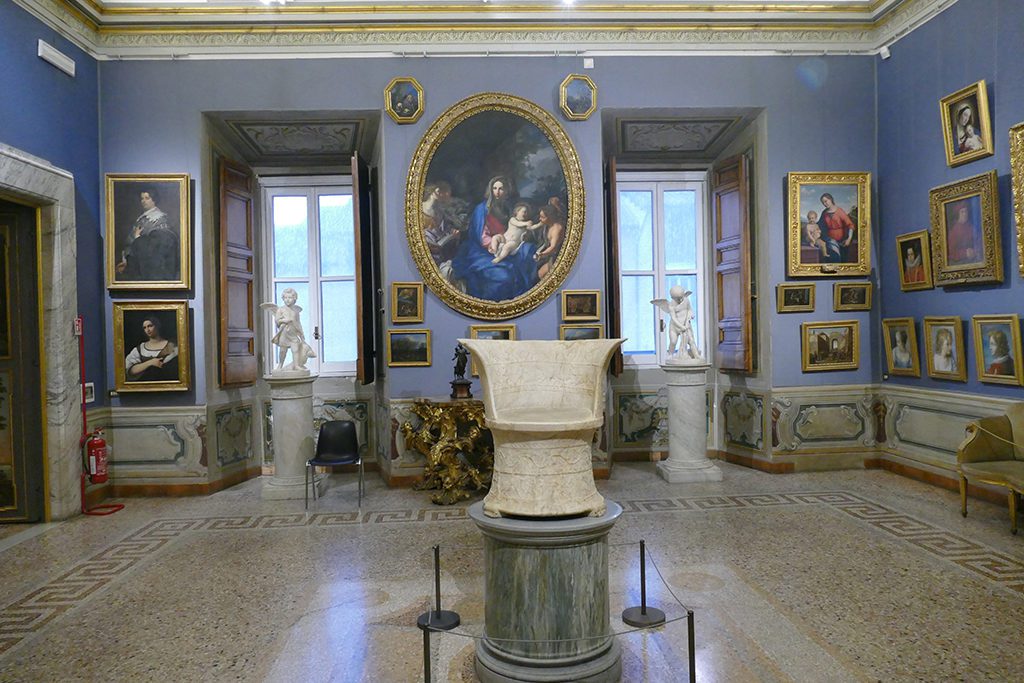
Today, the palace houses the Accademia Nazionale dei Lincei as well as the Galleria Nazionale d’Arte Antica di Palazzo Corsini.
At this gallery, you get to admire works by Beato Angelico, Caravaggio, Rubens, Jusepe de Ribera, and many, many more.
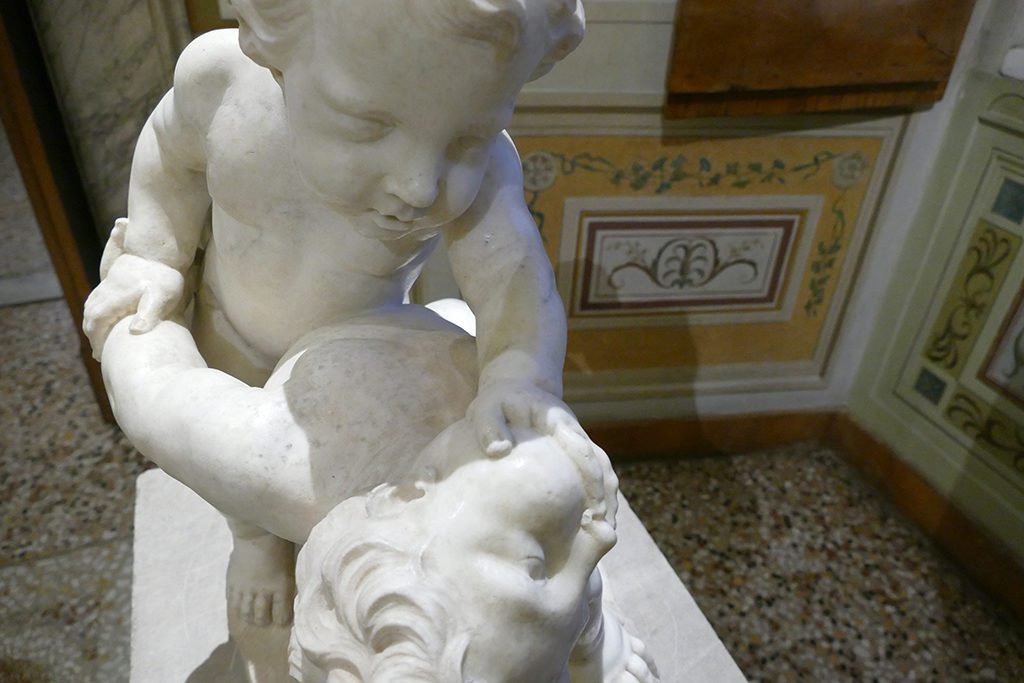
The gardens, however, are part of the Orto Botanica dell’Università di Roma, Rome’s botanic garden.
Note
The galleries at the Palazzo Corsini are only one part of the Gallerie Nazionale, the National Galleries of Ancient Art. The other venue is the Palazzo Barberini, which I’m introducing in the chapter Around Piazza Barberini below. For the price of 15 €uros, you can visit each venue once within ten days.
You can get further information on their website and buy tickets online for a small extra fee.
Villa Farnesina
Right across the street from the Palazzo Corsini is another magnificent, albeit, not that known venue, the Villa Farnesina.
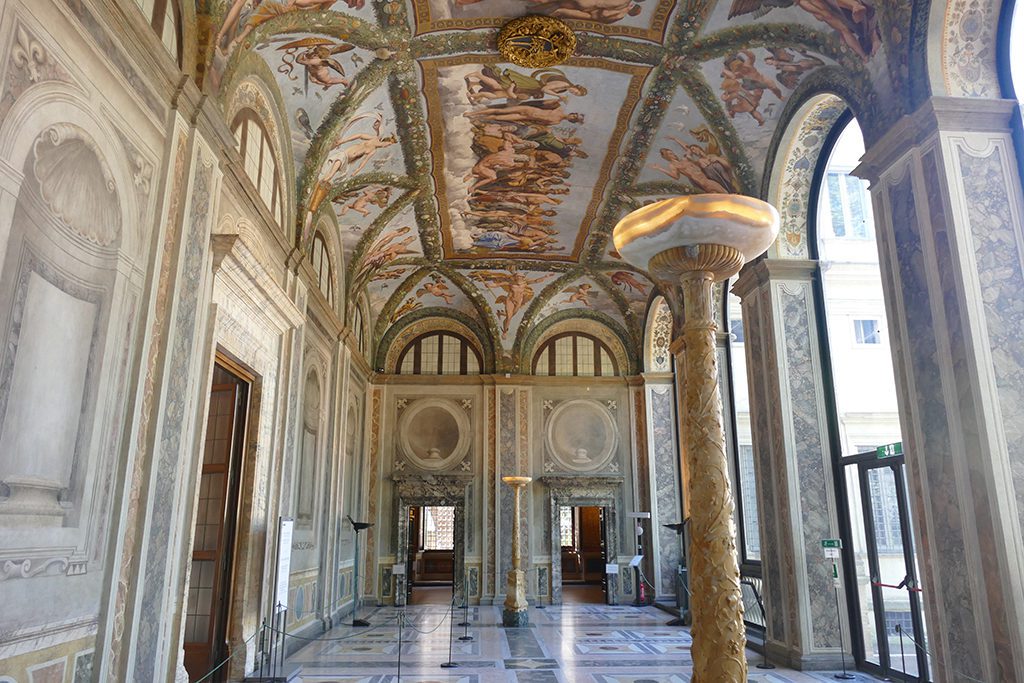
The Tuscan banker and businessman Agostino Chigi commissioned the Villa in the early 16th century. Built by Baldassare Peruzzi, it proves the commissioner’s wealth as well as his passion for humanistic ideas and exquisite art.
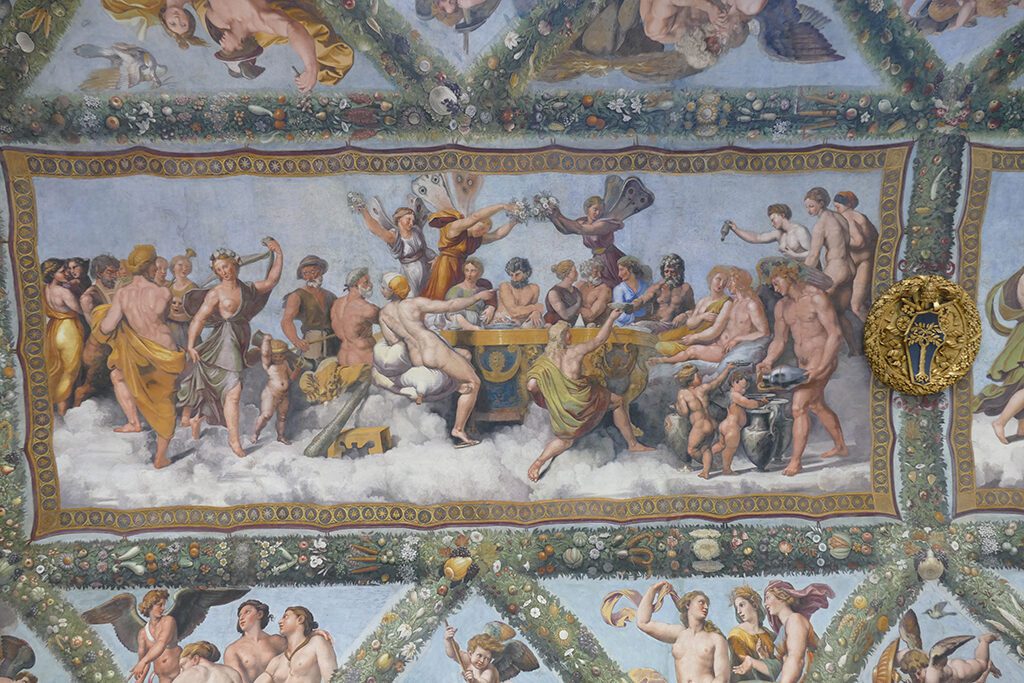
Hence, famous artists of the early 16th century such as Raphael, Sebastiano del Piombo, and also Peruzzi himself decorated the rooms with their amazing frescoes.
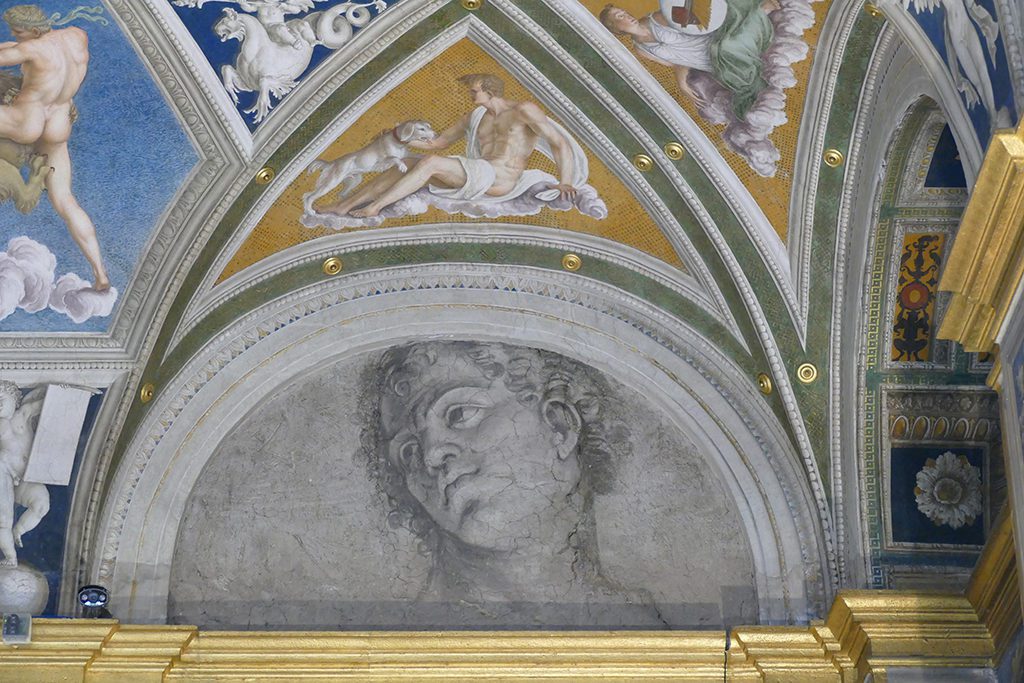
In 1579, however, the villa came into the possession of Cardinal Alessandro Farnese, from whom it then took its name.
Visiting the Villa
It consists of only six halls, but the frescoes on the walls and the ceilings are absolute masterpieces.
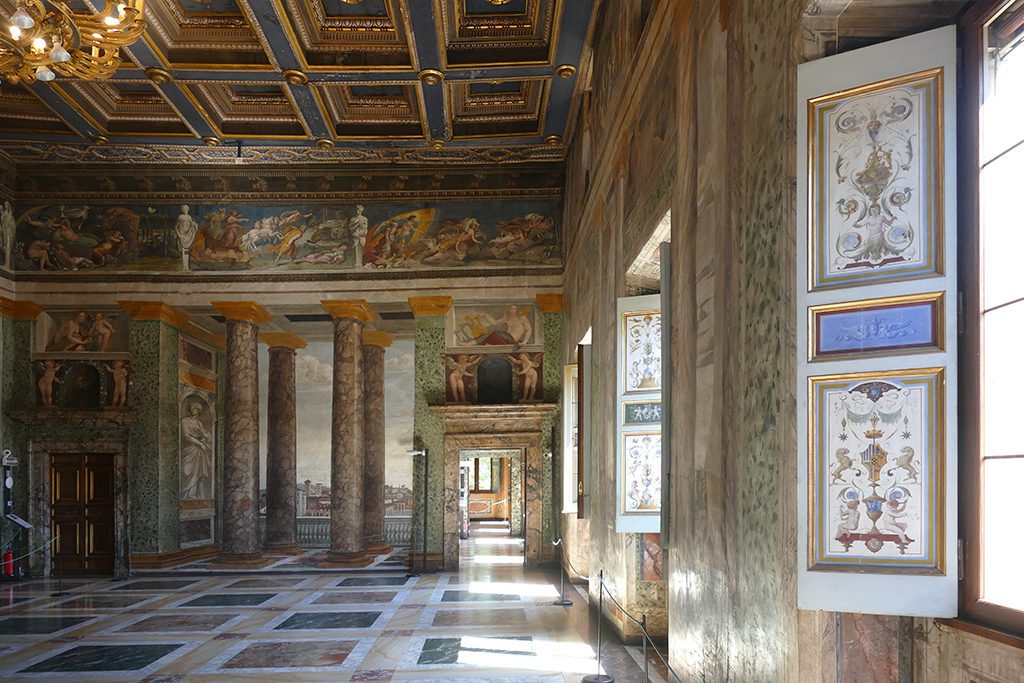
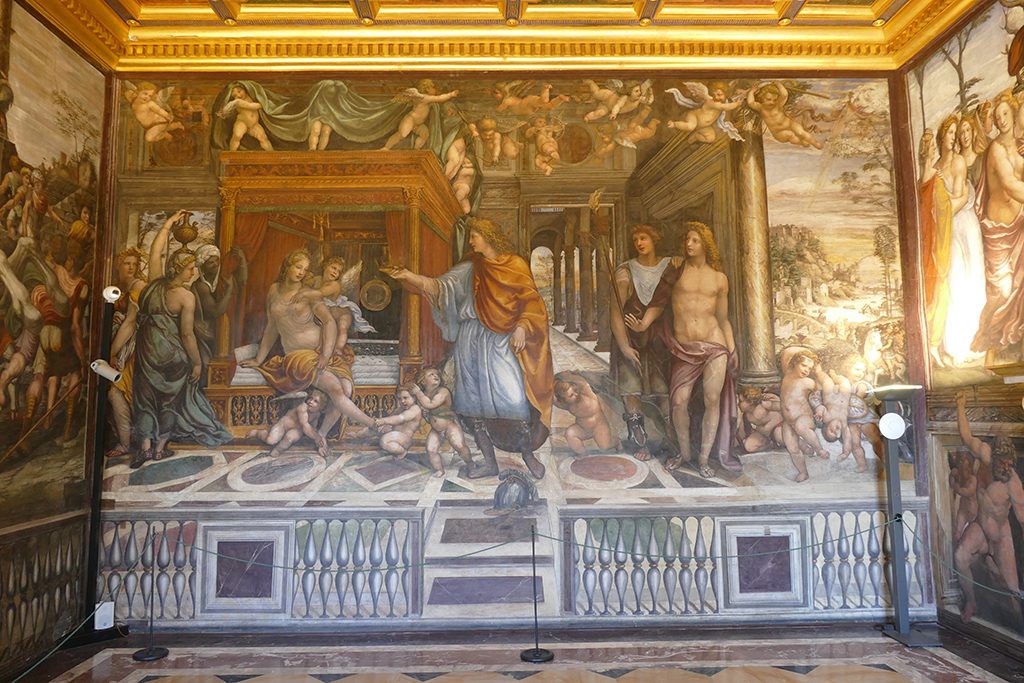
With its stylistic harmony and elegance, the Villa Farnesina is one of the finest examples of the high Renaissance in Rome and therefore absolutely worth the pretty high entrance fee of 10 €uros.
Also, on the presentation of your admission ticket to the Vatican Museums within 7 days after your visit, you’ll get a small discount at the Villa Farnesina.
Around Piazza di San Pietro
Strolling alongside the river Tiber from the Villa Farnesina up north, just turn left at the Vittorio Emanuele II bridge. From here, the broad and impressive Borgo Santo Spirito leads straight to Saint Peter’s Square.
Saint Peter’s Square was laid out by the Gian Lorenzo Bernini between 1656 and 1667 under Pope Alexander VII in front of Saint Peter’s Basilica. Hence, it is on the territory of the Vatican City. In fact, the colonnades form the state border between the Vatican City and Italy.
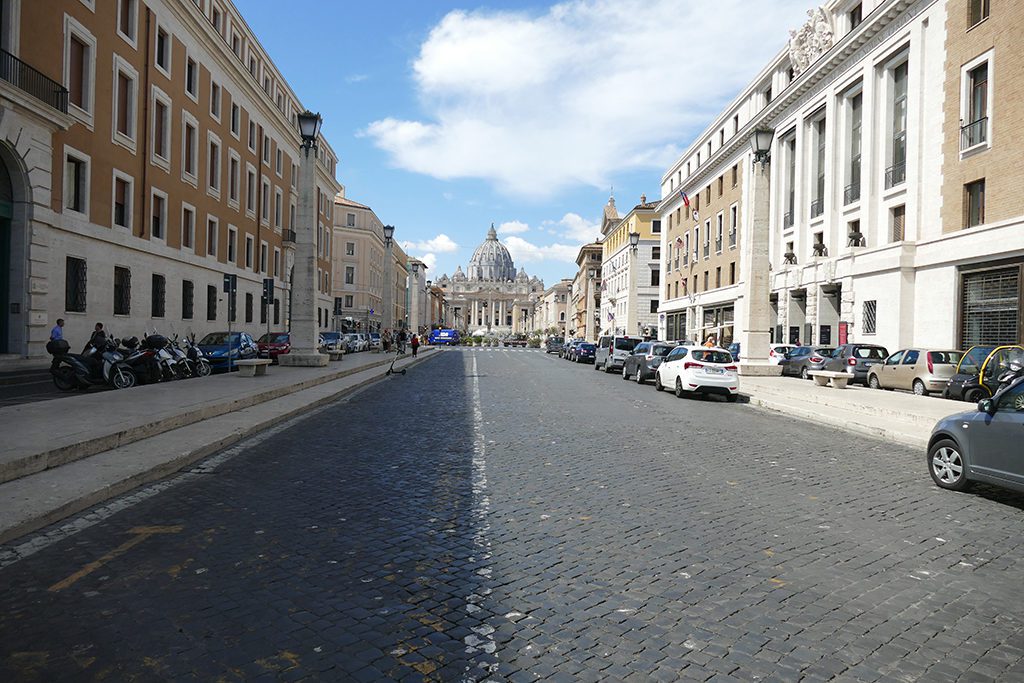
These colonnades consist of 284 fifteen-meter-high columns of the Tuscan order, arranged in four rows.
All Saints
140 statues of saints, each of them 3.2 meters high, are looking down on the visitors from the parapet. Holy moly, I didn’t even know there were this many Saints.
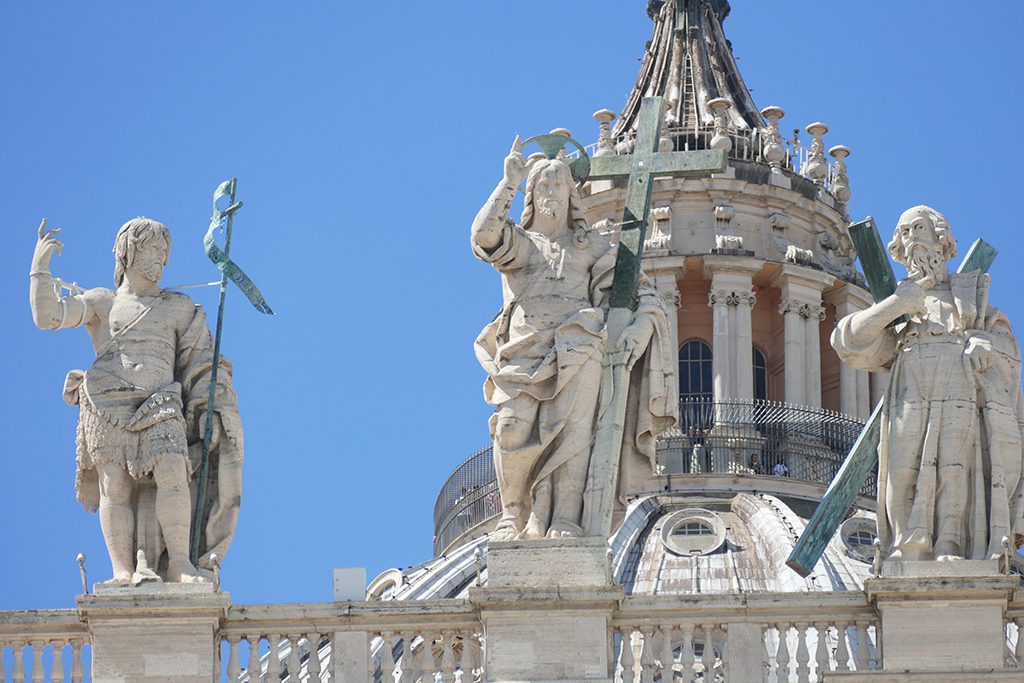
The paving of the square lowers towards the middle which allows overlooking the crowd.
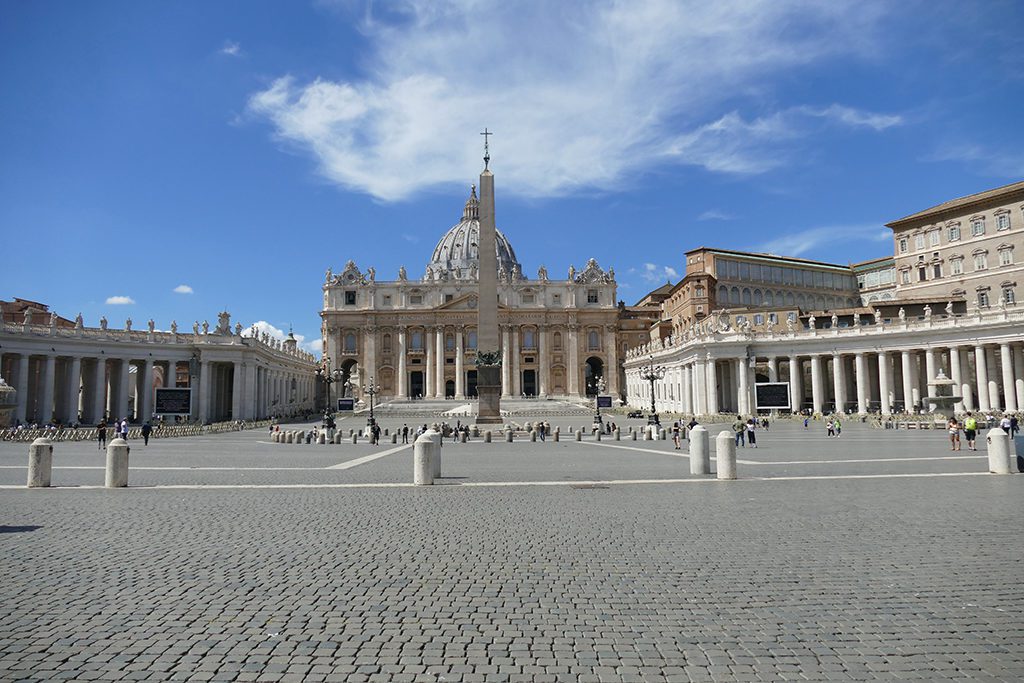
As I was there, it was much less crowded…
In the square’s very center rises the so-called Vatican Obelisk 25 meters high. It was previously in Nero’s Circus and dates back to the 13th century BC.
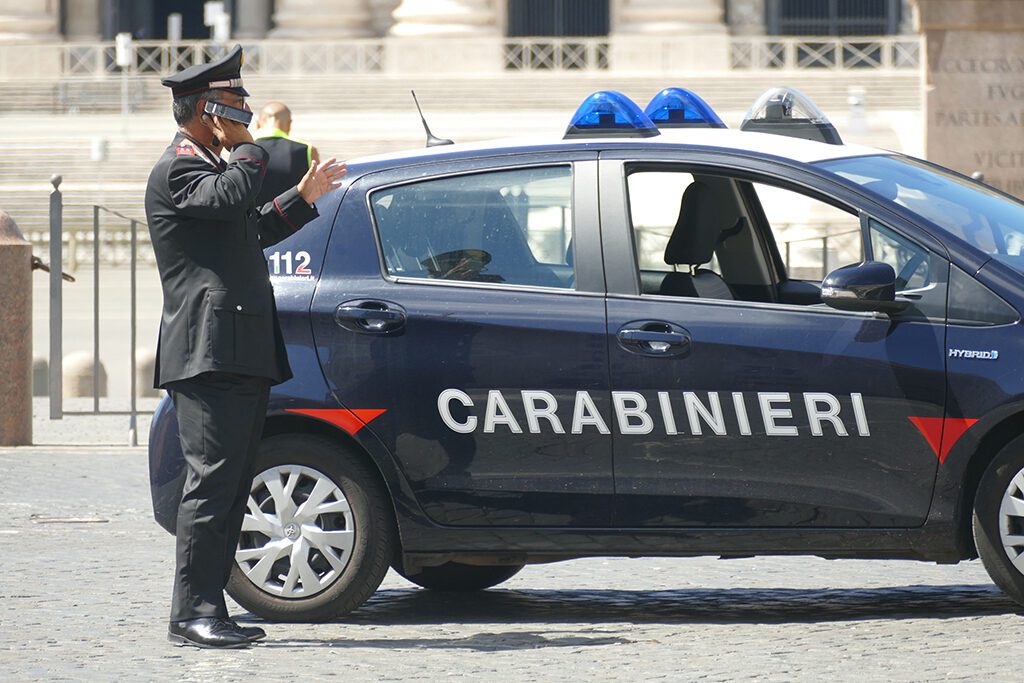
To the north of the obelisk is a fountain designed by Carlo Maderno, and to the south a font by the great Bernini himself.
The Vatican City
In 1929, the Kingdom of Italy and the Holy See signed an agreement to establish the Vatican City. Since then, with only 0.44 square kilometers, this terrain has been the world’s smallest state.
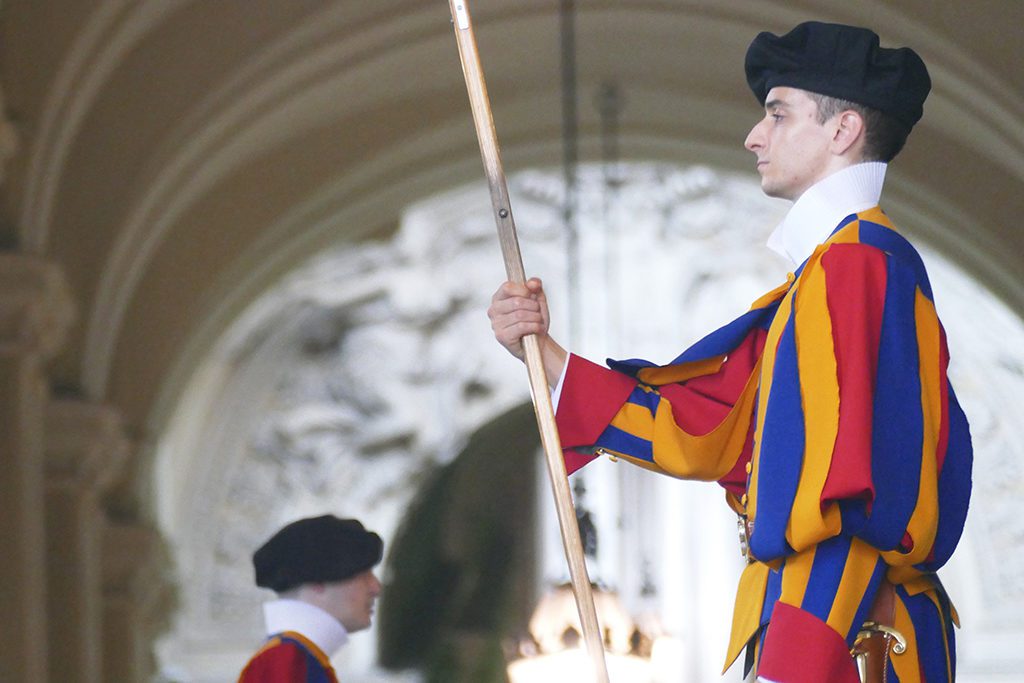
The state territory is, obviously, surrounded by the Roman urban area. On the small terrain are the Papal Palace, Saint Peter’s Square with the basilica, the Vatican Museums, the Vatican Gardens, the Governor’s Palace, the barracks of the Swiss Guard, the Vatican Radio, as well as other administration buildings.
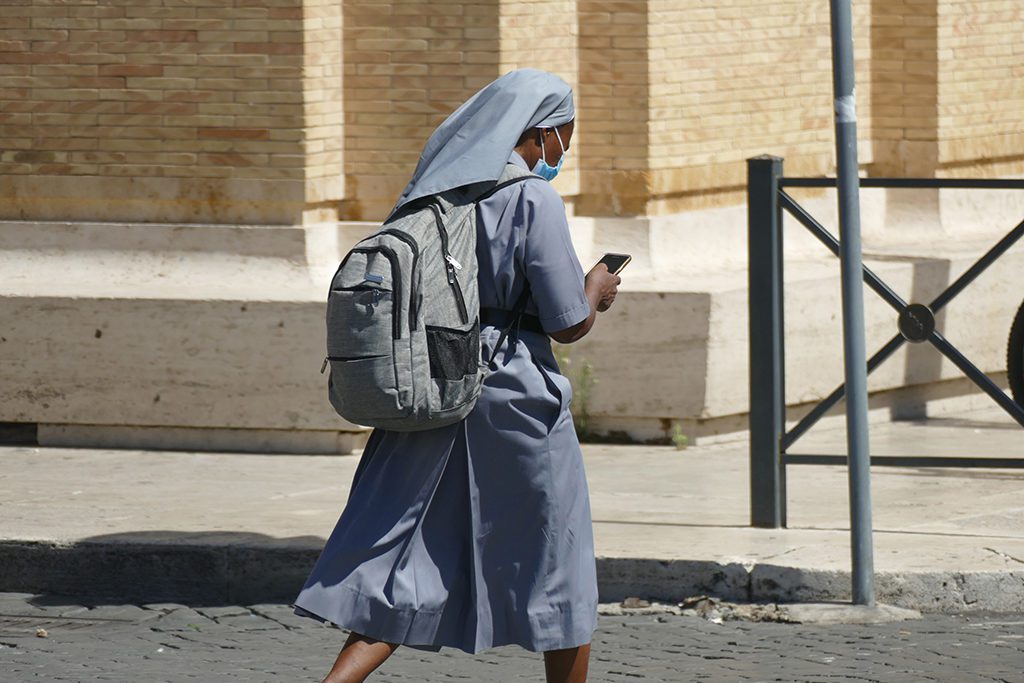
According to the Lateran Treaties from 1929, the square and the basilica have remained open to the public. Also, the Italian police is in charge of security in this area. Nevertheless, their authority ends at the foot of the stairs that lead towards the basilica.
Administration
It’s an official state, hence, there are official documents. About 450 of the 800 residents have Vatican citizenship. The Holy See, however, issues personal, diplomatic, and service passports.
You don’t need to forsake your citizenship to get an official piece of the Vatican. Actually, the Vatican has its own postal service with a choice of particularly pretty stamps. So why not sending a postcard to your loved ones back home from the Vatican?!
By the way, rumor has it that even Romans are sending their mail by the Vatican post since they find it more reliable than the Italian one.
Basilica of Saint Peter
The Basilica of Saint Peter is the memorial church of the Apostle Simon Peter and one of the seven pilgrimage churches of Rome. With a built-up area of 20,139 square meters and a capacity of 20,000 people, Saint Peter’s Basilica is the largest of the papal basilicas and one of the world’s largest and most important churches.
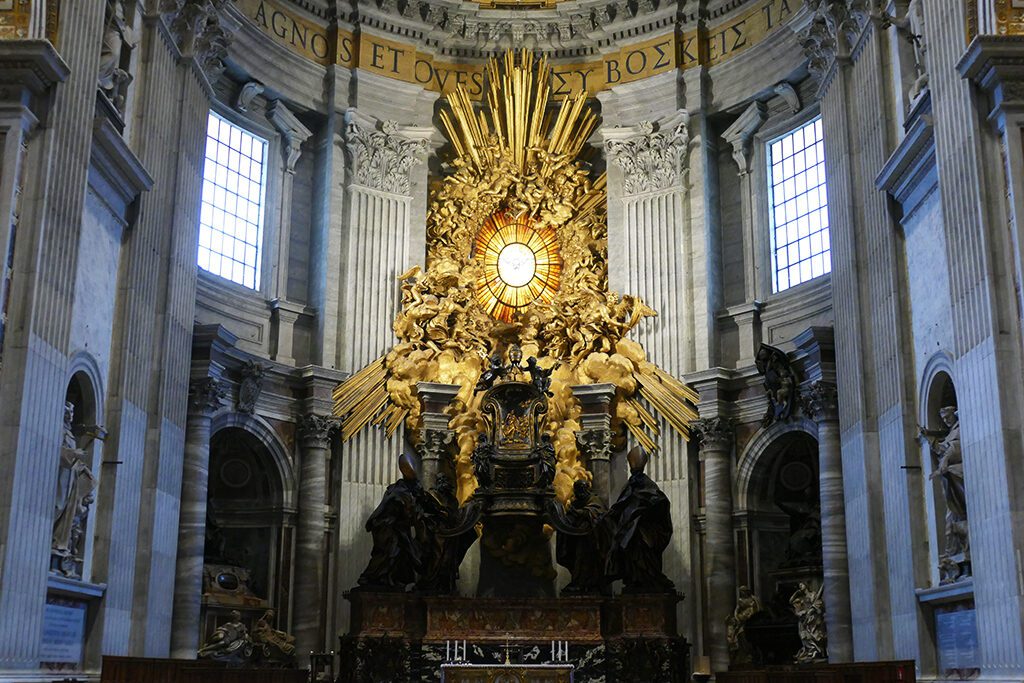
This pompous sculpture monument encloses a wooden throne.
There are four enormous statues of the Doctors of the Church, Saint Ambrose and Saint Athanasius to the left as well as Saint John Chrysostom and Saint Augustine to the right.
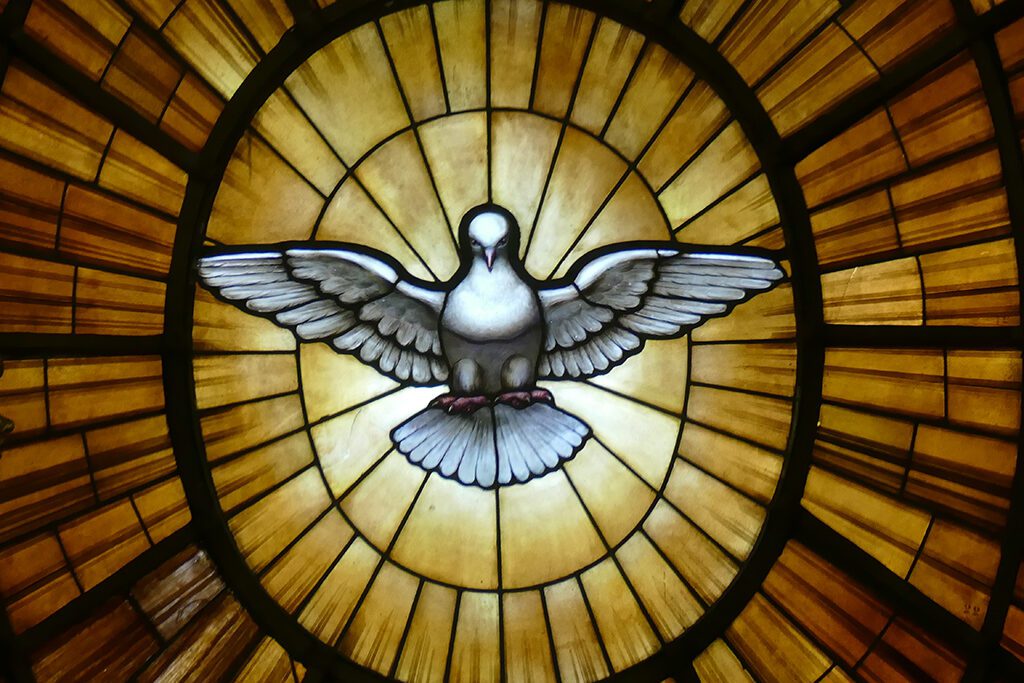
In this close-up, you can clearly see that the window is not made of glass but alabaster.
From Bramante to Raphael
The first draft for the Basilica came from the first project manager Donato Bramante. After Bramante died in 1514, Raphael took over his duties together with Giuliano da Sangallo and Fra Giovanni Giocondo.
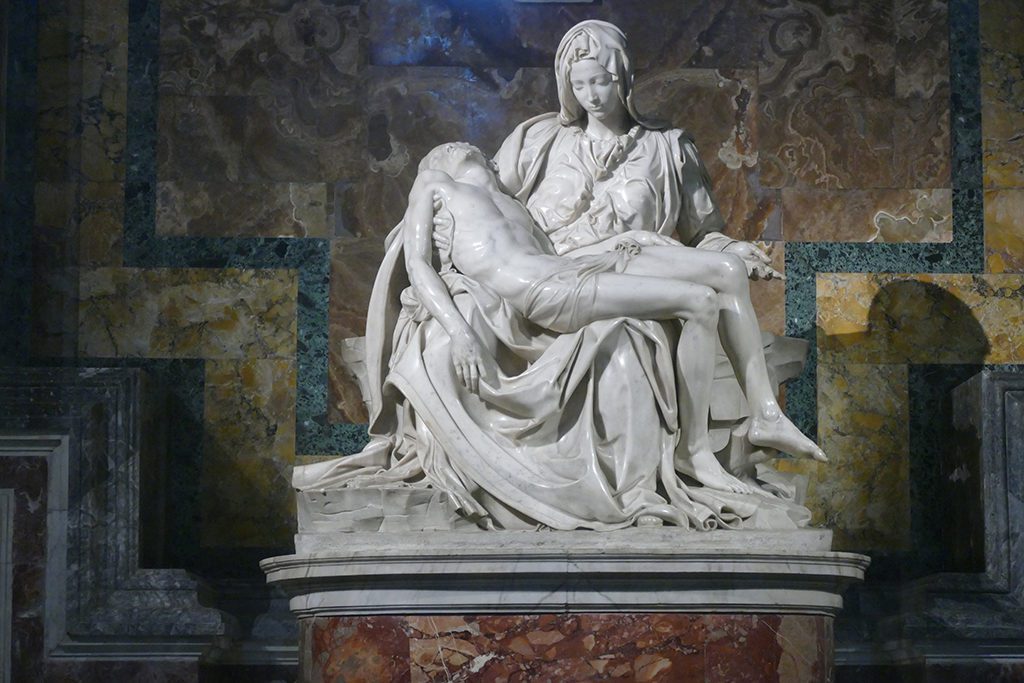
The inscription on Mary’s chest band reads MICHEL.A[N]GELVS BONAROTVS FLORENT[INVS] FACIEBAT translating to Michelangelo Buonarroti of Florence Made This. It sounds a bit as if he spray-tagged it MB was here. Rumor has it that he later regretted his vanity.
The chapel, by the way, has been protected by bulletproof glass ever since the Pietà was voluntarily damaged in 1972. Yet, you can also take a closer look. There are replicas of the Pietà in the sacristy of Saint Peter’s Basilica as well as the Vatican Museums.
Then Came Michelangelo
Finally, in 1547, no less than Michelangelo Buonarroti took over. However, Michelangelo’s plans for Saint Peter’s were based on Bramante’s architecture. Hence, he designed a central building with four apses, the floor plan can still be found in the western part of the basilica.
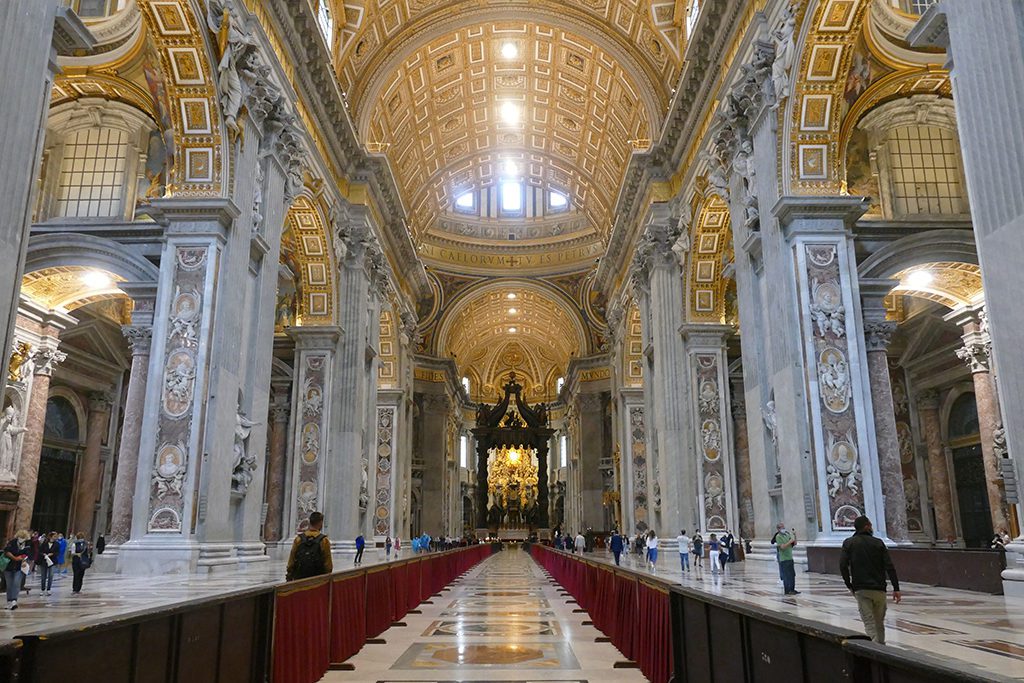
To direct the gaze toward the tomb of Peter, Gian Lorenzo Bernini, with the support of Francesco Borromini, erected a 29-meter high bronze canopy right above the tomb.
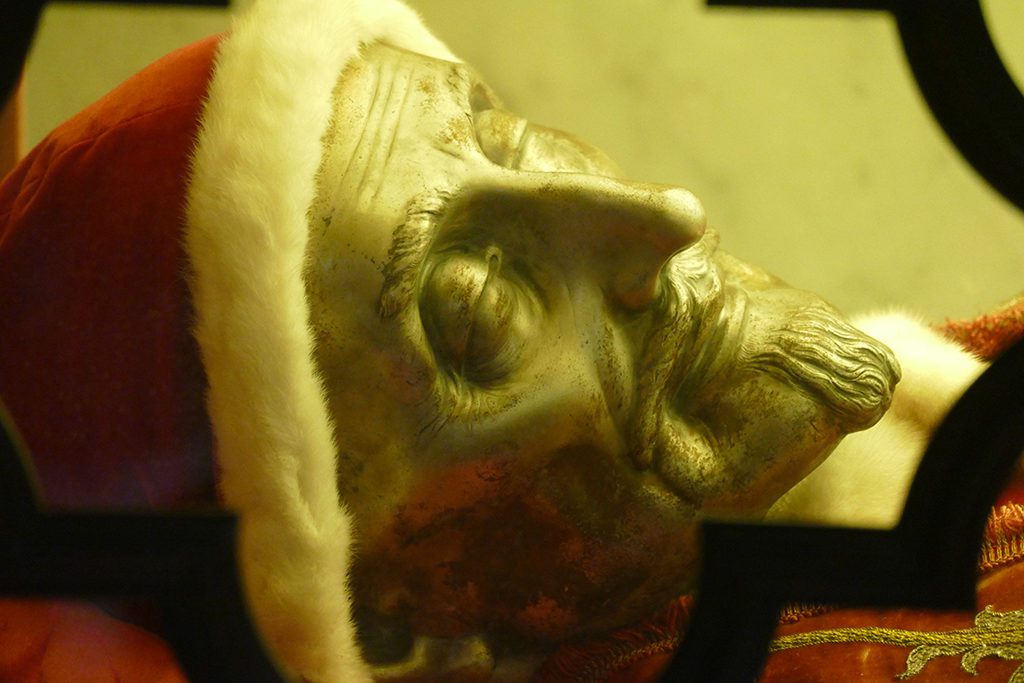
Here you can see Innocent XI., one of three Popes bedded behind glass.
Popes are embalmed in the hope of good preservation. Nevertheless, you cannot really see him since the visible face and hands are covered by a metal mask.
Finally, in 1626, they had completed the construction so that Pope Urban VIII. consecrated the Saint Peter’s Basilica on November 18th.
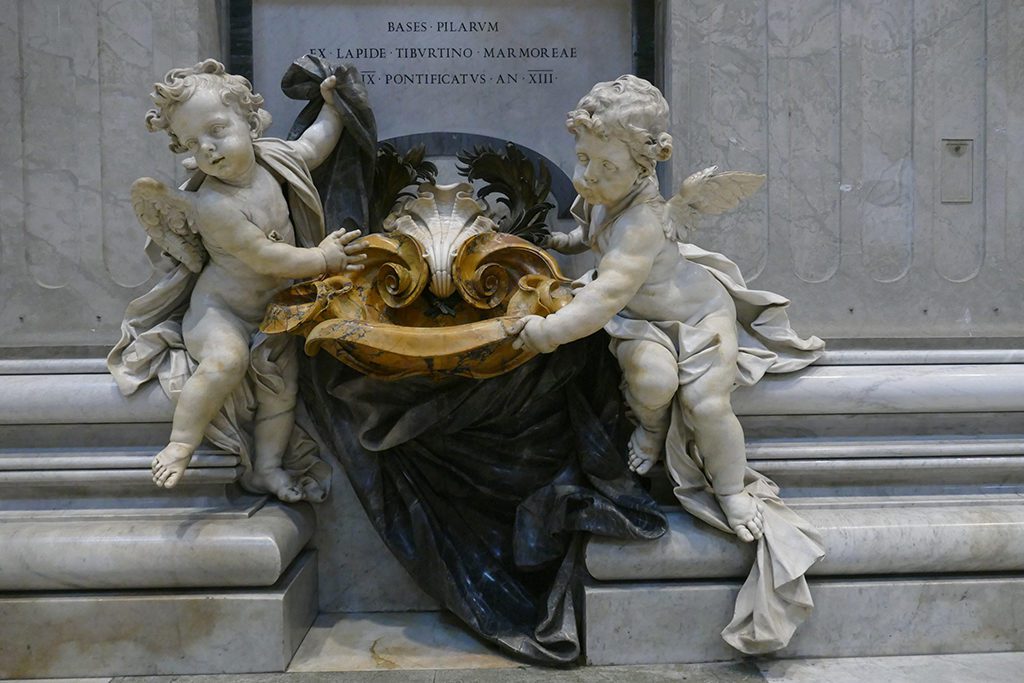
From this picture, it’s difficult to imagine their monumentality. However, mind you the putti alone are two meters high!
Vatican Museums
As mentioned above, there are also the Vatican Museums on the premises of the Vatican State. To get there, you have to basically circumnavigate half of the state to the north side. Sounds a bit more effort than it is since it actually takes about ten to fifteen minutes.
Especially during high season, I suggest you book your ticket a couple of days beforehand online. This way, you skip the sometimes extremely long lines.
The museums charge a considerable amount of almost 20 €uros so you can see all the treasures they got – and took – over the centuries.
I find that a bit questionable. Nevertheless, you get to see some of the world’s most precious pieces of art, so…
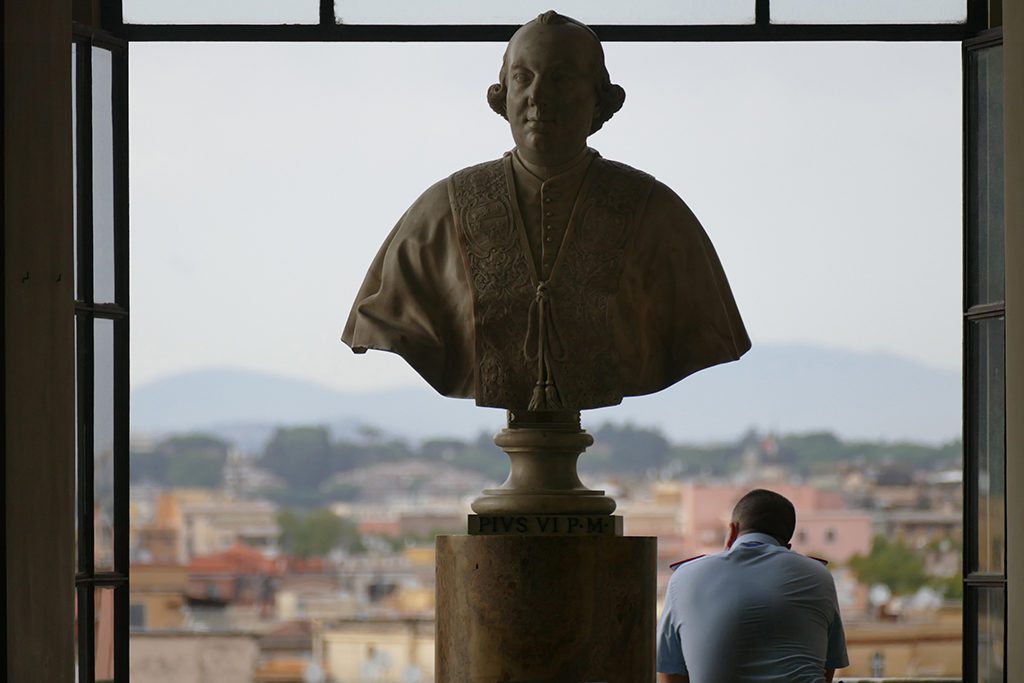
The Vatican Museums mainly house the papal art collections. These collections are some of the most important and largest in the world and include oriental antiquities from Egypt and Assyria and classical Greco-Roman as well as Etruscan-Italian antiquities. Obviously, there is early Christian and medieval art, art from the Renaissance and Baroque as well as modern and even contemporary art.
The most spectacular parts that can be visited are the Stanze di Raffaello, galleries covered by Raphael’s frescoes. And, of course, the Sistine Chapel.
The Sistine Chapel
Pope Sixtus IV. commissioned the Sistine Chapel in the late 15th century and consequently named it after him. The Holy See holds the conclave at this chapel. The Scala Regia and Sala Regia connect the Saint Peter’s Basilica with the Sistine Chapel. Nonetheless, tourists can enter only through the Vatican Museums.
Some of the world’s most famous images are embellishing the walls. Murals on the north and the south walls show scenes from the lives of Jesus and Moses. Some of the most famous Renaissance painters, such as Sandro Botticelli, Pietro Perugino, Domenico Ghirlandaio, and Cosimo Rosselli, decorated the chapel’s walls.
However, the ceiling is particularly noteworthy. In the early 16th century, Michelangelo Buonarroti painted scenes from Genesis on a total of 520 square meters. There are no less than 115 larger-than-life figures.
Especially The Creation of Adam as God brings Adam to life with an outstretched finger is an often-cited excerpt.
Galleries, Chambers, and Gardens
The Sistine Chapel is indisputably the highlight of the Vatican Museums – and this is coming from me who usually hates the up-hyping of things. Still, there is much more to see. As a matter of fact, you could spend an entire day at these galleries.
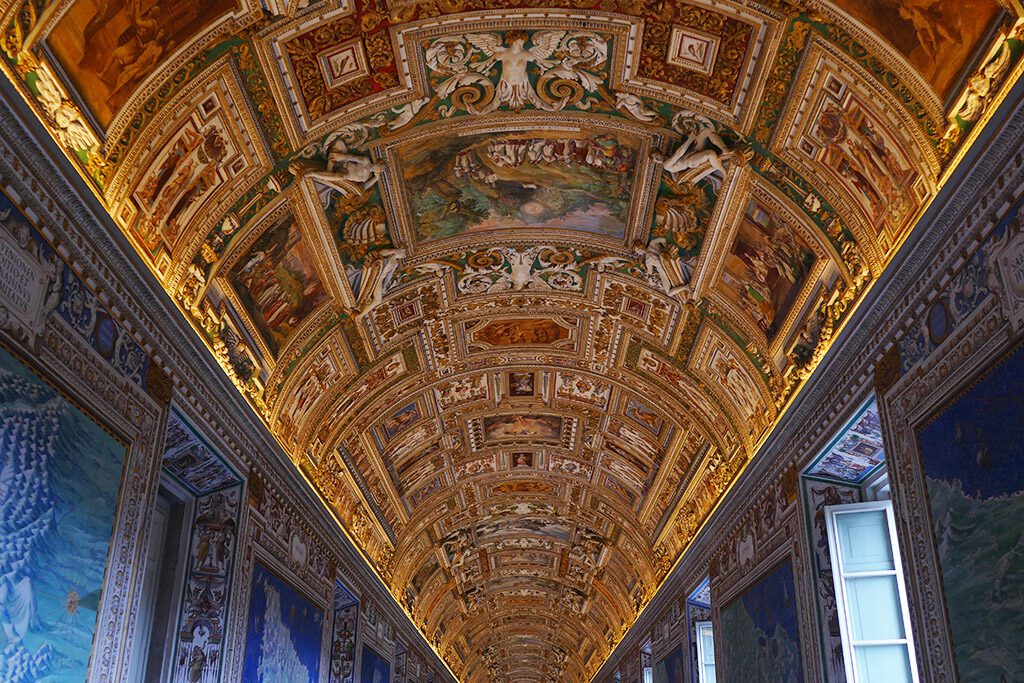
Talking ’bout galleries, there are so-called Gallerie, namely the gallery of candelabras, the gallery of tapestries, and the gallery of maps. Even if you don’t pay much attention to the candelabras, tapestries, and maps, the beauty of the lavishly ornamented halls will mesmerize you.
Then there are all those countless unstintingly decorated and furnished halls. The chambers of Pius V., the Sobieski Hall, the Borgia Apartments – all these will make your head spin.
West of the museum are the Vatican Gardens. They can also be visited, however, the entrance fee is not included in the museum ticket.
The Raphael Rooms
Another indispensable highlight of your museum visit will be the Raphael Rooms.
First commissioned by Julius II, Raphael and his contributors continued painting the frescoes under the patronage of Pope Leo X until 1524.
The four rooms are Sala di Costantino, Stanza di Eliodoro, Stanza della Segnatura and Stanza dell’Incendio di Borgo according to their main themes.
Sala di Costantino
The Sala di Costantino is the largest room intended for official receptions. The four scenes from the life of Emperor Constantine basically deal with the victory of Christianity over paganism.
Stanza di Eliodoro
The Stanza di Eliodoro served as a room for private audiences under Julius II. The frescoes also have a political orientation and aim at the god-given wealth and independence of the papacy.
Stanza della Segnatura
Raphael decorated the Stanza della Segnatura with four of his most famous frescoes. They actually were a milestone of decorative arts during the High Renaissance.
This room was Julius II’s library and study. Today, the bookshelves are only simulated on the north wall.
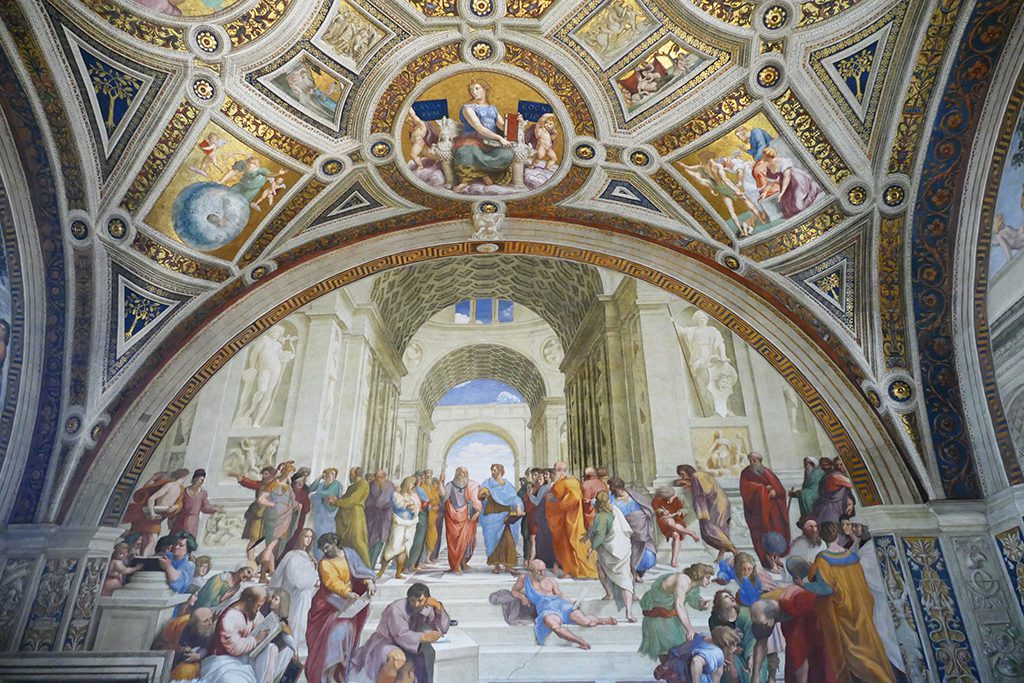
In fact, the Stanza della Segnatura was the first of the four rooms that Raphael painted.
Stanza dell’Incendio di Borgo
The Stanza dell’Incendio di Borgo was second and painted between 1514 and 1517. While it was a dining room under Leo X., it served as a courtroom under Julius II.
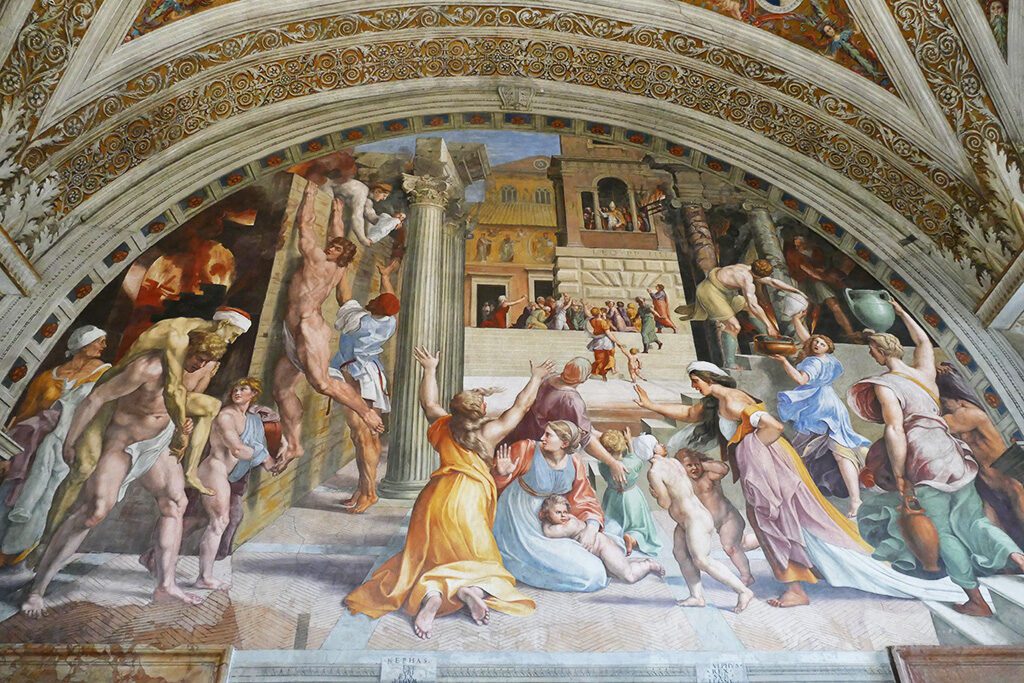
However, there are allusions to the Turkish war raging in southeastern Europe for decades.
Antique Collection
What do you mean, you’re tired? By now, you’ve seen only a fraction of the Vatican’s treasures!
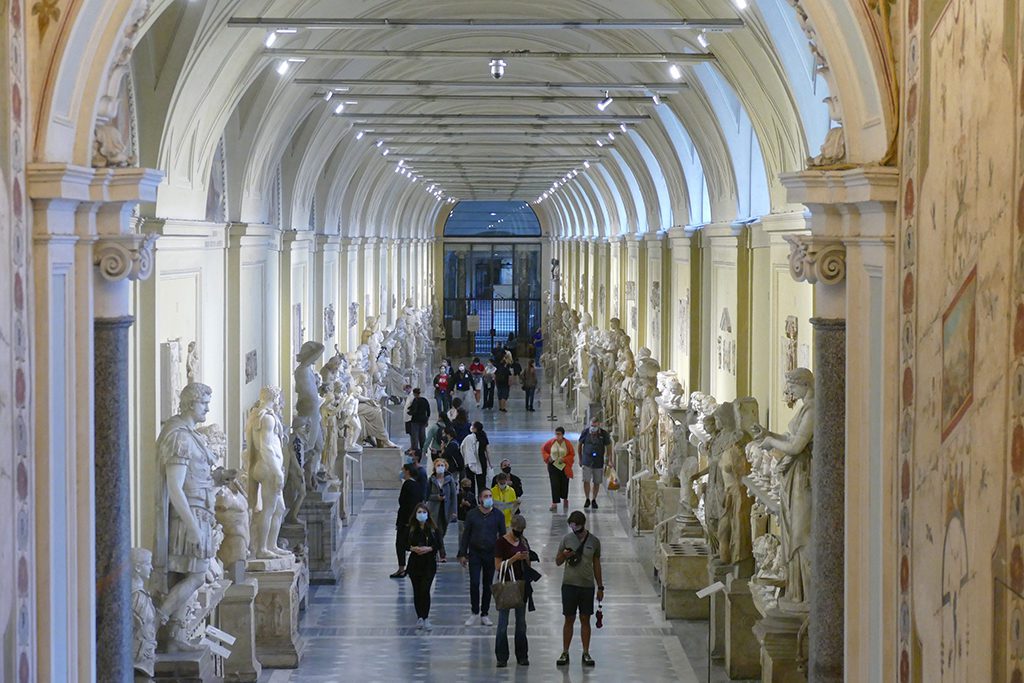
You still need to visit a handful of venues like the Egyptian or the Etruscan galleries. There’s the library and there are the collections of ceramics, vases, carriages. Presumably, there’s nothing that the Vatican has not collected.
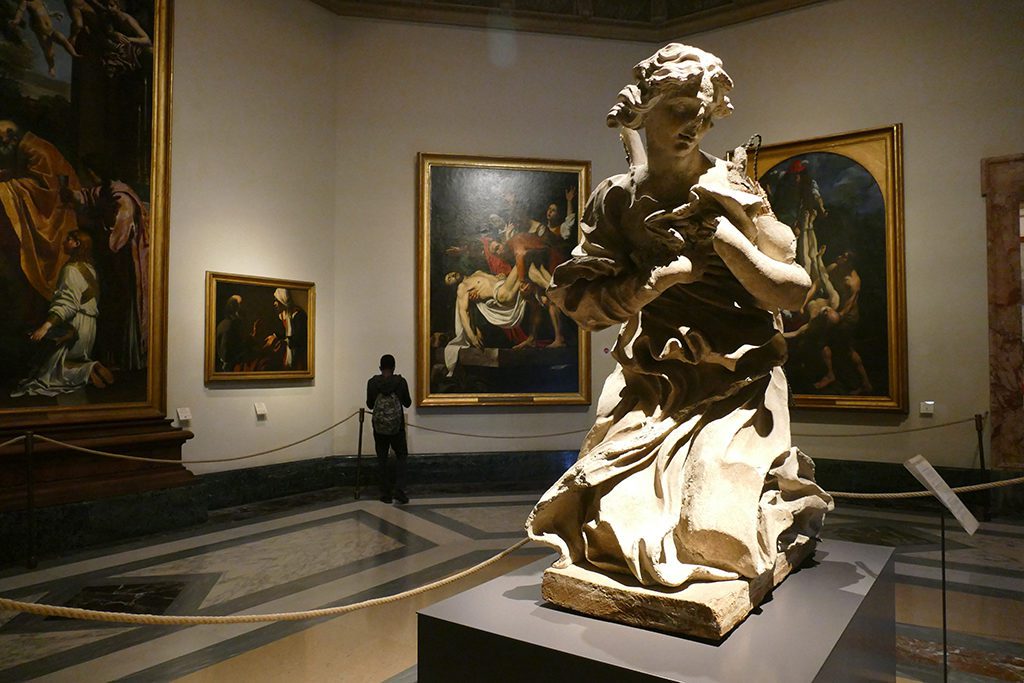
One of my very favorite parts, however, is the Museum of Classical Antiquity. The sub-collections are some of the most important Greco-Roman collections of antiquities in the world.
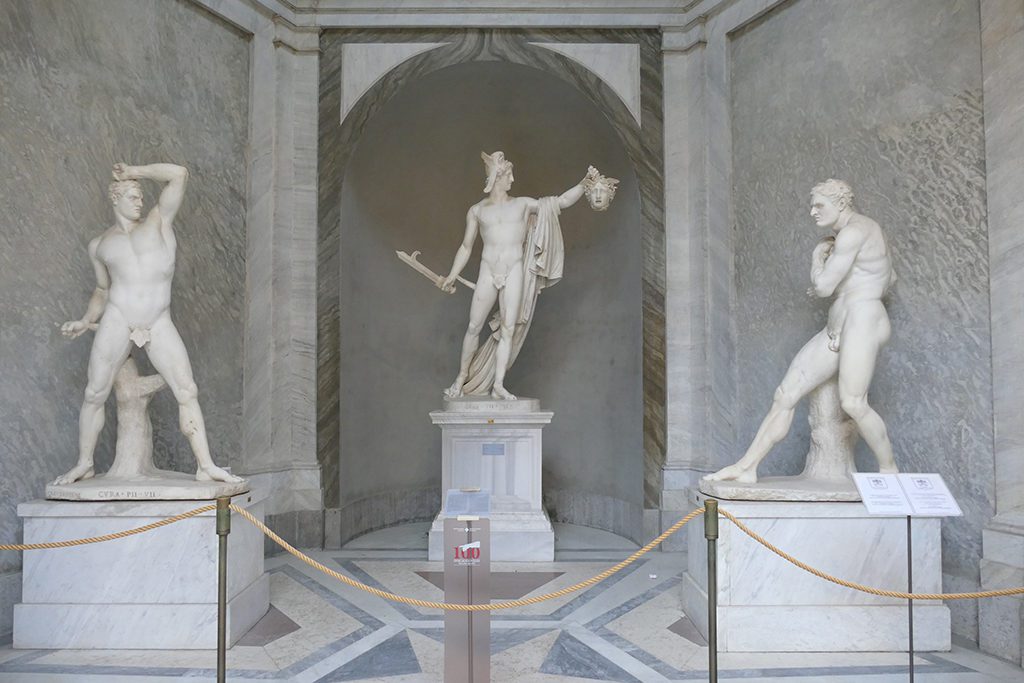
Besides being displayed at the vast indoor galleries, many of those treasures are grouped al fresco at the Cortile Ottagono, the octagon courtyard.
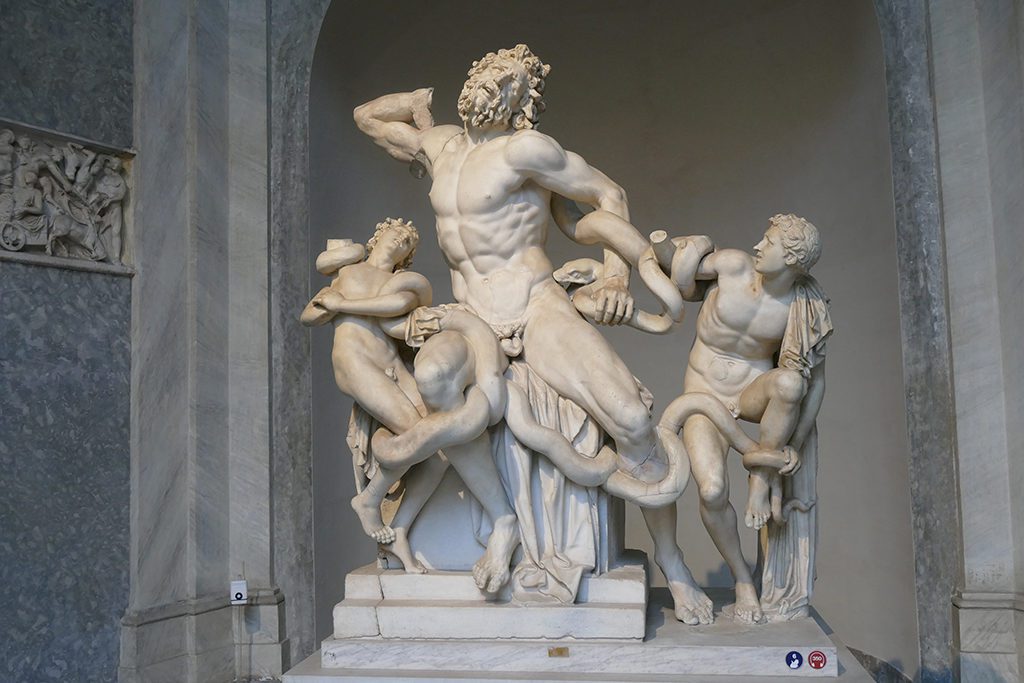
The marble copy from Roman times was found in 1506 by Felice de Fredis in his vineyards. Because of the enthusiasm for the Antiquity during the Renaissance, this find certainly was sensational.
Nevertheless, the less than two-meter-high marble statue is only a replica. The original bronze sculpture from Pergamon was probably made around 200 BC and has not been preserved.
Castel Sant’Angelo
One of Rome’s most iconic buildings is the somewhat unusual Castle of the Holy Angel. Originally, it was meant to be a mausoleum for the Roman emperor Hadrian and his successors. Only later, it was converted into a castle by various popes.
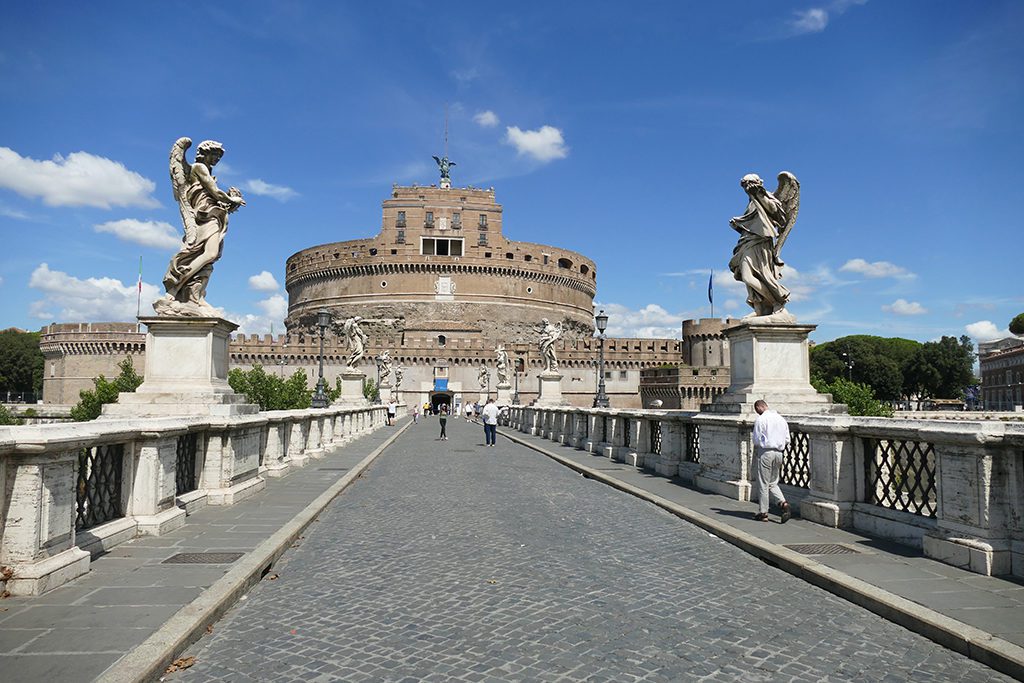
The architectural style, which goes back to the ancient Etruscan tombs, seems strange. Yet, there were similar buildings in those times like the tomb of Caecilia Metella on the Via Appia Antica or Emperor Augustus’ mausoleum on the Campus Martius.
The complex got its current name in 590 during the plague. According to a legend, Archangel Michael announced the end of the disease to Pope Gregory I the Great by sheathing his sword in divine anger. Since the plague actually came to an end, they put a statue of the angel on the top of the building. After all, you never know…
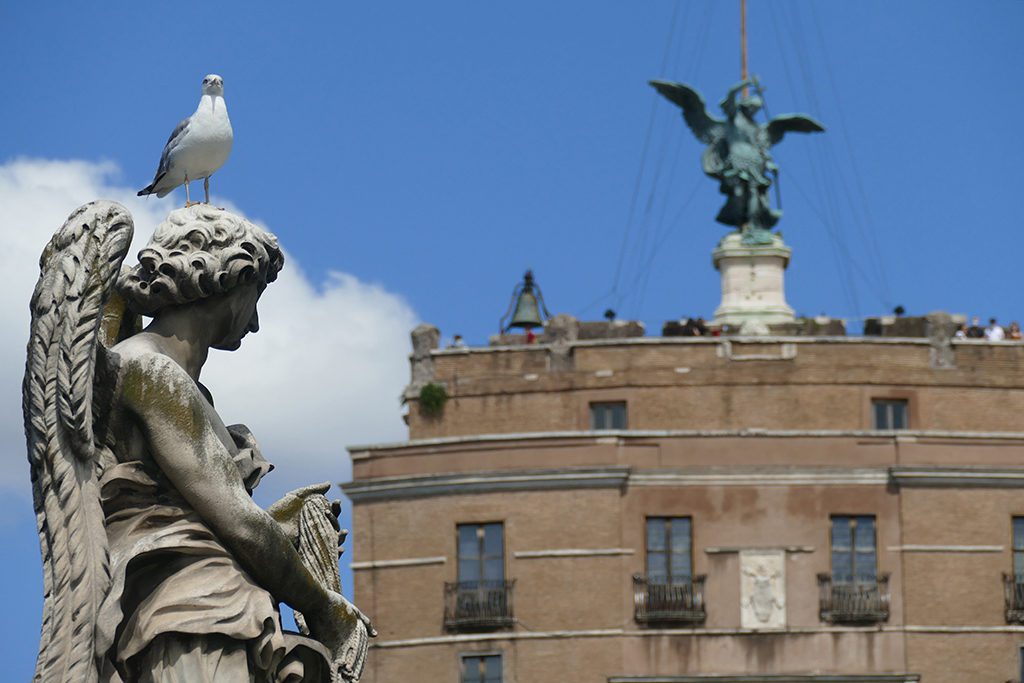
At the Museum
From 1901, the building was no longer in use as a castle, and in 1906 finally became a museum. It deals with the building’s history and shows antique weapons, furniture, and everyday objects.
A 122-meter-long ramp spirals upwards from the lowest level. On the second level, there are the former prison and storage rooms for wheat and oil. The third floor is the military one and has two courtyards.
The most important level is the fourth one. Here, you will find the papal apartment, a series of rooms with mannerist frescoes by artists from Raphael’s school.
On the top is a terrace with the bronze angel as well as the so-called poor sinner’s bell.
Trivia
Castel Sant’Angelo gained new fame in the early 20th century when, in Puccini’s opera Tosca, the protagonist commits suicide by throwing herself from the building.
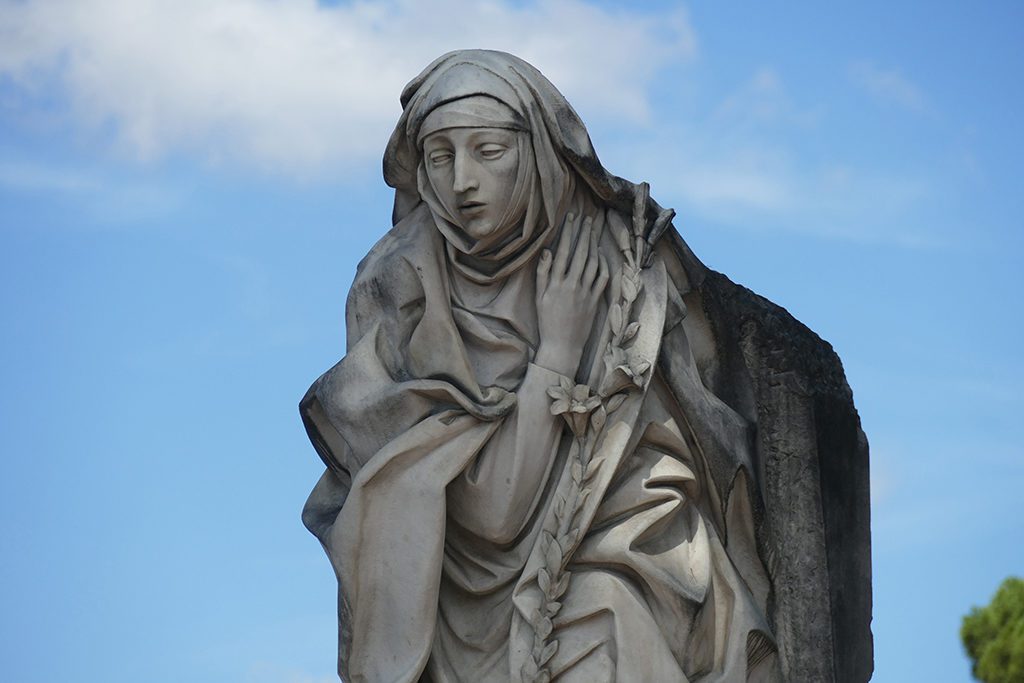
Also, in Dan Brown’s novel “Illuminati”, the secret society of the very Illuminati met at the castle, and the assassin was also hiding there.
Ponte Sant’Angelo
It was Emperor Hadrian who commissioned the Saint Angelo Bridge. He wanted to connect the Field of Mars directly to his mausoleum. Inaugurated in ancient times, it was considered the world’s most beautiful bridge.
You might think that the angel statues gave the bridge its name. As a matter of fact, it was the other way around. According to the bridge’s name, Gian Lorenzo Bernini and his students created ten magnificent angels in baroque style. Each of them carries a prop connected to the passion story. One carries a cross, others the crown of thorns, a lance, etc.
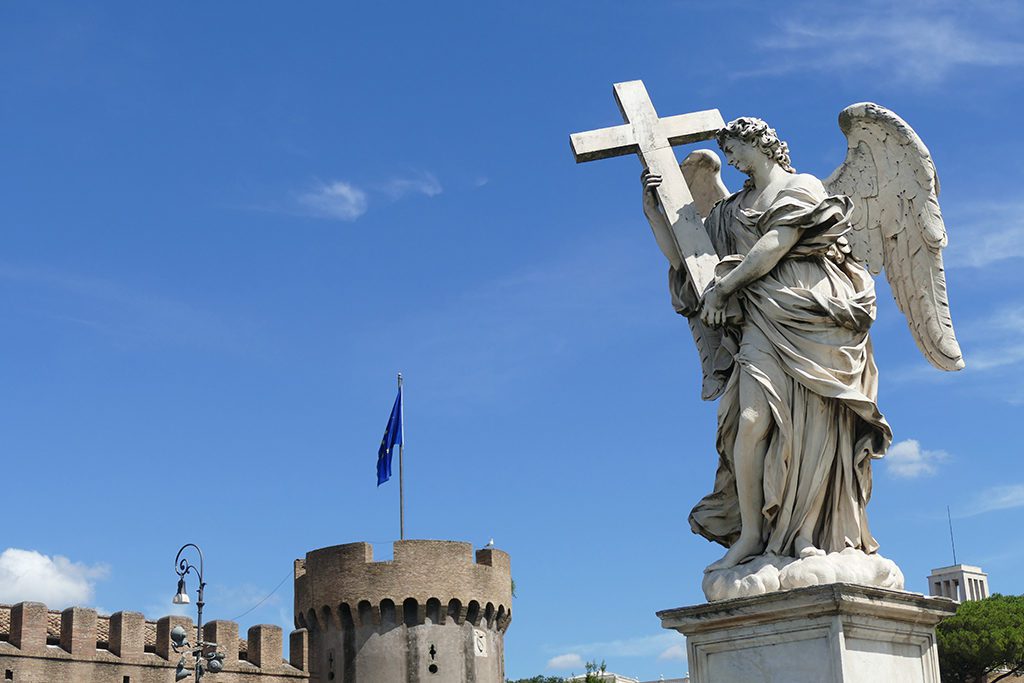
However, two of the statues are just replicas. Bernini’s originals are now in the church of Sant’Andrea delle Fratte.
In the past, an unimaginable number of pilgrims came to Rome in search of indulgences for their sins. The throng of pilgrims across the Ponte Sant’Angelo pushing between the stalls of shopkeepers and jugglers must have been utter madness. Then, in 1450, the shy of some horses and mules among the crowds caused a total of 172 deaths. Consequently, Pope Nicholas V had all stands and booths removed to grant unhindered passage. This incident led to the construction of the Ponte Sisto.
Ponte Vittorio Emanuele II
Just a couple of meters west of Ponte Sant’Angelo is another truly artistic bridge, the Ponte Vittorio Emanuele II.
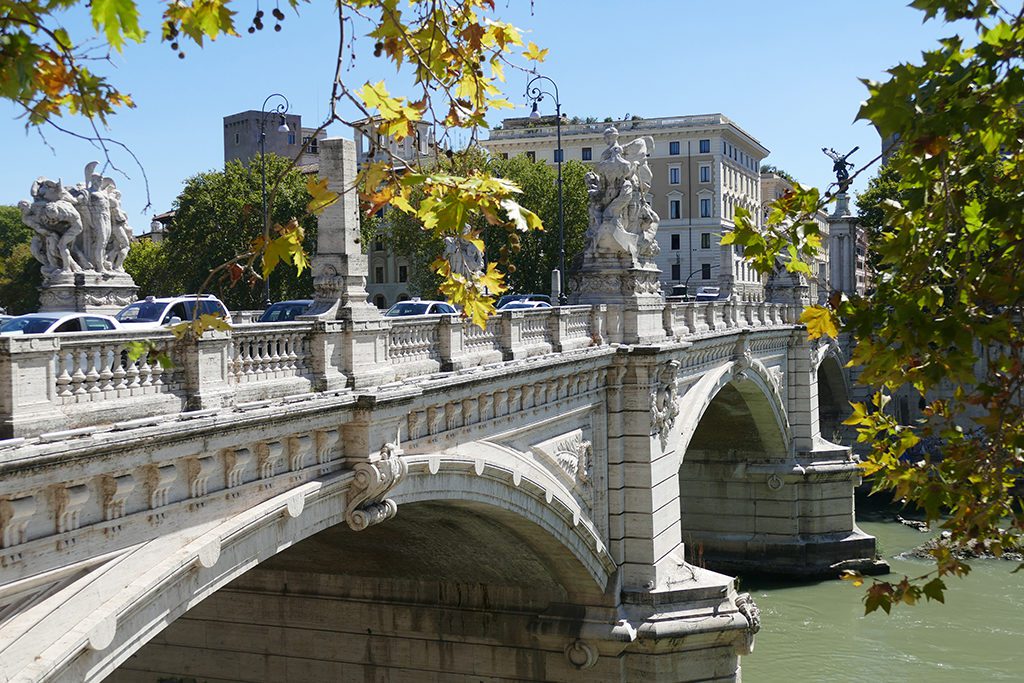
Although construction had begun in 1886, the bridge was inaugurated only in 1911.
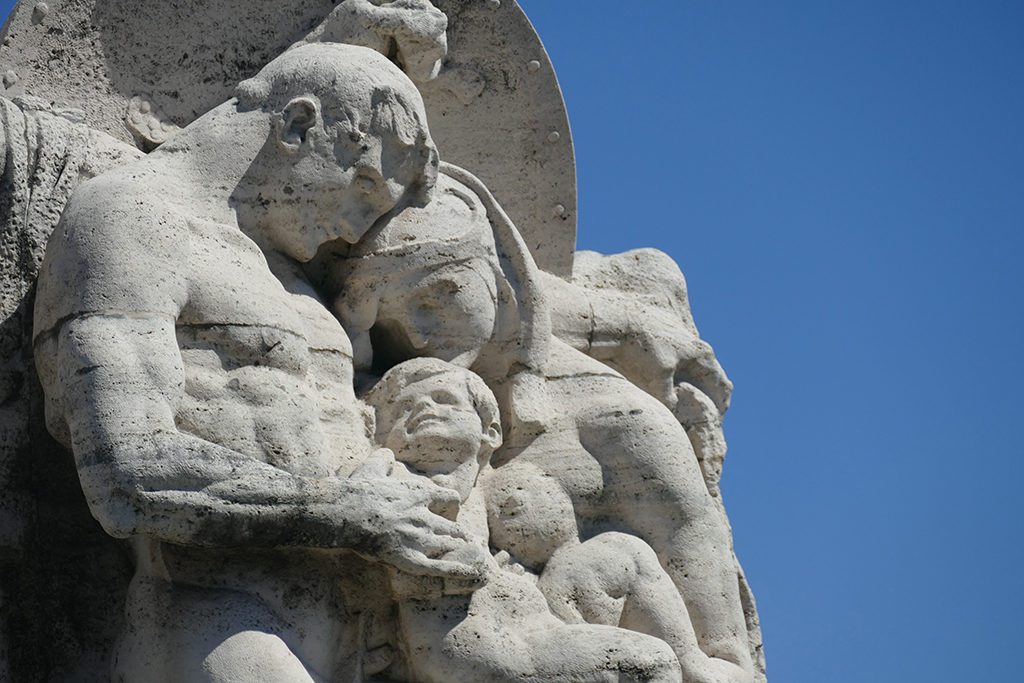
This bridge is like a small art gallery as you will encounter four monumental allegorical sculptures. Carved from travertine marble in 1911, they symbolize Monarchy gives Consolation to the People of Rome during the Flood 1870 by Cesare Reduzzi and Edoardo Rubino, Loyalty to the Statute by Giuseppe Romagnoli, Military Bravery by Italo Griselli, as well as Italy’s Unification by Giovanni Nicolini.
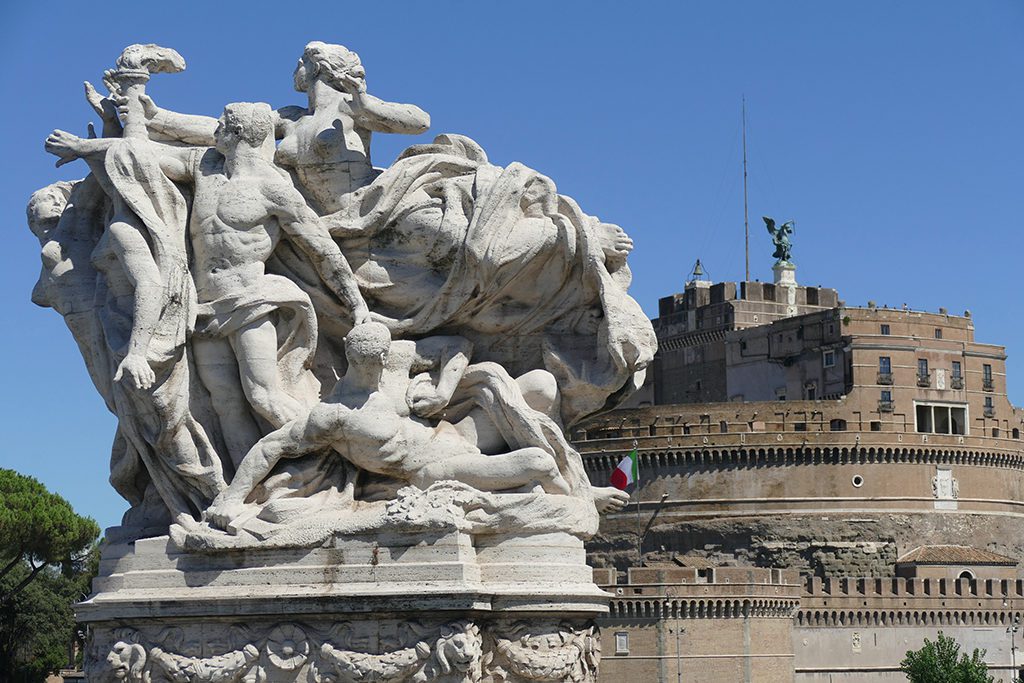
It is noteworthy that the flame of freedom in the group Loyalty to the Statute is protected against the winds blowing from the Vatican. This is a clearly anticlerical message
Along Piazza Navona
Just like there are hundreds of churches and thousands of fountains in Rome, there are uncountable Piazze. Obviously, not each of these squares is huge and mesmerizing. Yet, many are, and Baroque Piazza Navona is definitely one of the most glorious places.
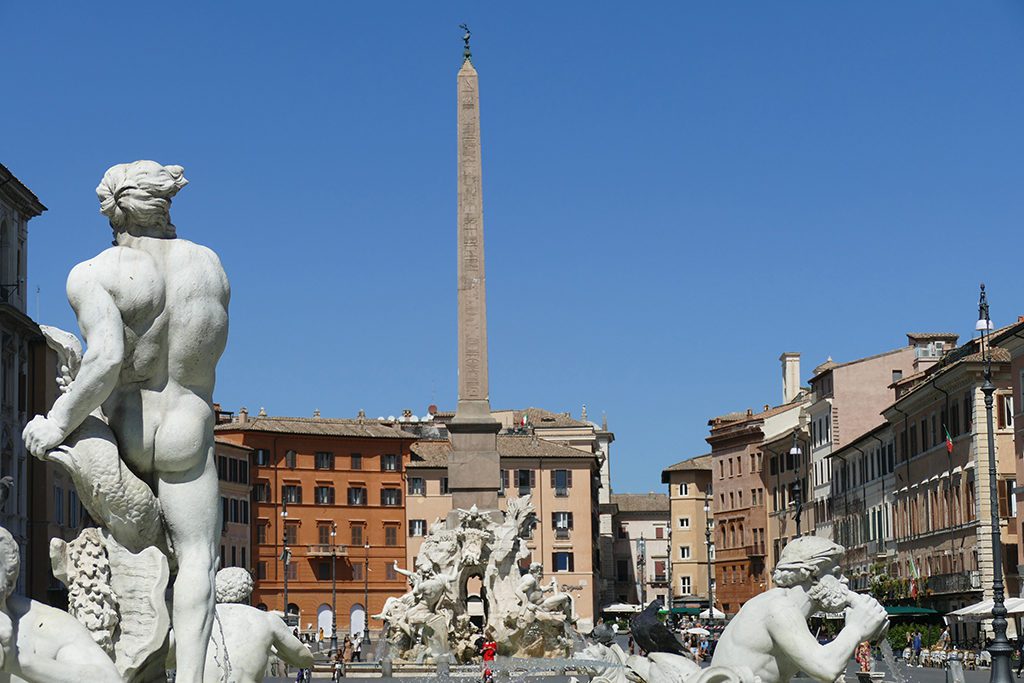
Built in the heart of the former Field of Mars, the territory served as a rather provisional stadium for games of the Greek type, hence, athletic competitions for about 30,000 spectators.
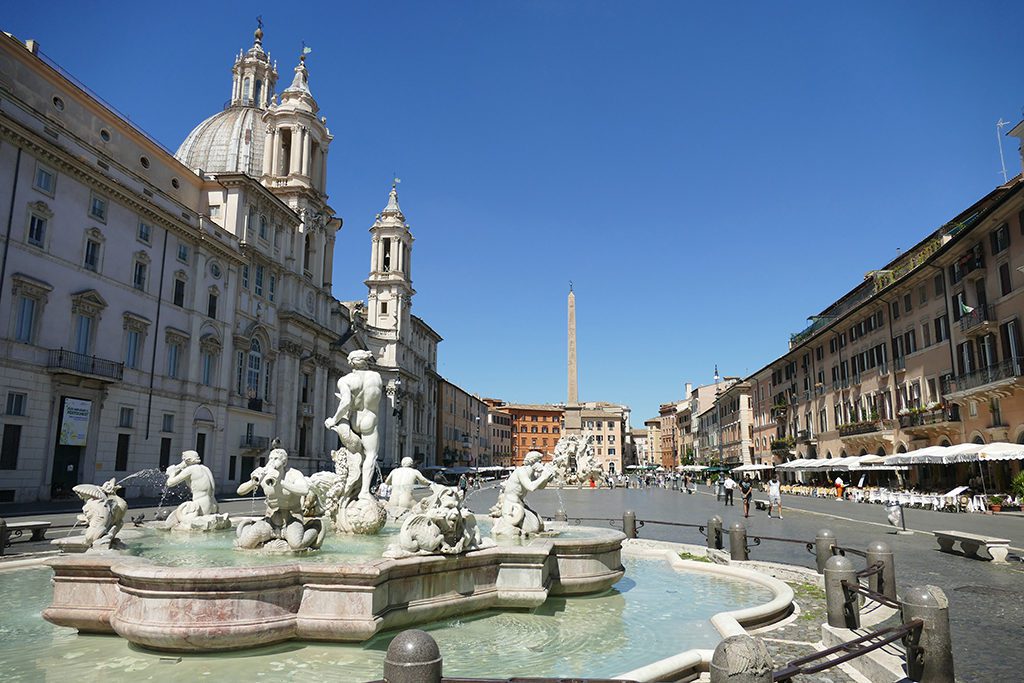
The first church was built inside the stadium. Little by little, houses were added to the substructures. This way, the shape of the arena has been preserved to this day.
Fountain of Four Rivers
In the mid-17th century, the turbo-designer Bernini created the iconic Fontana dei Quattro Fiumi, the Fountain of Four Rivers.
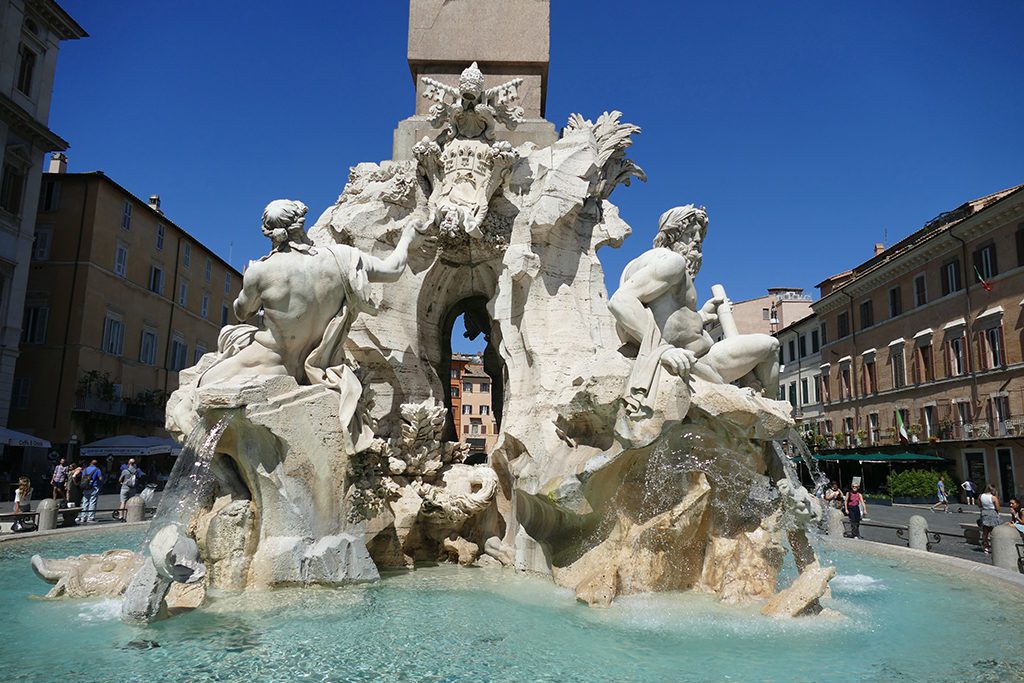
Four colossal male figures symbolize the largest rivers of the then-known four continents: Europe’s Danube, the African Nile, the Ganges in Asia, and Río de la Plata in the Americas.
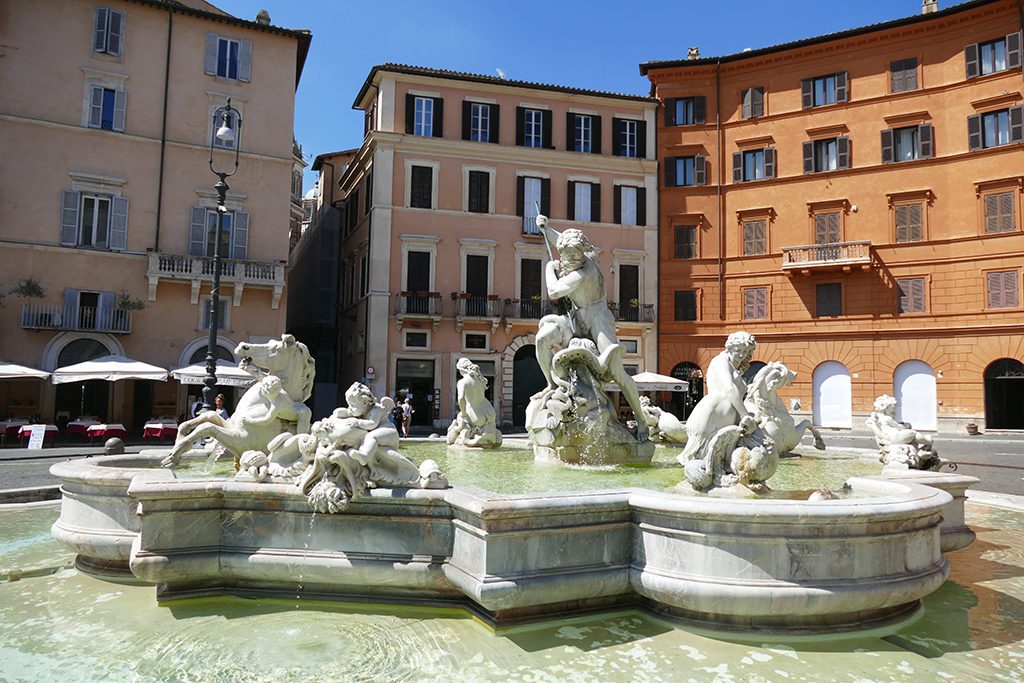
Bernini also redesigned the two older fountains, the Fontana del Moro in the south and the Neptune fountain in the north, that Giacomo della Porta had built in the 16th century.
Palazzo Pamphilj
The noble Pamphilj family, originating from Umbria, was politically and ecclesiastically highly influential – to say the least. In the 16th and 17th centuries, not only a pope and several cardinals emerged from that clan. They also owned incredible palaces all over the place.
The most majestic building on Piazza Navona is the Pamphilj Palace, the seat of the Brazilian embassy since 1920. Further below, I’m also introducing the Doria Pamphilj Gallery, another stately palace housing an exquisite art collection.
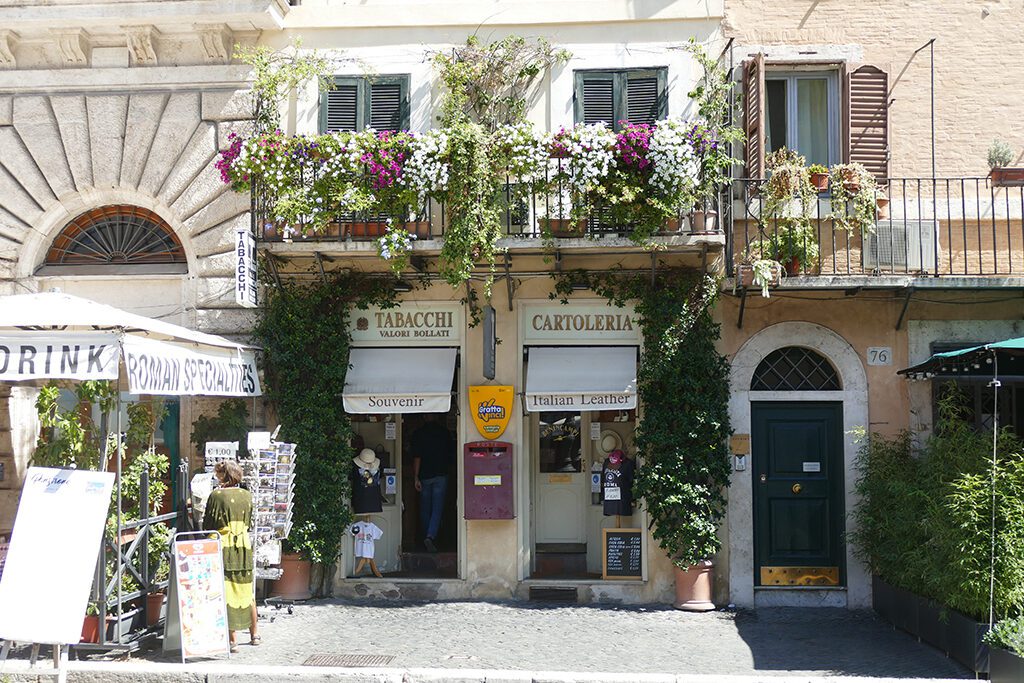
Due to its historic significance, its central location, and last not least its beauty, the Piazza Navona is a must-see when visiting Rome. Consequently, it’s very touristy with loads of souvenir shops and restaurants on the buildings’ ground floors. Also, be a bit cautious when strangers are addressing you.
Especially on mild summer evenings, the place is bustling with life.
On Piazza Navona’s southern tip is the Museo di Roma, housed in the Palazzo Braschi – just in case my post doesn’t supply with enough info on the city.
Chiesa di Sant’Ivo alla Sapienza
As you leave the square on the southeastern corner and get to the Corso del Rinascimento, the awe continues right away. At the end of a courtyard, you’ll spot the Chiesa di Sant’Ivo alla Sapienza. This church was designed by Baroque master Borromini. It has a geometrically quite complex interior, and on top is a unique spiral lantern.
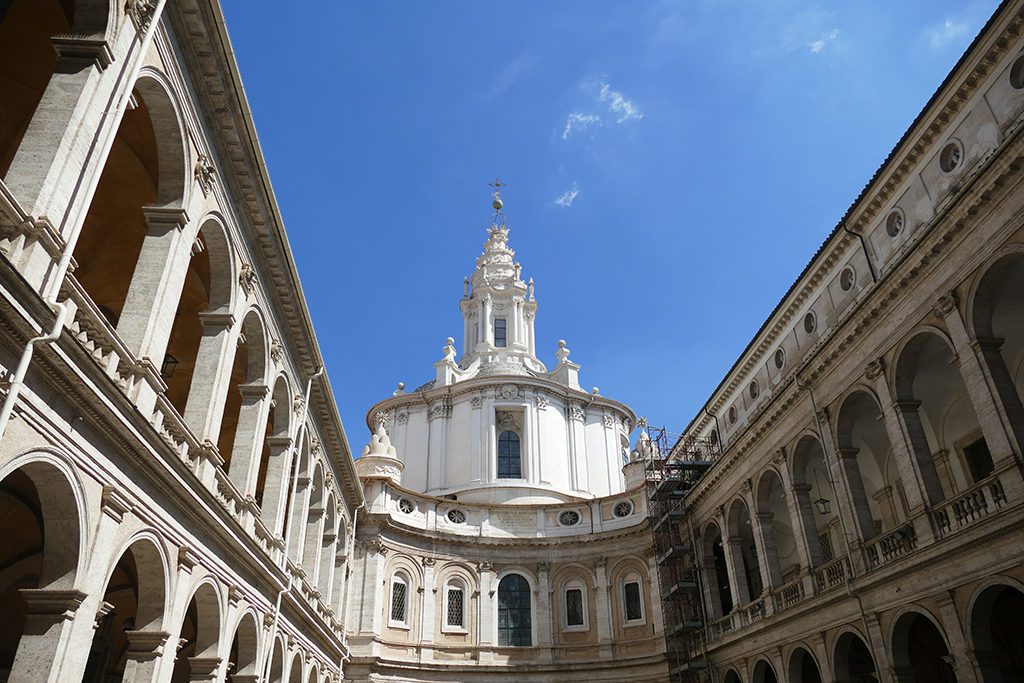
Actually, to me, Swiss-born Francesco Borromini is at least as big an architectonic and artistic genius as Bernini. His work is actually far more sophistically detailed and distinctive. Yet, his attribution to Rome’s artistic glory is kind of overshadowed by Bernini in terms of quantity.
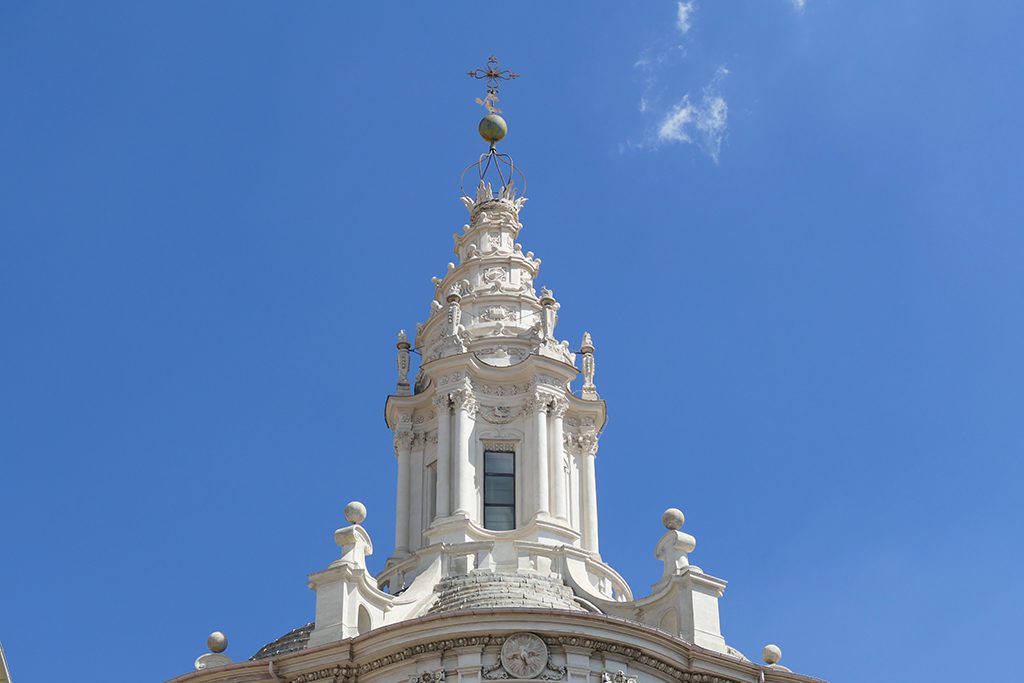
On the complex’s outer northern wall, you shouldn’t miss one of Rome’s most endearing fountains. Or is it endeering? Because its round arch actually has a deer head placed between four ancient books. It’s there in honor of the Sapienza University, and if you drink from this fountain of knowledge, you get admitted to a faculty of your choice tuition-free for one year.
Yes, you got me there: I was just making that up. Nevertheless, the fountain is beautiful.
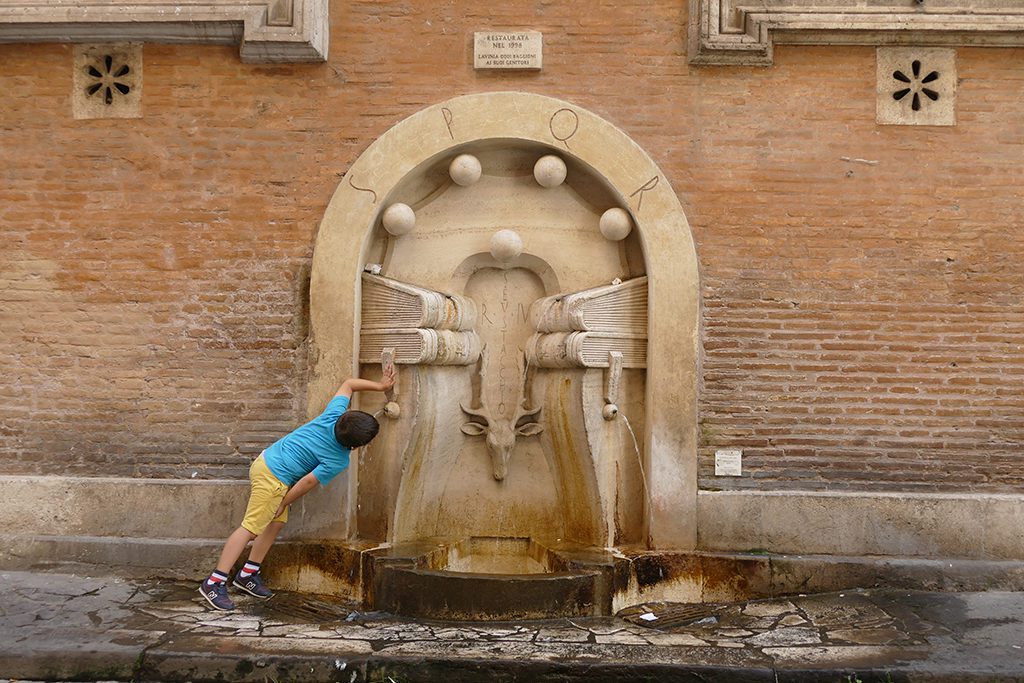
My Tip
What I’m not making up – and find pretty amazing – is the fact that you can actually drink from most of Rome’s 2,000 public fountains. Or, obviously, fill up your drinking bottle. Only if it’s explicitly interdicted, the water is not “potabile”, hence, drinkable.
As you continue further north on the Corso del Rinascimento, passing by some glorious palazzi such as the Palazzo Carpegna and the Madama Palace that today serve as governmental buildings, you’ll get to the Church of Saint Louis of the French.
Caravaggio in Sacred Spaces
As I mentioned above, many of Rome’s churches are not open all the time. Still, you find Caravaggio’s paintings around the Piazza Navona at the San Luigi dei Francesi Church. Here, you get to see three paintings since the Cycle of Saint Matthew consists of The Calling, The Inspiration of Saint Matthew, and The Martyrdom of Saint Matthew.
Just a few steps further north is the Church of Sant’Agostino, where you get to see the Pilgrim’s Madonna, also known as the Madonna of Loreto,
Above Piazza del Popolo
The third Roman church where you can admire two paintings by Caravaggio is the Basilica Parrocchiale Santa Maria del Popolo.
Basilica Parrocchiale Santa Maria del Popolo
This basilica was founded in the 11th century and restored by no one less than Bernini in the 17th century. Apart from Caravaggio’s paintings Conversion of Saint Paul and Crucifixion of Saint Peter that are flanking the Assumption of the Virgin by Annibale Carracci at one of the most important paintings at the Basilica is Raphael’s.
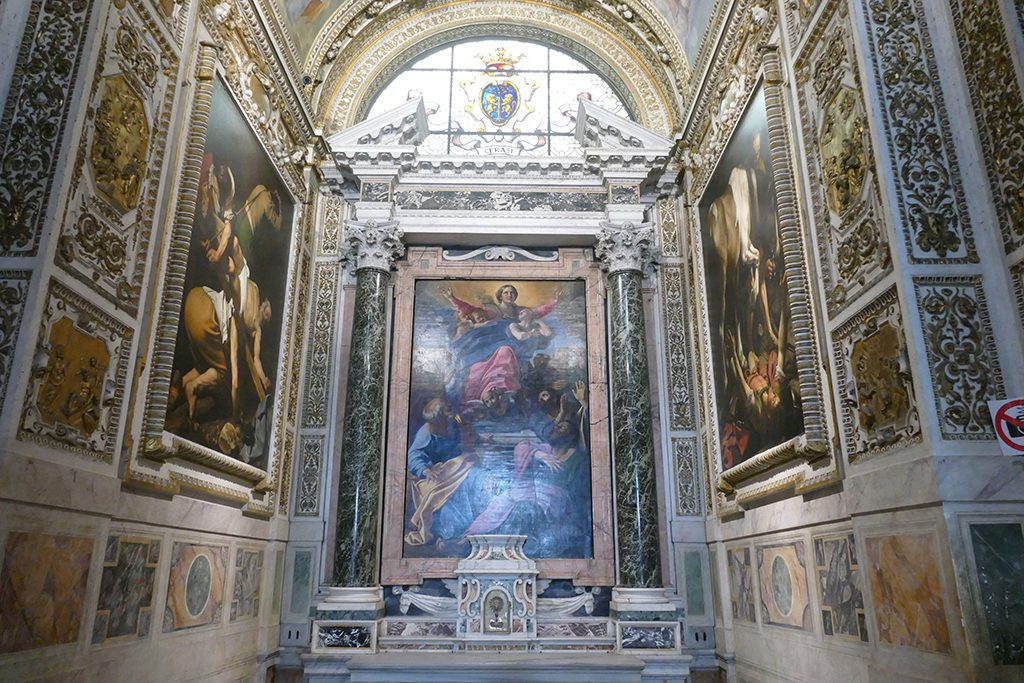
The Piazza del Popolo is one of Rome’s most famous squares. It was here where visitors entered the Eternal City in ancient times.
Neoclassicist Transformation
Then, Giuseppe Valadier created today’s appearance in a neoclassical style in the very early 19th century.
Frankly, when it comes to a lively Roman atmosphere, there are certainly nicer squares within the city center. Nevertheless, the Piazza del Popolo is definitely worth a visit for its splendid architecture.
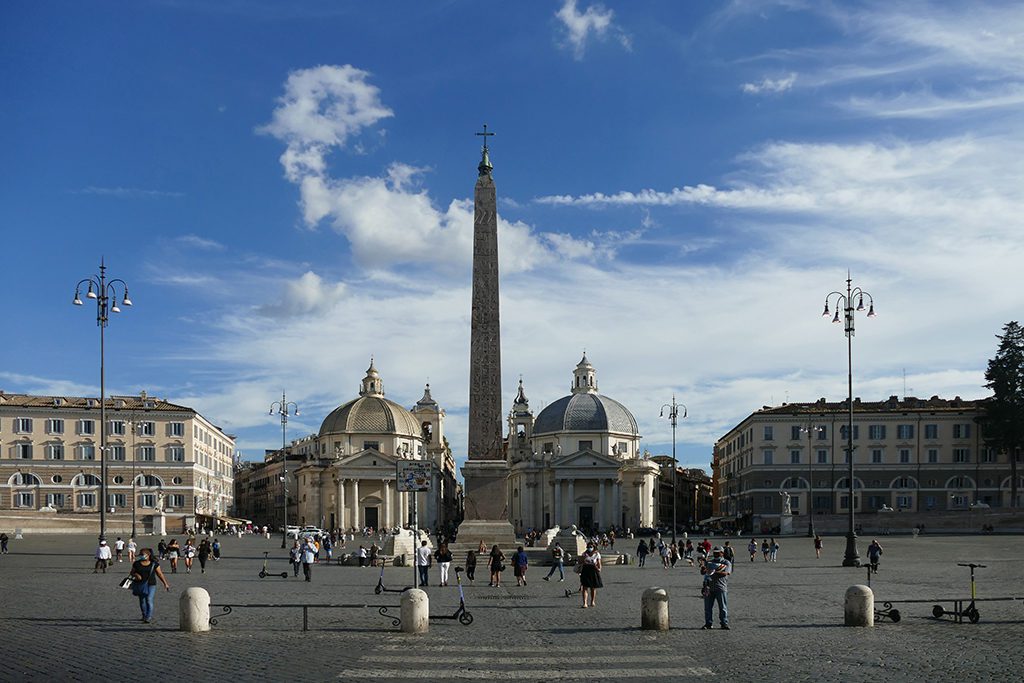
An outstanding feature, however, are certainly the famous twin churches on the square’s southern side. To the left is Santa Maria in Montesanto and to the right Santa Maria dei Miracoli. Both houses of worship were created by Carlo Rainaldi, Carlo Fontana, and – of course! – Gian Lorenzo Bernini.
Between the two churches, by the way, starts the Via del Corso, Rome’s busiest shopping street. Flanked by branches of basically every popular chain store on earth, it leads all the way to Piazza Venezia.
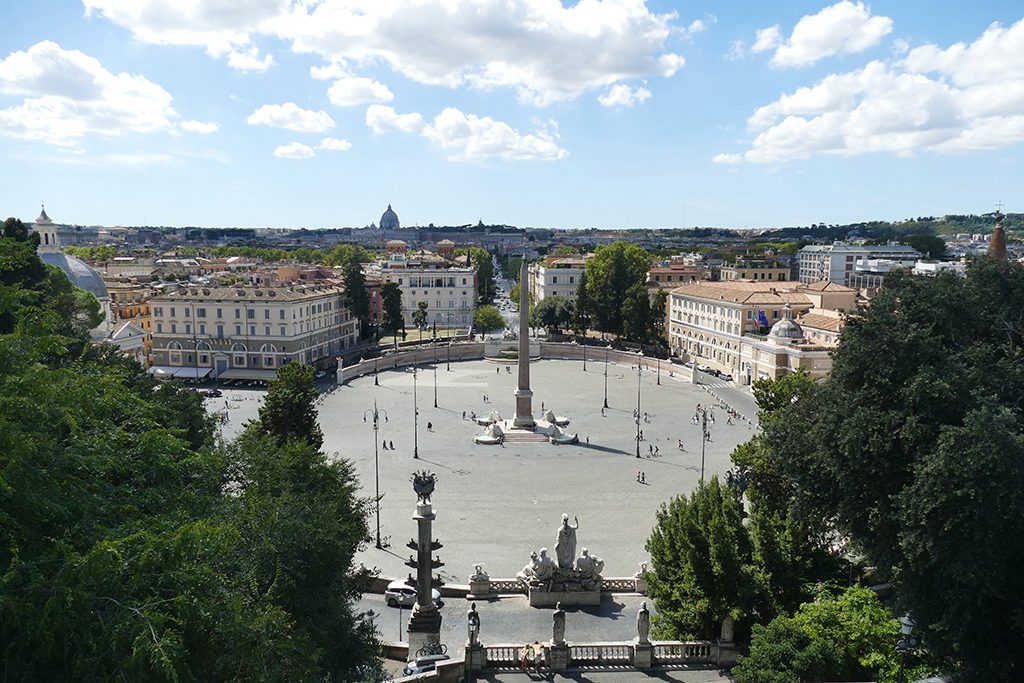
To the east of the square stands Valadier’s Fontana della Dea Roma. Behind the Goddess’s back rises the Pincio hill. From the Pincio’s terrace, you have a grand view of the western part of the city.
Villa Borghese
Right on top of the Pincio is the Villa Borghese, one of Rome’s most famous parks. Since the city is rather famous for dusty old rocks, it might come as a surprise that it is Europe’s second ‘greenest’ city. In fact, we are talking about 15 parks, public gardens, and historical villas, hence, greeneries.
The Villa Borghese emerged from the estate of a noble family. Originally, the lots included vineyards, nurseries, stables, and coach houses. Also, there used to be a zoo with exotic animals and plants, an aviary, and waters.
Already the 17th century, however, the Villa Borghese became also famous for its ancient art treasures.
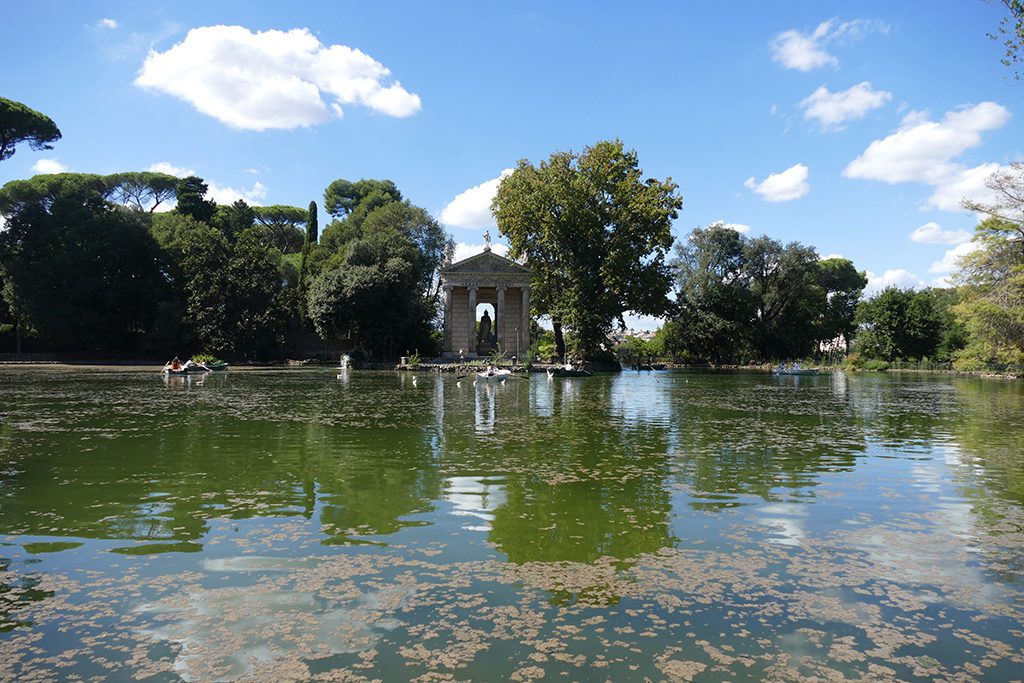
In the back, you can spot the Tempio di Esculapio, the Temple of Asclepius. It was built in 1786 and can be accessed over a wooden pier.
In the early 17th century the so-called Casino Nobile was built to house the private art collection of Cardinal Scipione Borghese. Today, it’s one of the world’s most famous and valuable private art collections. The Galleria Borghese is the park’s most famous attraction.
Museo Carlo Bilotti
Yet, the Galleria Borghese is only the most famous of the museums at the Villa, by far not the only one.
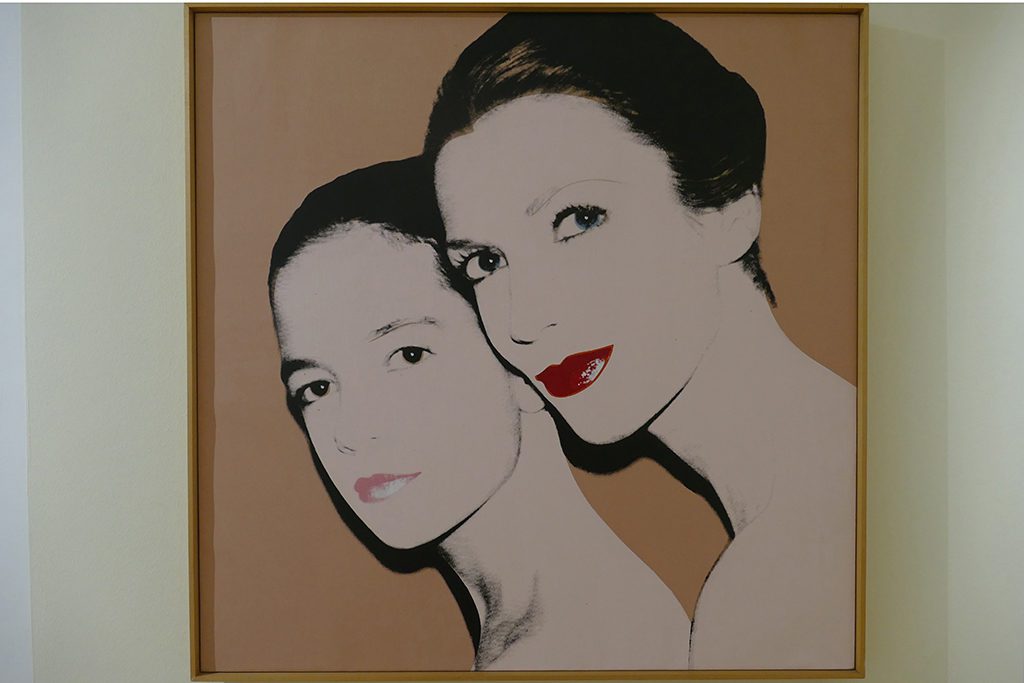
In the garden’s northwestern part, not far from the Laghetto, is the Carlo Bilotti Museum. At the Villa Borghese’s Orangery is the collection donated by the Italo-American entrepreneur and collector Carlo Bilotti. On display are paintings by Gino Severini, Andy Warhol, Larry Rivers, and a vast collection of works by Giorgio De Chirico.
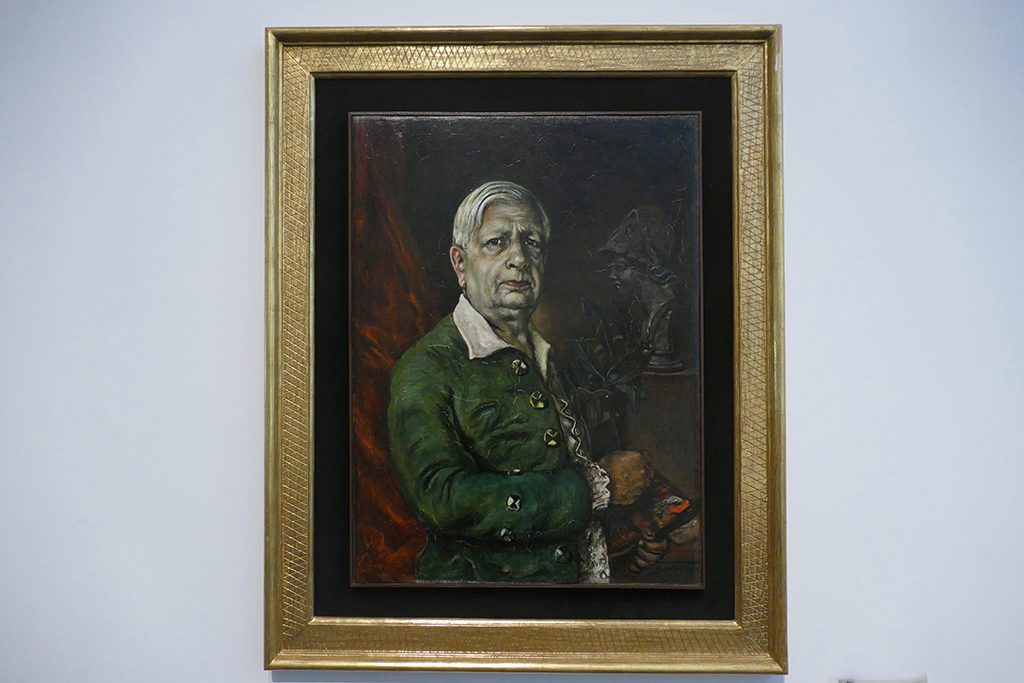
The museum is rather small, and if you aren’t a De Chirico-nut, you’ll have a great visit to Rome even if you skip it. On the other hand, entrance is free, so once you’re in the area, why not just drop in?!
Museo Pietro Canonica
Another small yet beautiful museum is just around the corner from the Museo Carlo Bilotti.
Sculptor Pietro Canonica lived at La Fortezzuola until he died in 1959. Now it houses his museum. On the ground floor is the late artist’s study. There is also a copy of the stele for the monument to Paisiello, one of his latest works, and all the tools.
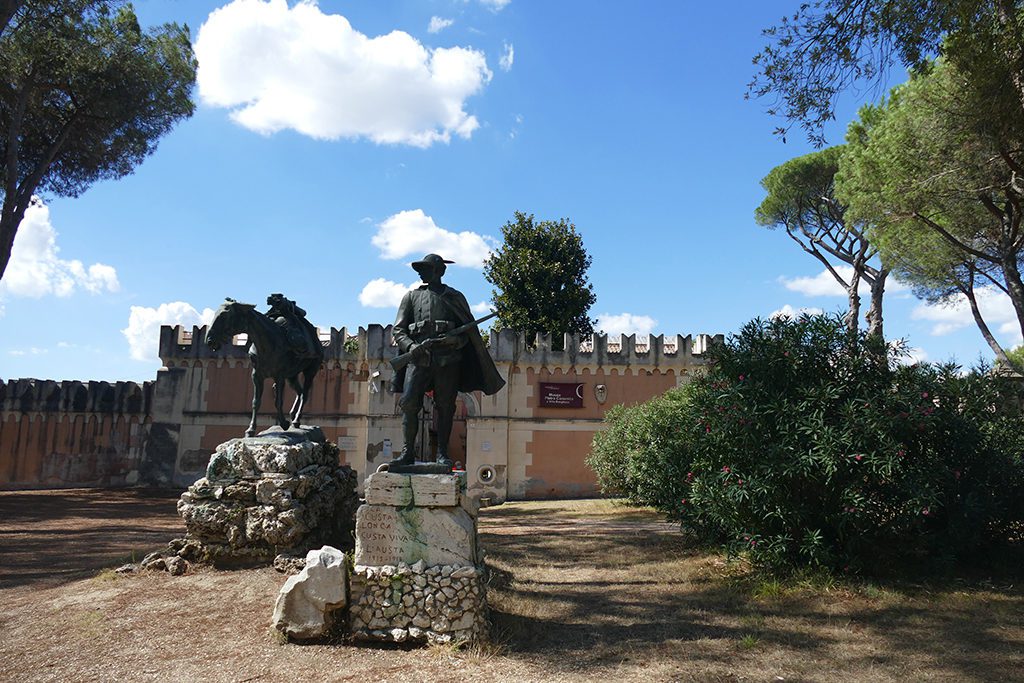
He created his sculptures in a Naturalistic Realism with clear influence from Romantic and Renaissance fashion. However, later, Canonica devoted himself to more religious artwork. Inspired by Donatello’s sculpture, he created works like Christ Scourged in Blood, a Crucified Christ, and a Deposed Christ.
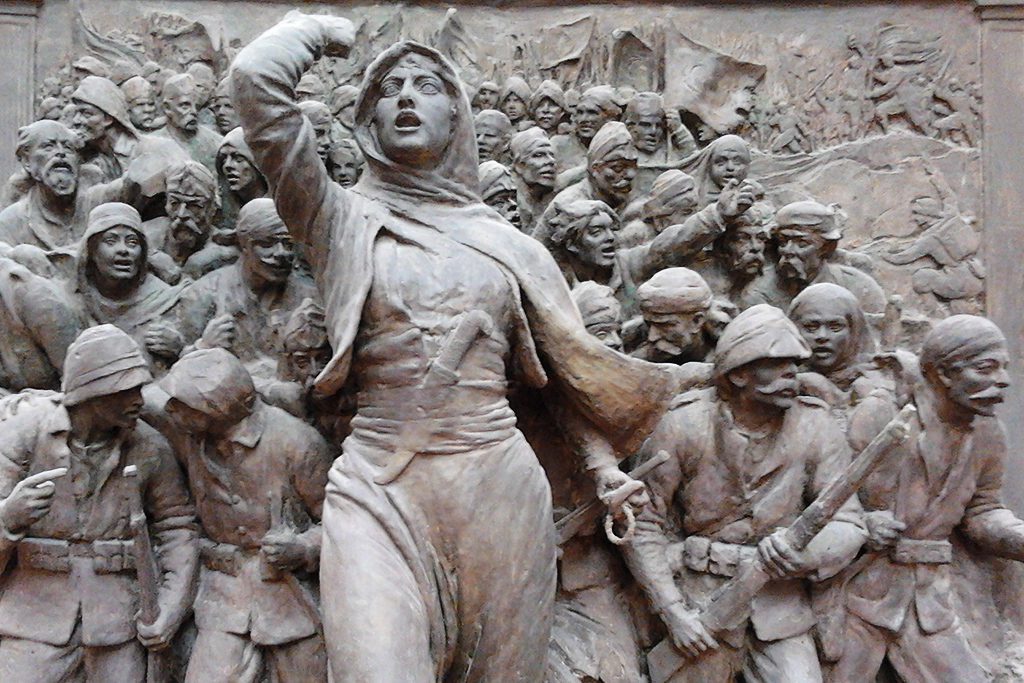
Besides statues of Italian and foreign aristocracy, such as the last Russian Tsar, he also designed monumental and artistic mausoleums and tombs.
Consequently, today, Canonica’s sculptures stand in Russia, England, Türkiye, Colombia, and Argentina.
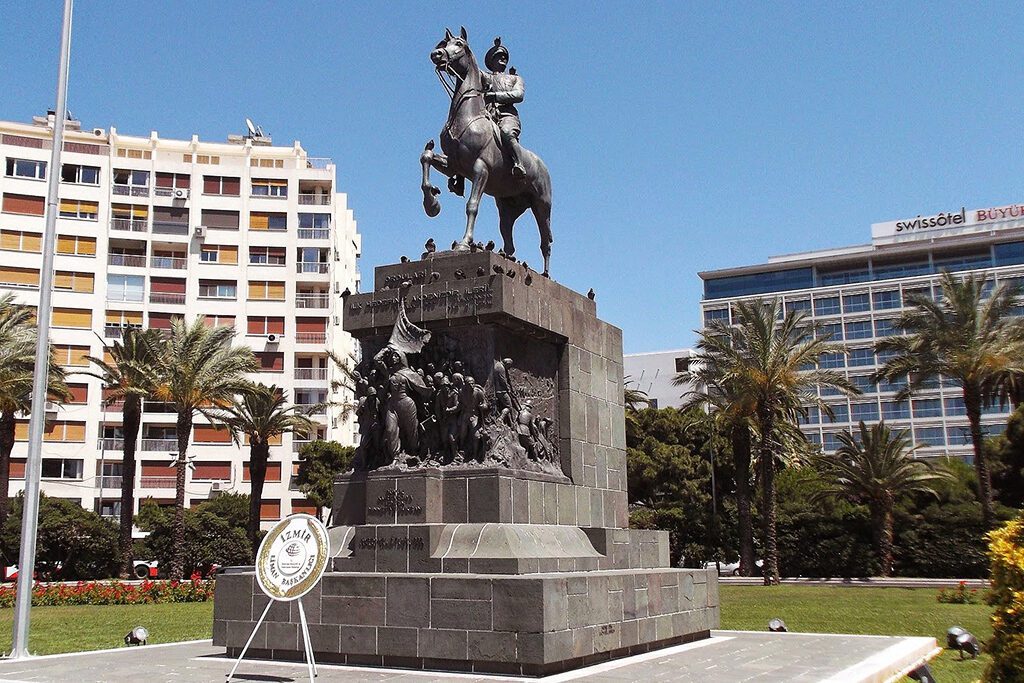
Just like the Museo Carlo Bilotti, you can visit the Museo Pietro Canonica free of charge.
Galleria Nazionale d’Arte Moderna e Contemporanea (GNAM)
The National Gallery of Modern and Contemporary Art houses a comprehensive collection of Italian and foreign art from the 19th century to today. It was founded in 1883.
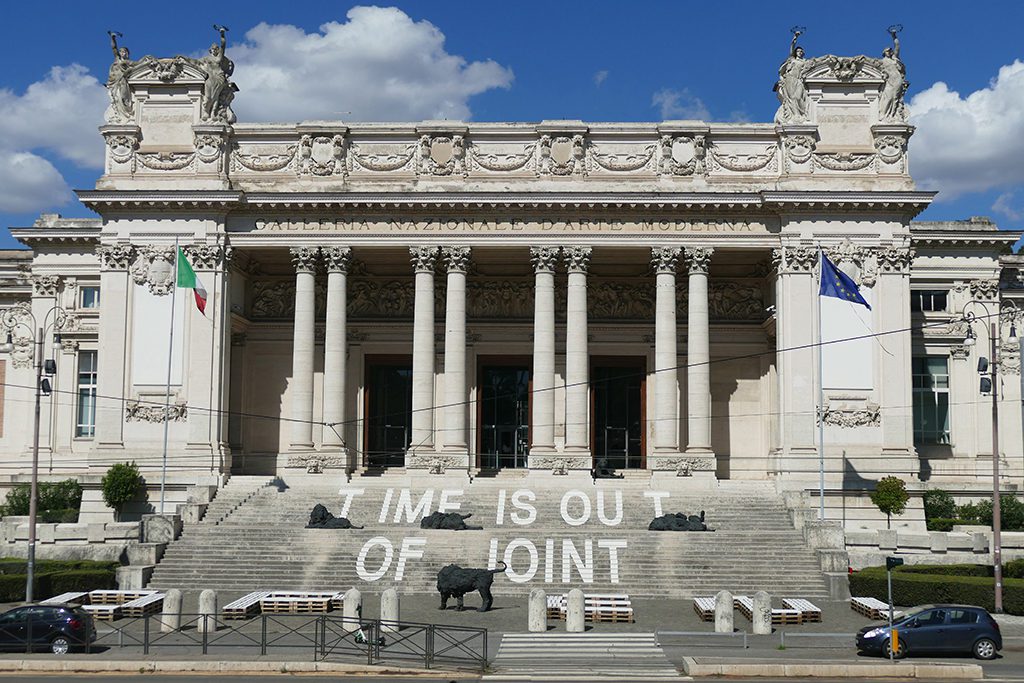
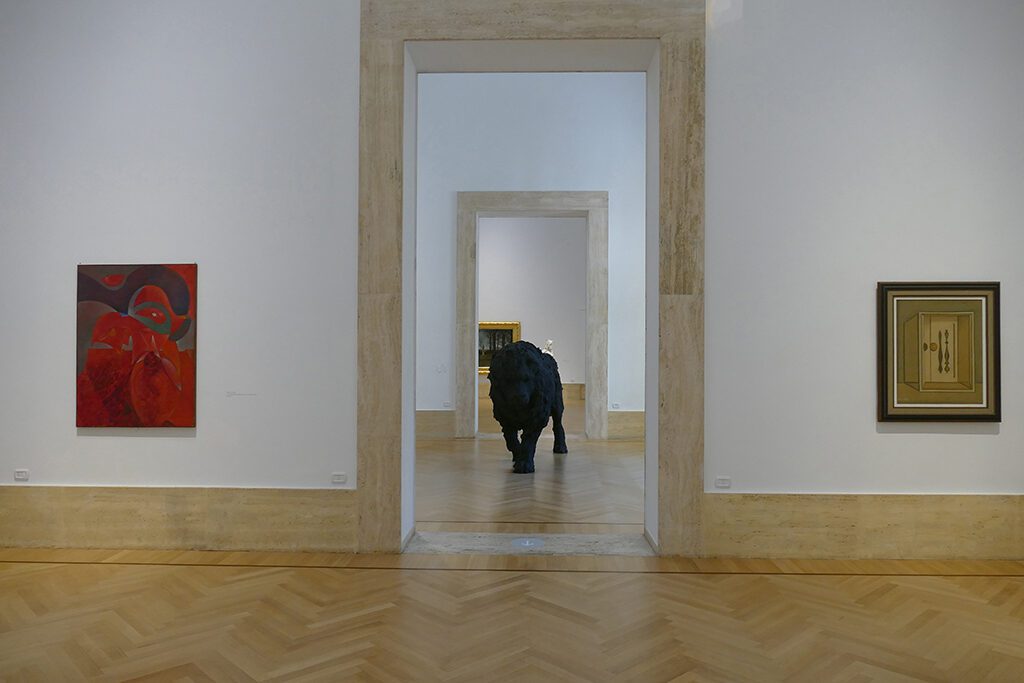
In 1915, the collection transitioned from the Palazzo delle Esposizioni to the Palazzo delle Belle Arti.
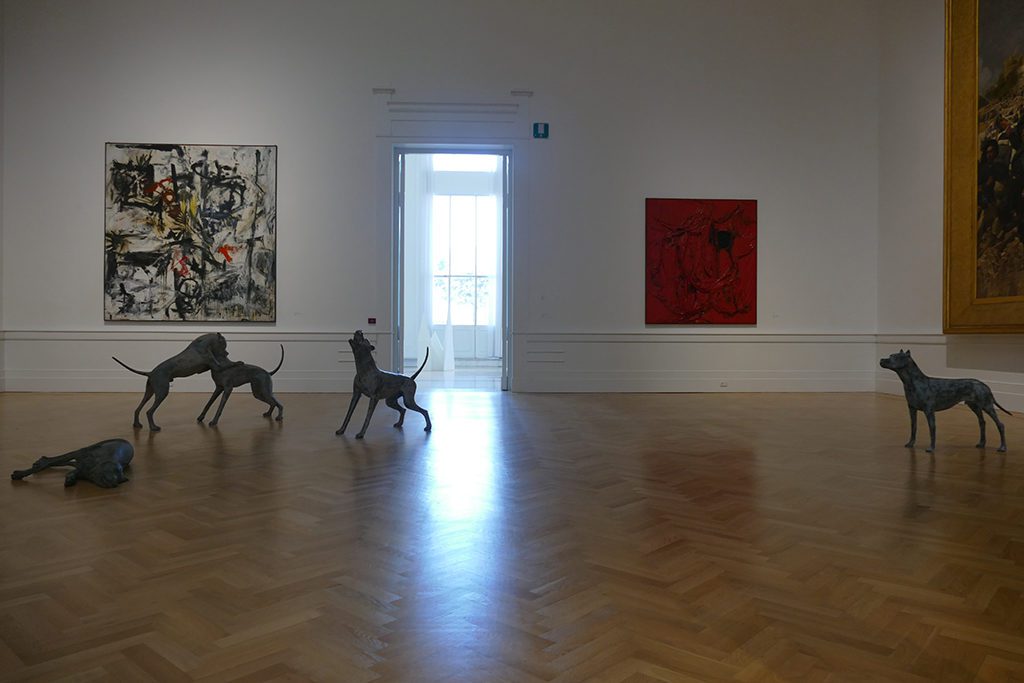
Today, the collection includes over 5,000 paintings and sculptures from the neoclassical period to contemporary. You can admire works by Antonio Canova, Alexander Calder, Alighiero Boetti, Giorgio De Chirico, Marcel Duchamp, Lucio Fontana, Alberto Giacometti, Gustav Klimt, Claude Monet, Henry Moore, Pistoletto, and Andy Warhol, to name just a few of the internationally renowned artists on display.
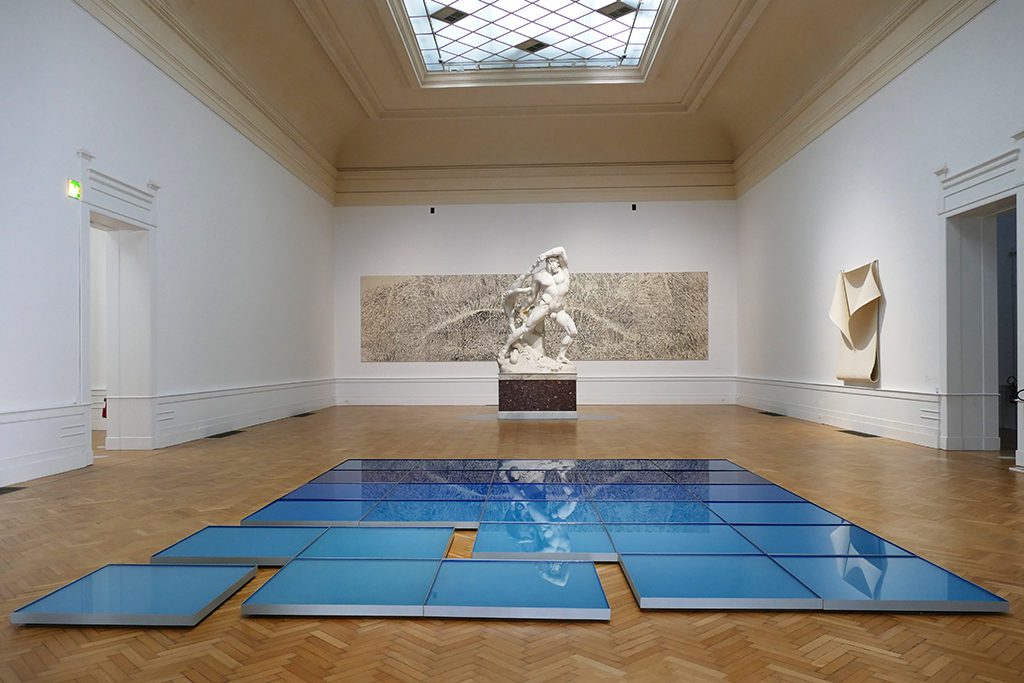
A visit to the Galleria Nazionale d’Arte Moderna can be pretty refreshing after all the Antiquity, Renaissance, and Baroque you get to see all around the city. Apart from Monday, it’s open daily from 9 a.m. to 7 p.m. and the general entrance fee is 15 €uros.
At Piazza di Spagna
The Piazza di Spagna is just a stone-throw from the southern corner of the Villa Borghese. And just like you have to see the Empire State Building in New York or the Eiffel Tower in Paris, you have to have visited the Piazza di Spagna. For the myth.
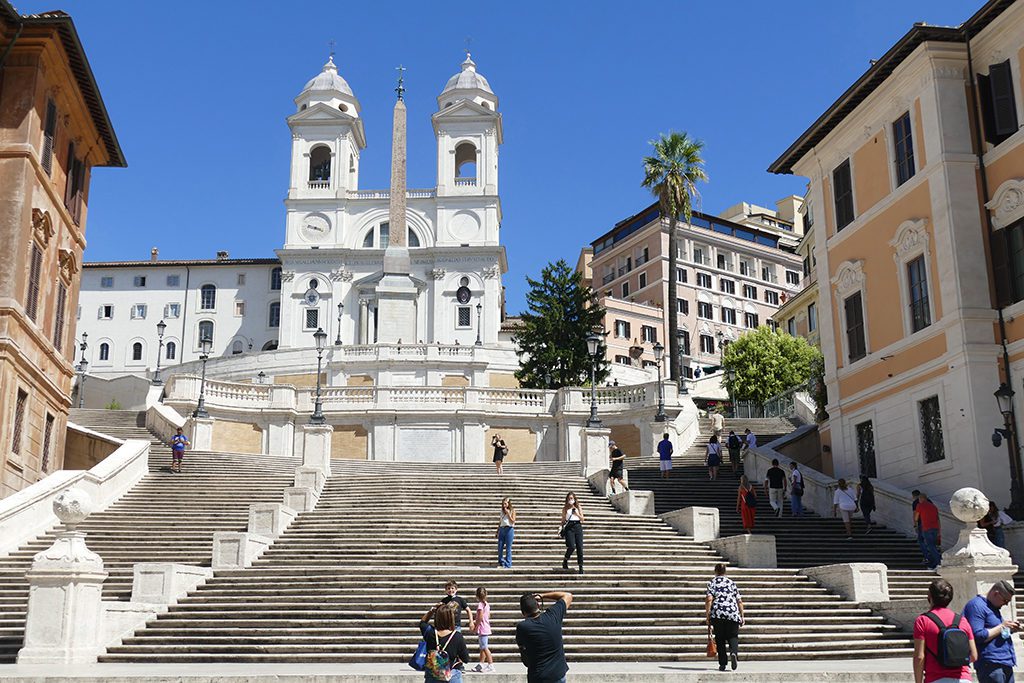
Obviously, also for the world-famous Spanish Steps that connect the square with the Church Santa Trinità dei Monti. In front of the steps is another artistic fountain. It was the grand Bernini’s father Pietro who built the Fontana della Barcaccia in the form of a stranded boat.
On the square’s southern part is the Palazzo di Spagna. It houses the Spanish Embassy to the Holy See and the Sovereign Order of Malta. The fact that it was basically an extraterritorial property of Spain for centuries gave the square its name.
Different Faiths
The Colonna dell’Immacolata, the Pillar of the Immaculate, stands right in front of the Palazzo di Spagna. On the feast day of the Conception of Mary on December 8th, the Pope traditionally comes to the column to pray.
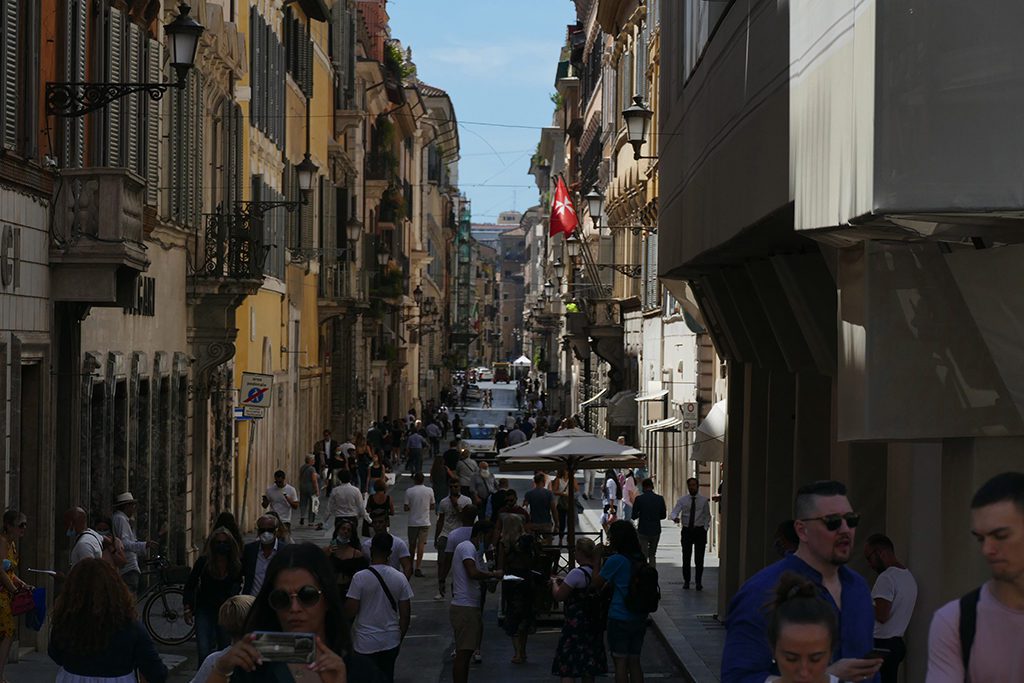
While the Pope is praying, many others come to this neighborhood to pay homage to the Gods of fashion. Actually, the Piazza di Spagna is the center of Rome’s high fashion district. The most important Italian and international fashion brands have branches on Via dei Condotti and the side streets.
Fontana di Trevi
Only ten minutes south of the Piazza die Spagna is another truly legendary landmark. The Trevi Fountain is with a height of 26 meters and a width of 50 meters Rome’s largest fountain. Also, it is definitely one of the most famous fountains in the world.
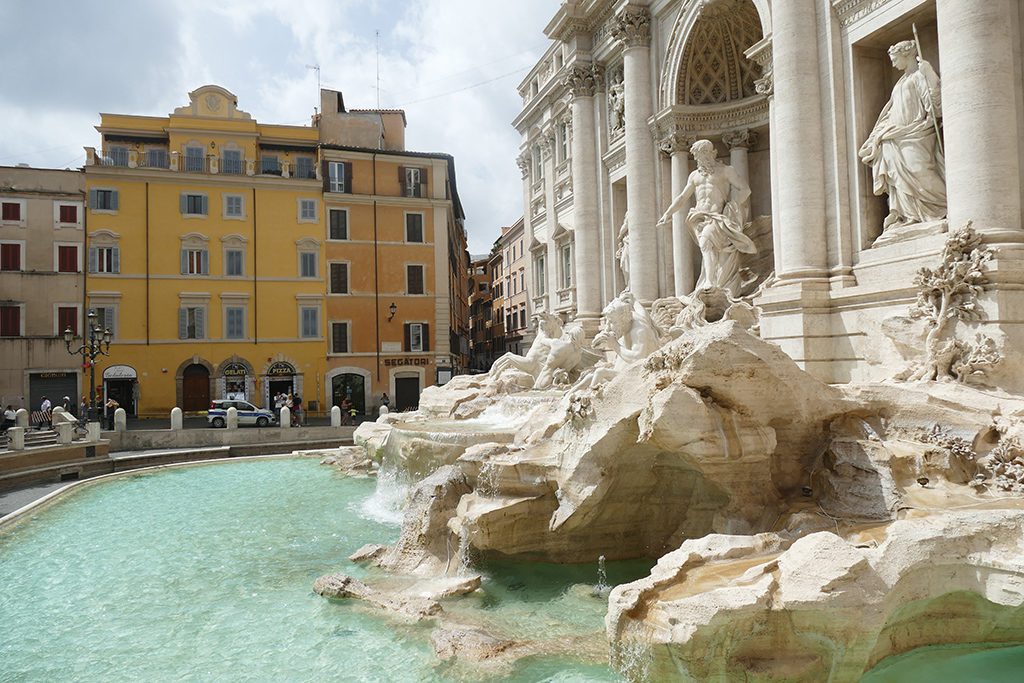
In 1640, on behalf of Pope Urban VIII., Gian Lorenzo Bernini began building an elaborate fountain. For lack of money, however, they only enlarged the square and built a large shallow basin. Around the same time, the Counts Conti di Poli built the two wings of their palace next to the fountain.
Finally, by then rather unknown architect Nicola Salvi built today’s fountain in the mid-18th century.
The fountain has a palace facade with a protruding triumphal arch. In front of it, sea figures cavort on a rocky landscape. In between, water runs into a large flat basin.
Legend has it that throwing a coin in the fountain guarantees your return to Rome. Judging from my many trips to Italy’s capital, for me, it’s definitely working.
Trivia
A couple of movies contributed to the fountain’s fame – mind you, before Instagram.
Already in 1954, the American movie “Three Coins in the Fountain” made the custom of tossing coins into the fountain popular.
Then, in 1960, in Federico Fellini’s “La Dolce Vita”, Anita Ekberg takes a nightly bath in the fountain with Marcello Mastroianni. It’s actually one of the most famous scenes in film history.
In the film “Totòtruffa 62”, the Italian comedian Totò tries to sell the Trevi Fountain to a tourist in 1961. By then, the fountain was already ridiculed as a tourist magnet.
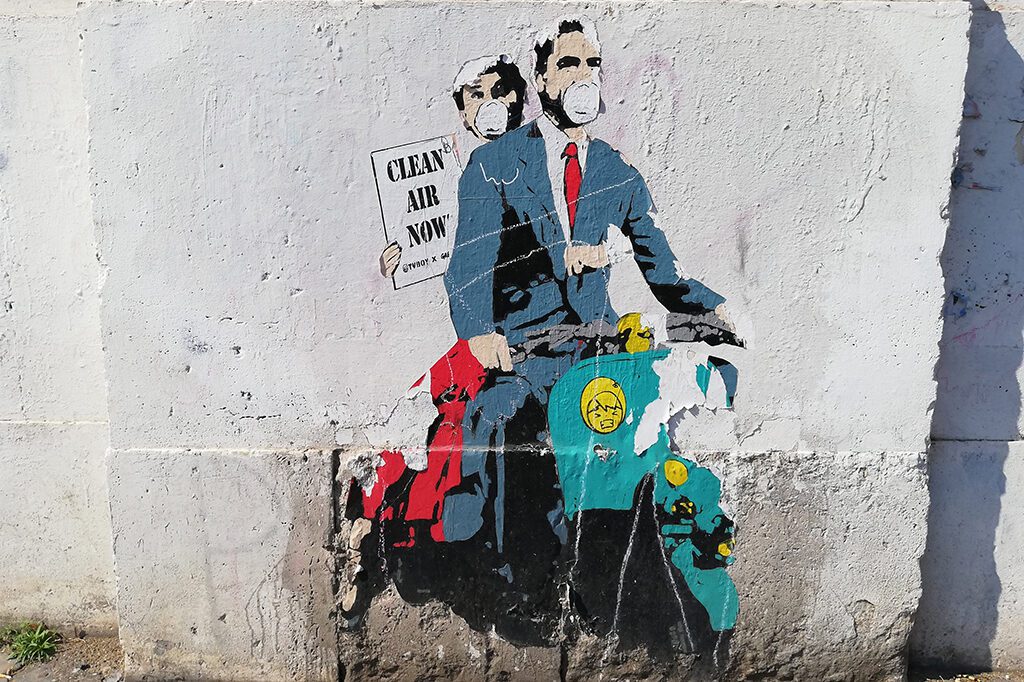
The fountain also appeared in Hollywood’s most favorite production set in Rome. “Roman Holiday” is a romantic film featuring Audrey Hepburn and Gregory Peck in the leads. For Hepburn, the success of the film was her breakthrough in Hollywood, and her portrayal of a modern princess earned her the Oscar for Best Actress.
Around Piazza Barberini
The Piazza Barberini was laid out in the 16th century and named after the adjacent Palazzo Barberini. Until the 18th century, unknown deceased were displayed on the square to be identified.
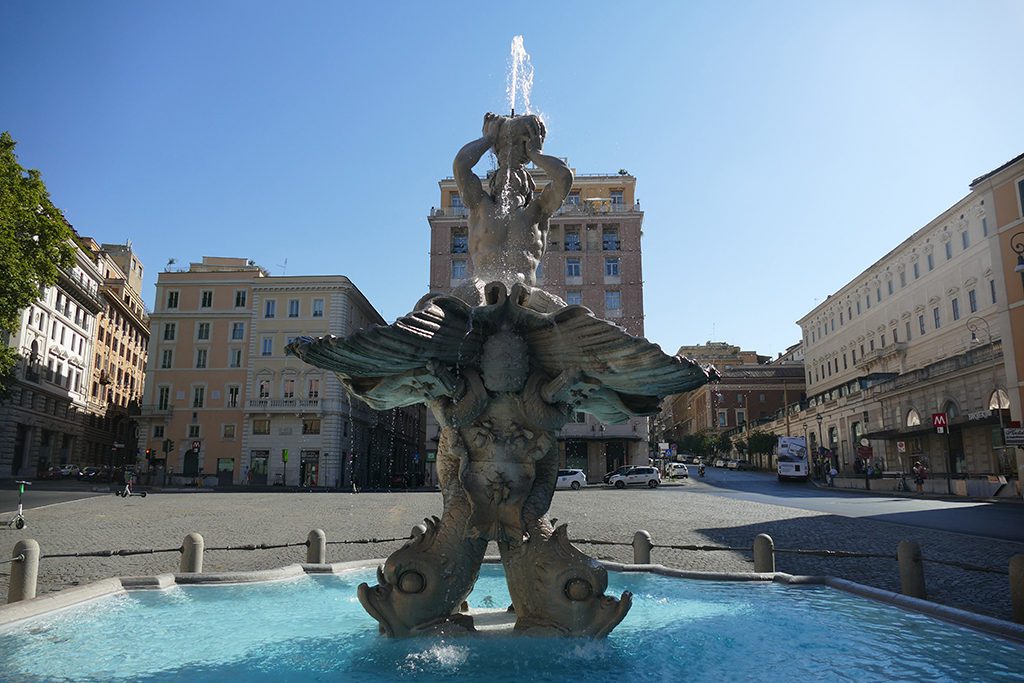
There are two remarkable fountains on the square – mind you, two of 2,000. Both were designed by Gian Lorenzo Bernini in the 17th century. I mean, one could really think that this good man built today’s Rome practically by himself.
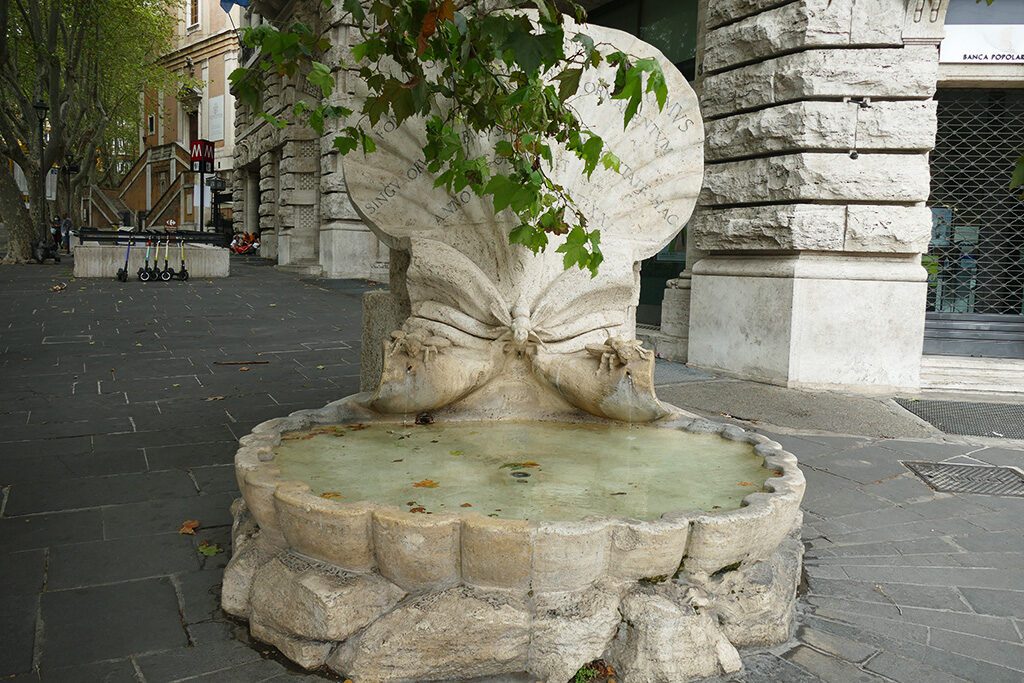
Although both fountains have a rather ocean-related theme, they are adorned with three bees. The bees, as a symbol of hard work, dedication, and eloquence, are an important element in the Barberini family’s coat of arms. Due to the family’s wealth and importance, they were incorporated in many of the Baroque designs.
Le Quattro Fontane
Talking ’bout fountains: Not far from the Piazza Barberini, actually, just one very long block up south are even four fountains at each corner of a street crossing.
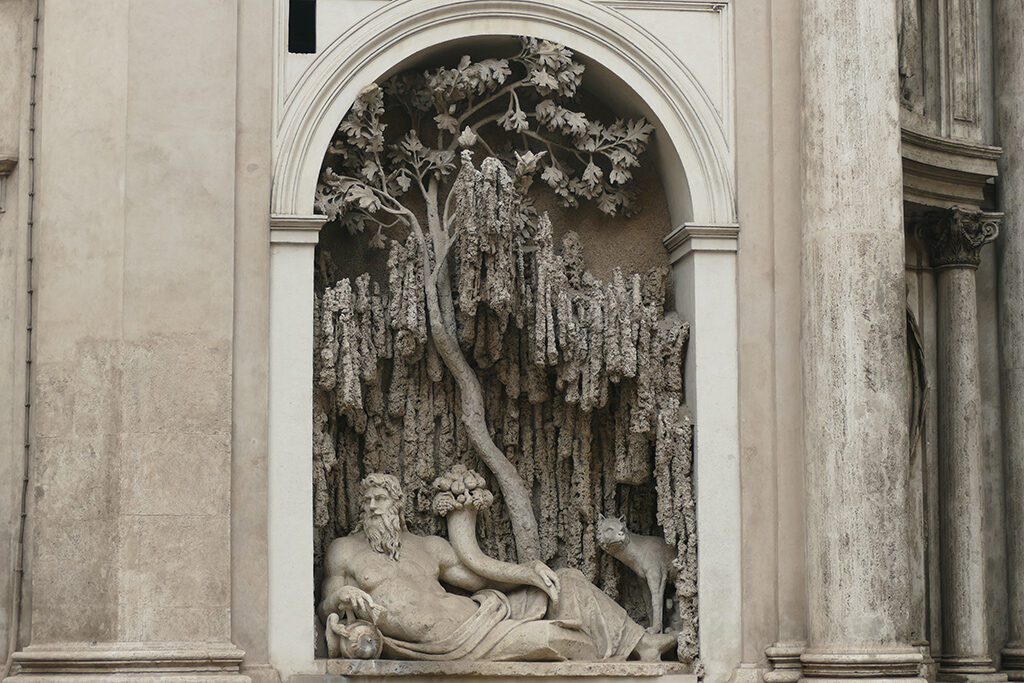
Appropriately, they are named Quattro Fontane, hence, four fountains. And guess who built them: Domenico Fontana! I mean, come on, how crazy is that?!
These four basins are at the intersection of Via Quirinale and Via delle Quattro Fontane on top of the Quirinal hill. The artist chose four deities, namely the river gods of Arno and Tiber as well as the goddesses from Roman mythology Diana and Juno.
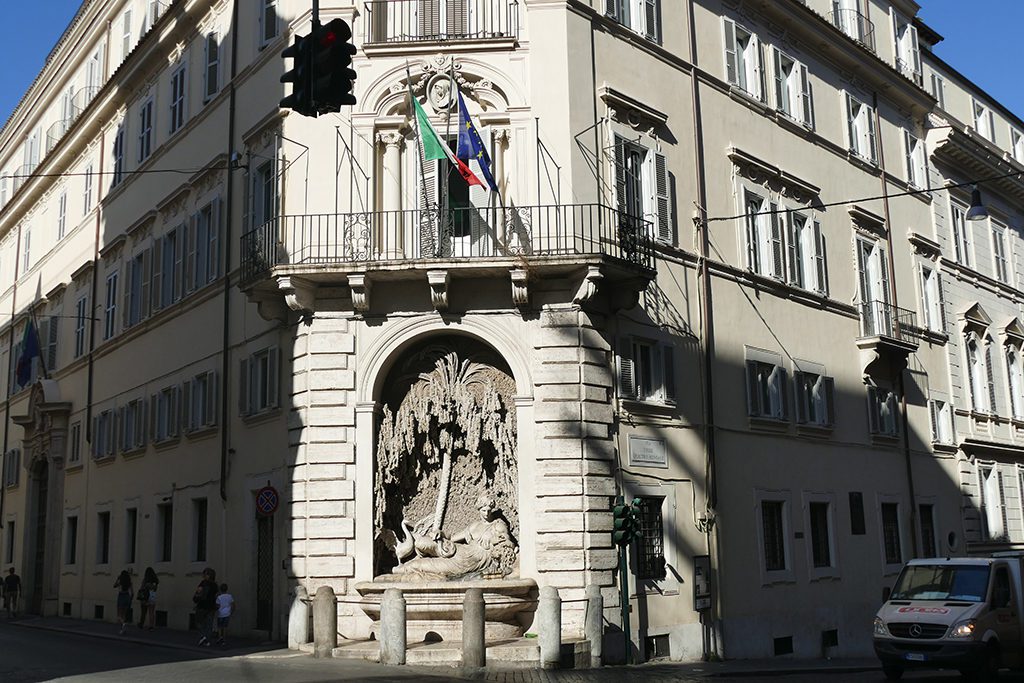
This intersection is actually also a piece of art in terms of urban planning. The center of the crossing is located on the visual axes of four distinctive buildings in Rome. From here, you can spot the obelisks on the Piazza di Quirinale, at the Piazza di Spagna, and in front of the Basilica Santa Maria Maggiore as well as the city gate of the Porta Pia.
Once you’re at the intersection, you might want to pay Francesco Borromini’s Baroque Church of San Carlo alle Quattro Fontane a visit. Borromini built it in the mid-17th century, and it is considered one of his masterpieces.
Palazzo Barberini
Two nephews of Pope Urban VIII, namely Taddeo and Francesco Barberini, commissioned this Baroque palace in the early 17th century.
The first architect was Carlo Maderno, however, after his death in 1629, no other than Gian Lorenzo Bernini took over.
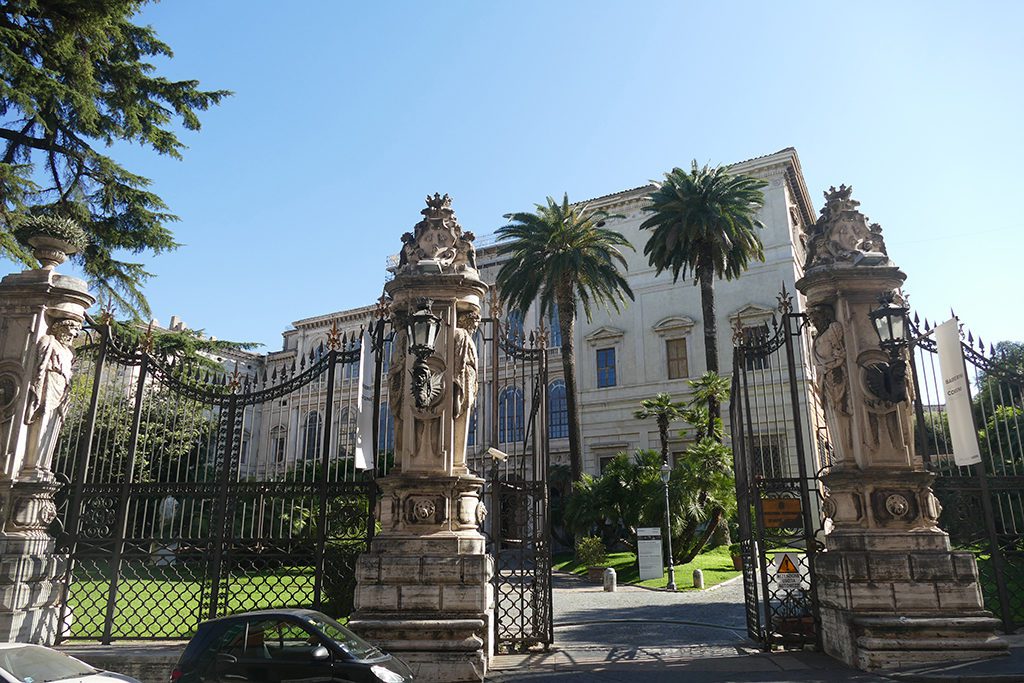
Also, the man in Bernini’s shadow, Francesco Borromini, designed the spiral staircase in the south wing.
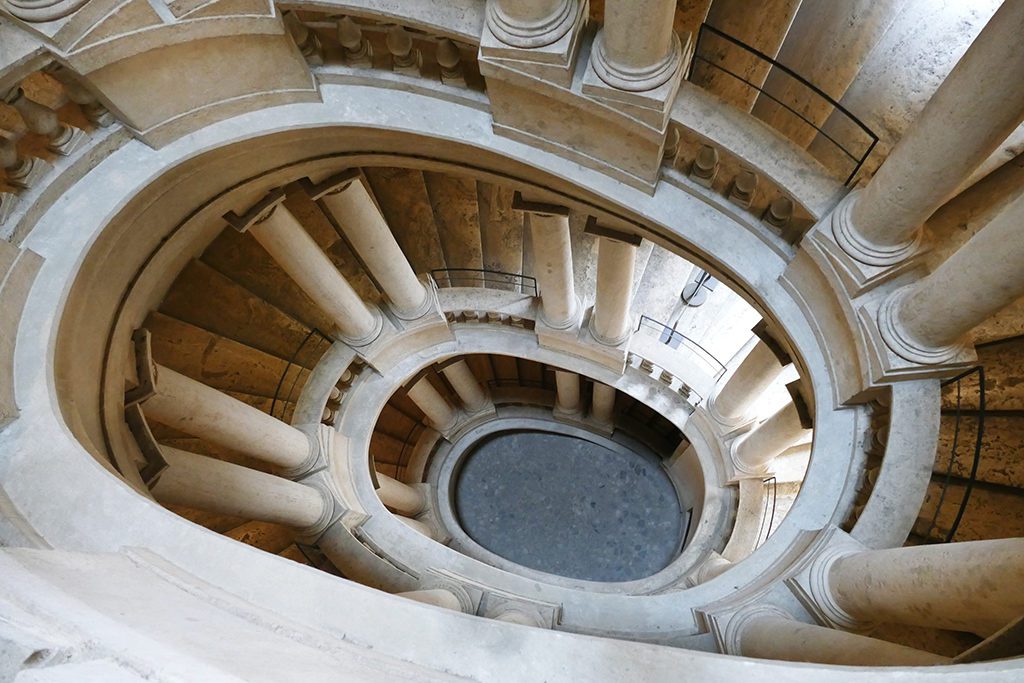
The art collection of over 1500 works ranges from the 12th century to neoclassicism. The foundation of this amazing collection came into the possession of the Italian state after the dissolution of the Papal States in 1870.
Some of the most famous works are Madonna col Bambino by Filippo Lippi, Raphael’s La Fornarina, Jacopo Tintoretto’s Christ and the Adulteress,
El Greco’s Adorazione dei Pastori and – last but not least – Caravaggio’s Judith and Holofernes.
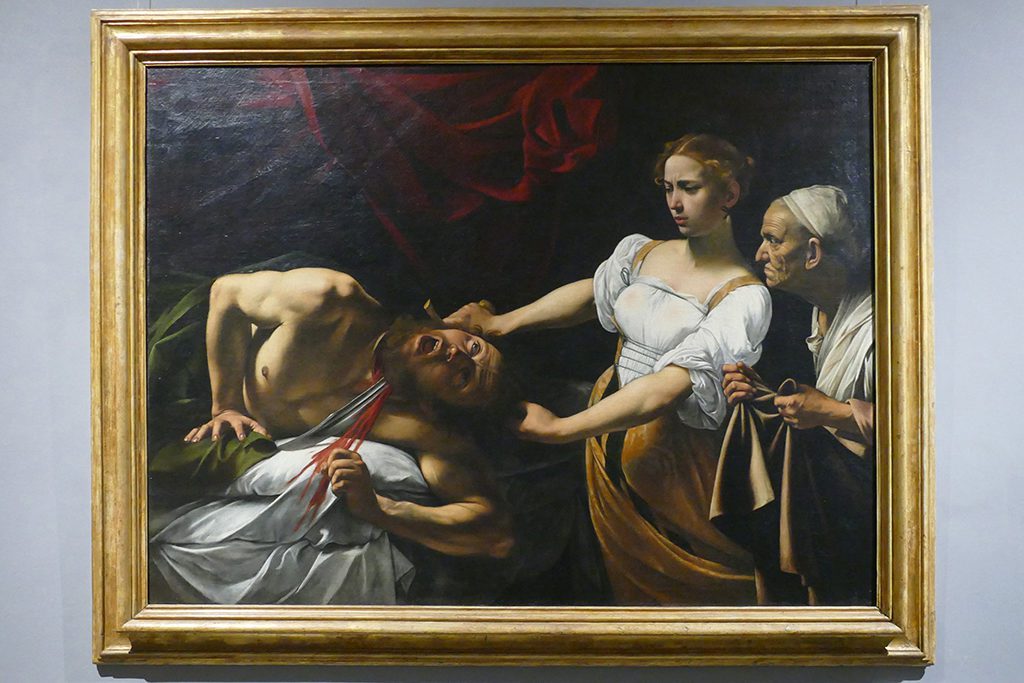
As in many Italian museums, when visiting this gallery, you shouldn’t pay attention to the paintings and sculptures. Let also the lavishly decorated walls and most of all the amazing ceilings distract you from the exhibits.
Allegory of Divine Providence and Barberini Power
Particularly, the grand salon will just blow you away. It’s twice as high as the other rooms. The walls are coated with a shimmering golden silk wallcovering.
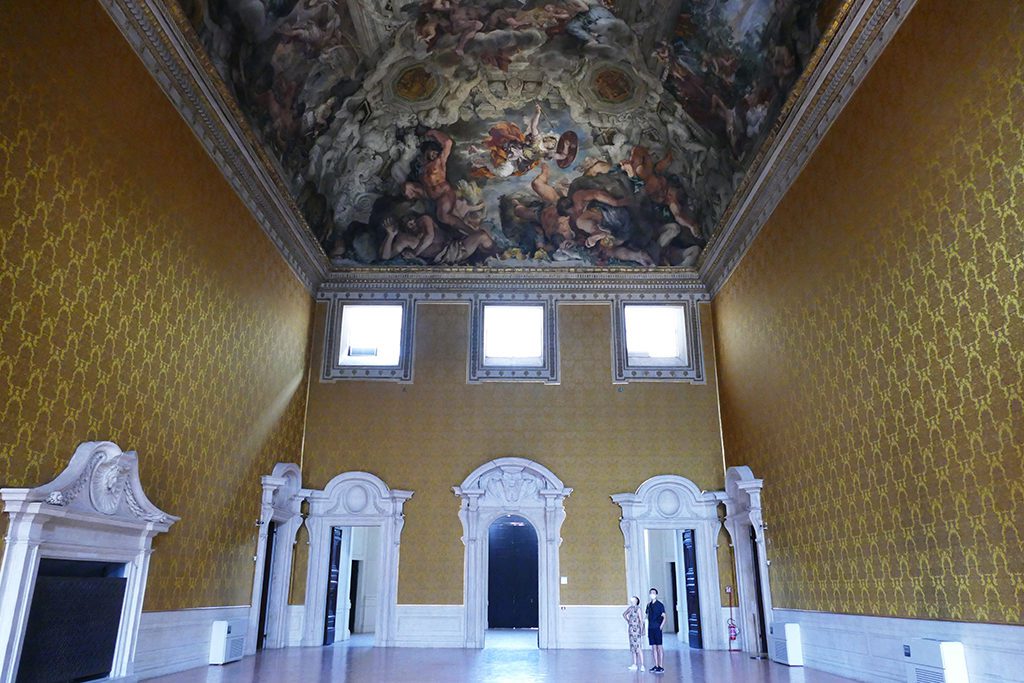
But look up! On the ceiling, Pietro da Cortona painted the fresco Allegory of Divine Providence and Barberini Power.
Four lateral areas and one central motif cover more than 400 square meters. The central scene represents the Divine Providence, equipped with a scepter and surrounded by a luminous halo that alludes to its divine emanation. Behind it, you’ll spot Justice, Piety, Power, Truth, Beauty, and Modesty. Above flies Immortality, represented as Urania.
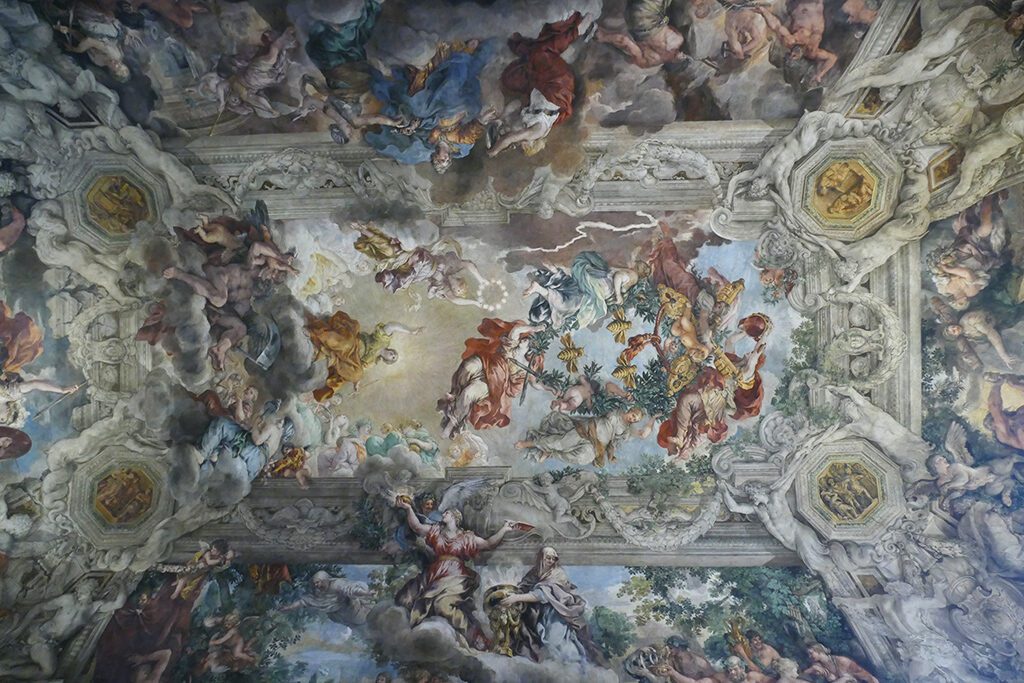
Above, at the peak of the image, the three theological virtues Faith, Hope, and Charity are holding a laurel wreath with the iconic Barberini bees in its center.
The four lateral images celebrate the “good governance” of the Pope and his nephews, the Barberini brothers.
Note
The galleries at the Palazzo Barberini are only one part of Gallerie Nazionale in Rome. The other venue is the Palazzo Corsini that I’m introducing in the chapter At Trastevere.
For the price of 15 €uros, you can visit each venue once within ten days.
Santa Maria della Concezione dei Cappuccini
North of the Piazza Barberini, basically behind the Fontana delle Api, is the church Santa Maria della Concezione dei Cappuccini.
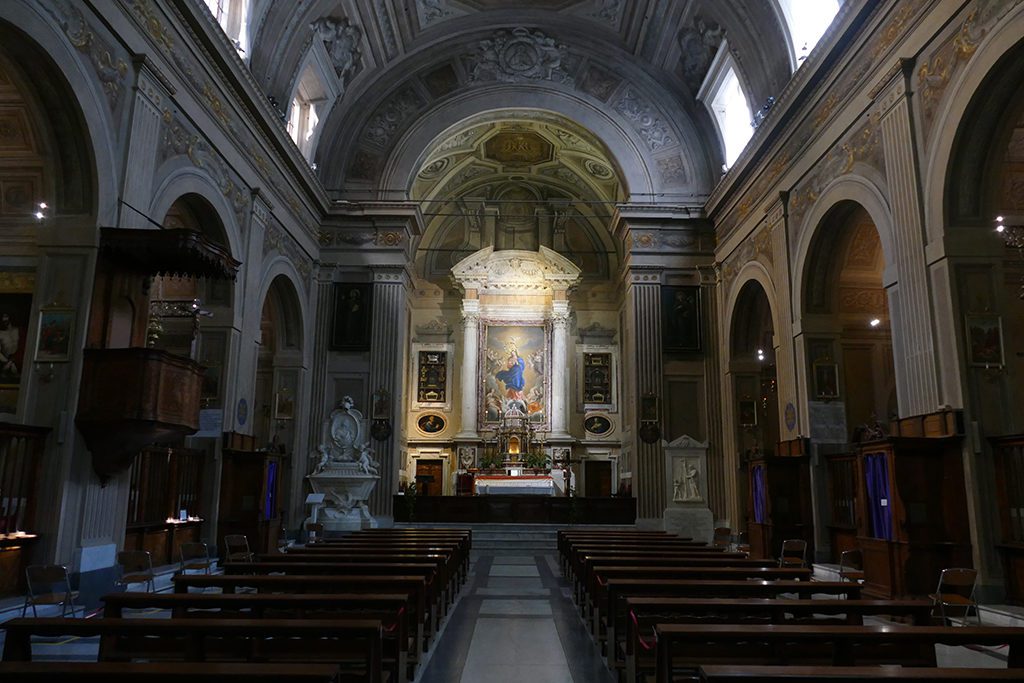
Pope Urban VIII’s brother, Antonio Barberini, was a Capuchin friar. Hence, the Pope himself commissioned the church of Our Lady of the Conception of the Capuchins. It was built in the early 17th century by Antonio Casoni. Actually, to this date, it belongs to a Capuchin monastery.
Various grand paintings by famous artists decorate the small nave and the side chapels. At the altar, you can admire the Madonna in Glory Among Angels with Saint Felix of Cantalice in Adoration of the Child Jesus by Veronese Baroque painter Alessandro Turchi.
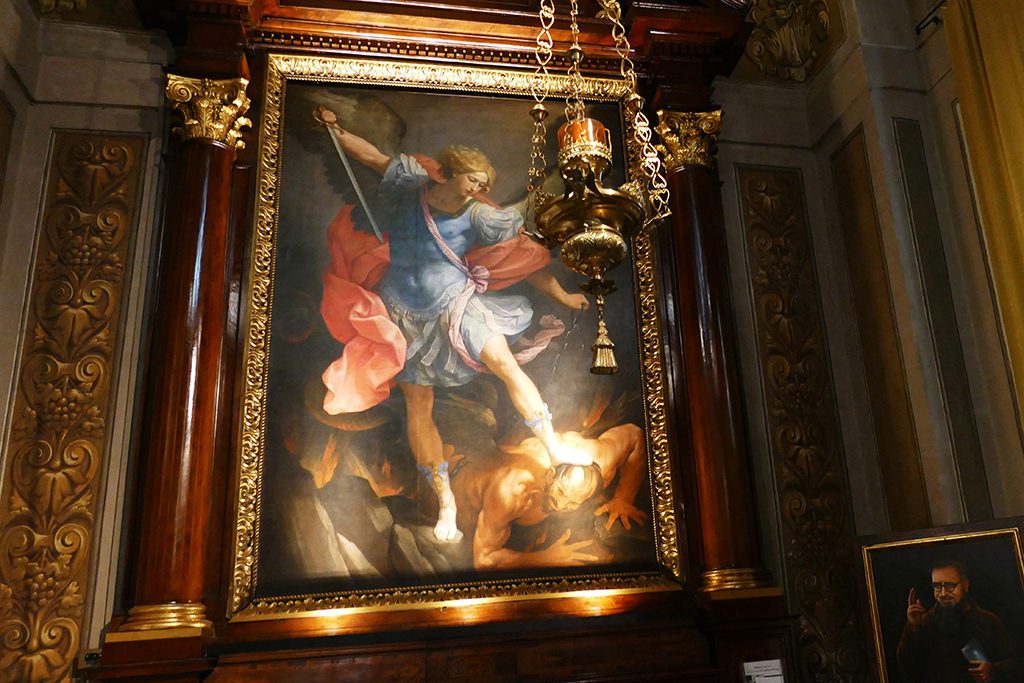
The most important work, however, is indisputably Guido Reni’s dramatic altarpiece of St. Michael the Archangel at the first chapel.
Museo e Cripta dei Frati Cappuccini
While visiting the Santa Maria della Concezione dei Cappuccini is free of charge, if you want to visit the adjacent museum and the crypt, general admission is 8 €uros.
As for the museum, I’d say whatever, but the crypt is quirky’n’creepy and totally worth the visit.
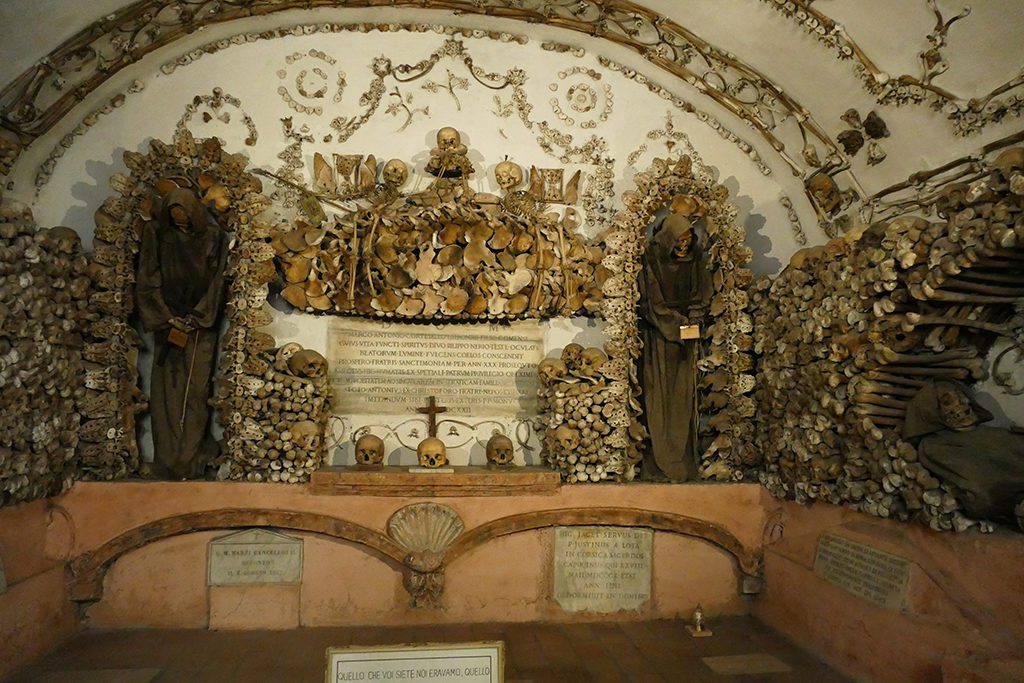
This ossuary contains the remains of 4,000 friars buried between 1500 and 1870. During that period, the Roman Catholic Church permitted burials in and under churches.
Obviously, those Capuchin friars were very witty and creative. Hence, they tinkered with pretty designs from their co-religionists’ mortal remains.
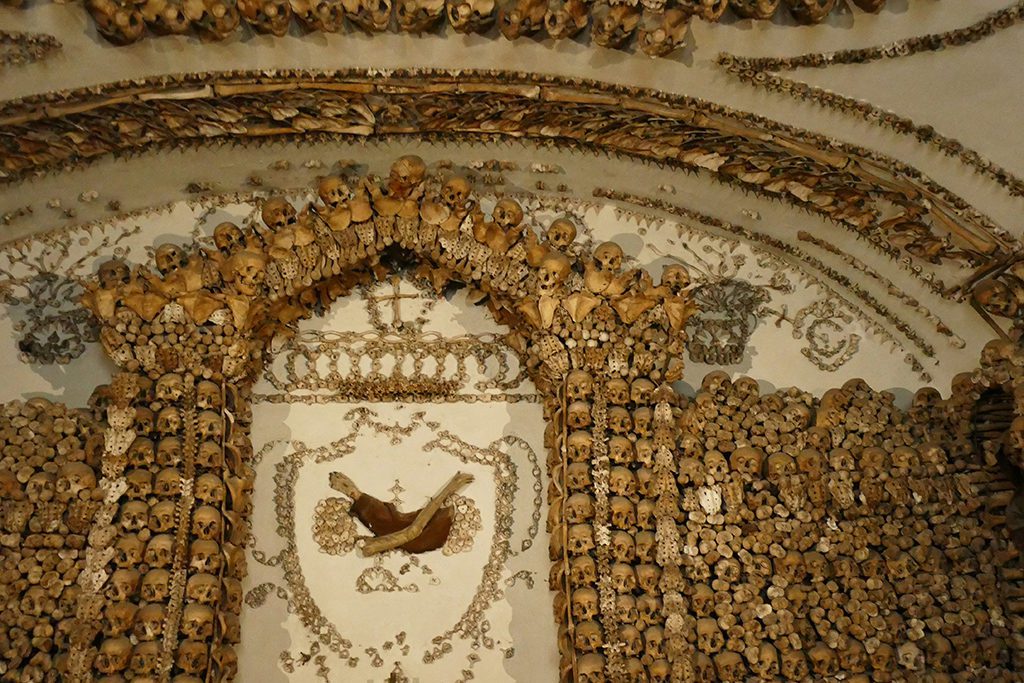
In a corridor and at six small chapels, the clever and talented friars arranged skulls, pelvic bones, and shoulder blades into lovely wall decorations such as garlands, flowers, and other decors. You can also see a chandelier made entirely of bones. In addition, they left some of the skeletons intact. Wearing their Franciscan habits, they decoratively stand amidst their brothers’ shinbones.
Trivia
Several famous authors wrote after they had visited the crypt. Nathaniel Hawthorne describes the crypt in his novel “The Marble Faun”. Marquis de Sade affirmed in his “Journey to Italy” that he had never seen anything more striking. And Mark Twain portrayed the crypt in his travel book “The Innocents Abroad”.
Across Piazza della Rotonda
Now, to get from the Piazza Barberini to the Piazza della Rotonda, you can just walk down the Largo Chigi. It’s about 15 minutes – and I recommend you stop about halfway at the Rinascente, since 1865 Italy’s high-end department store.
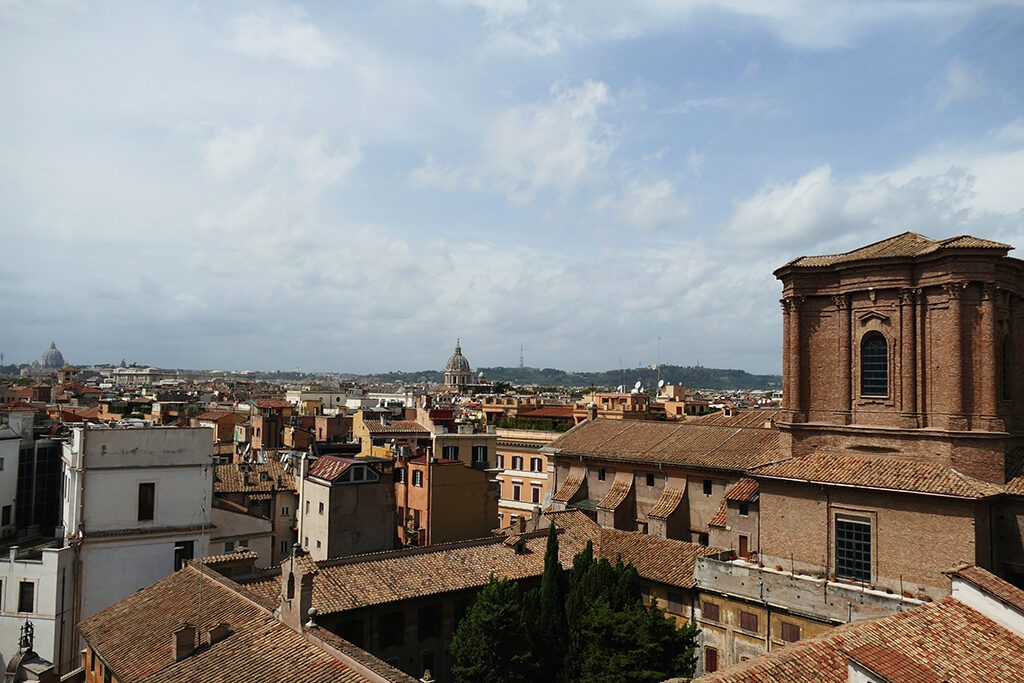
You don’t need to shop there to get to the 6th floor and the rooftop terrace. From there, you have a grand panoramic view of Rome – and maybe you’d like to enjoy it while having an aperitivo. La Dolce Vita can be so…sweet.
The Piazza della Rotonda itself is not that exciting. However, there are some of the most important landmarks in the vicinity.
The Pantheon
The Pantheon has been consecrated as a Roman Catholic Church. Its official name is Santa Maria ad Martyres.
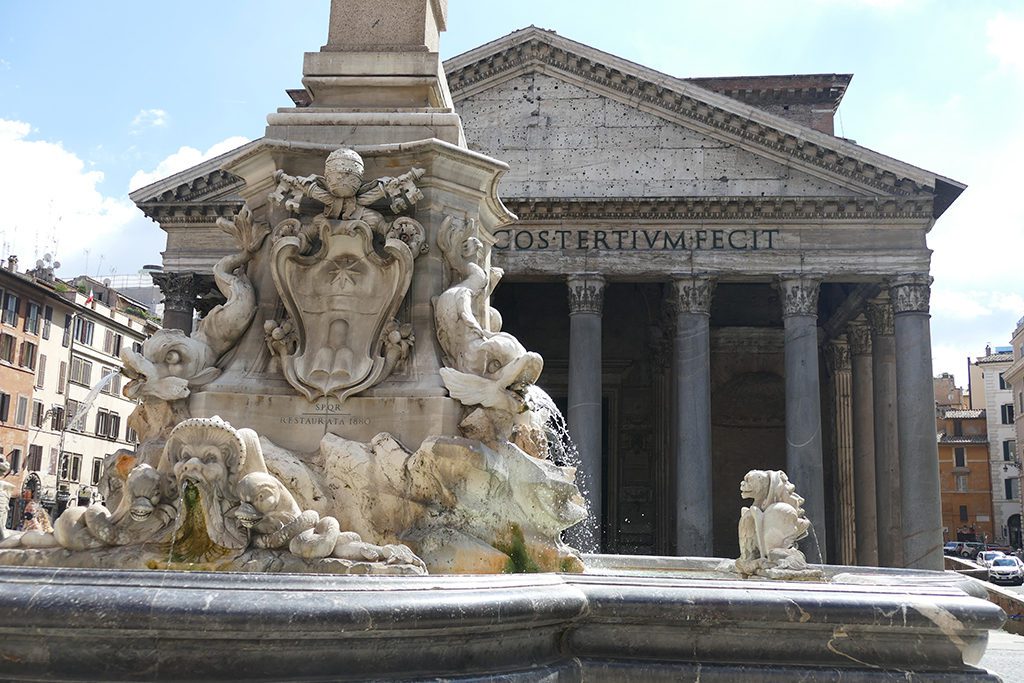
For over 1,700 years, the Pantheon had the world’s largest dome, measured by its inner diameter. It is one of the best-preserved buildings of Roman antiquity. Construction began under Emperor Trajan around 114 AD and ended under Emperor Hadrian around 125 AD.
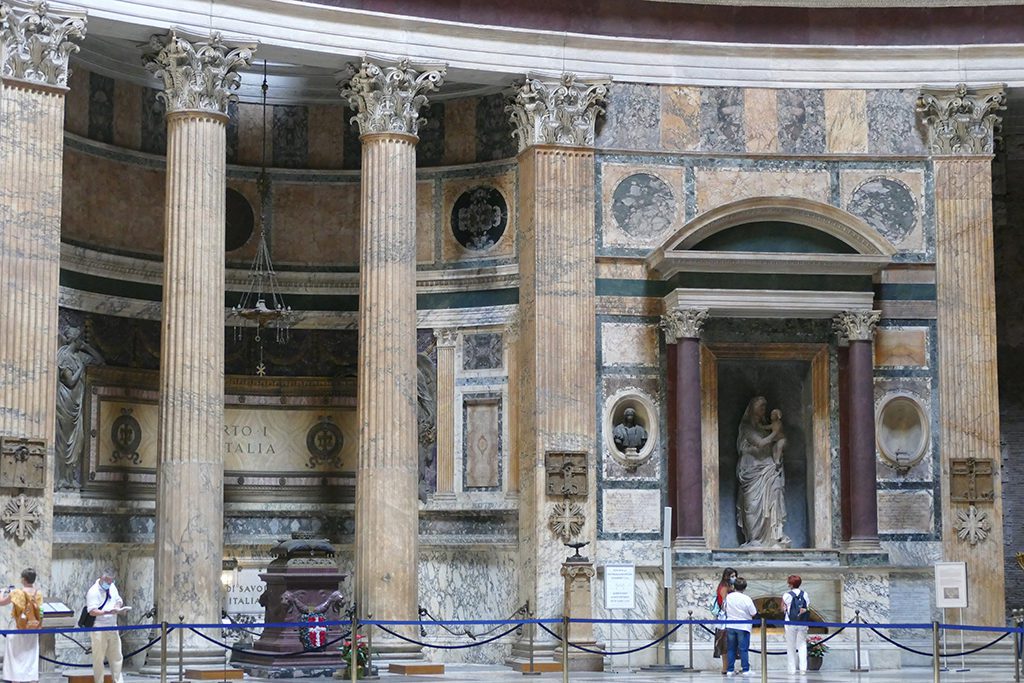
From the Renaissance onwards, the Pantheon has been the burial place of important artists such as Annibale Carracci and, of course, Raphael.
After the unification of Italy, the building also served as the burial place of the first two Italian Kings, Vittorio Emmanuele II and Umberto I. The remains of the last Italian King, Vittorio Emmanuele III, however, were not admitted to the Pantheon because of his doubtful position during the fascist era.
Interestingly, in contrast to most other Roman churches, the Pantheon is owned by the Italian state, not by the Catholic church.
Chiesa di Sant’ Ignazio di Loyola
But don’t you worry, there are enough houses of worship left for the Curia. For instance, Saint Ignatius of Loyola, next to the Chiesa del Gesù, the second-largest Jesuit church in Rome. It is the burial place of three saints and a Pope.
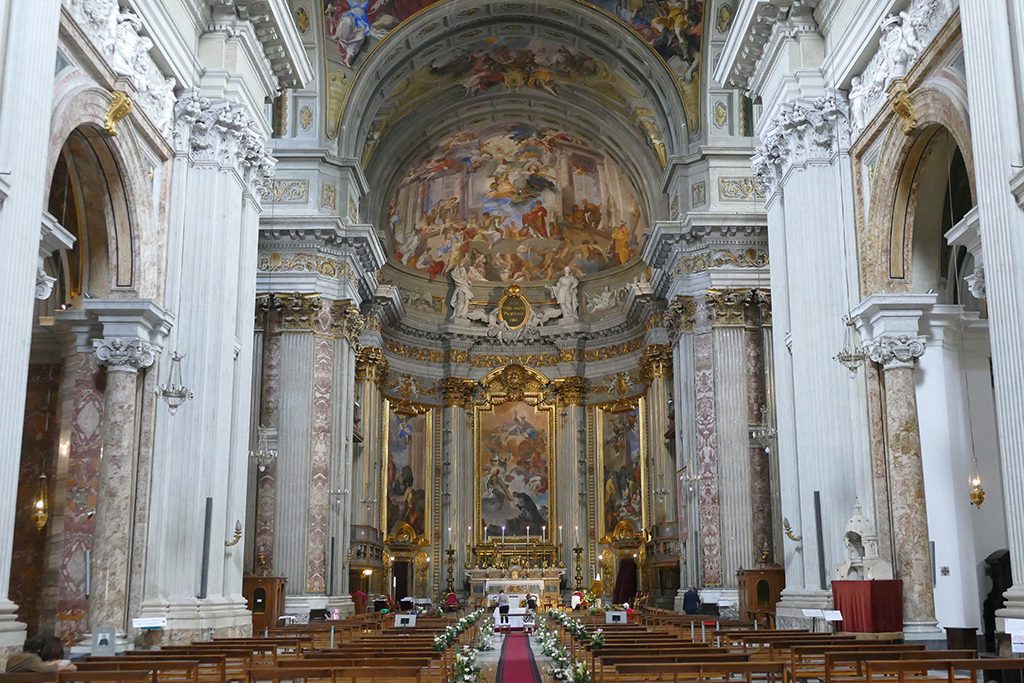
Its most outstanding features, however, are the perspective frescoes by Andrea Pozzo, a painter and Jesuit friar.
This master of perspective architecture had to solve the lack of an actual dome by illusionistic painting. Since the dome painting was such a success, Pozzo eventually painted the entire vault.
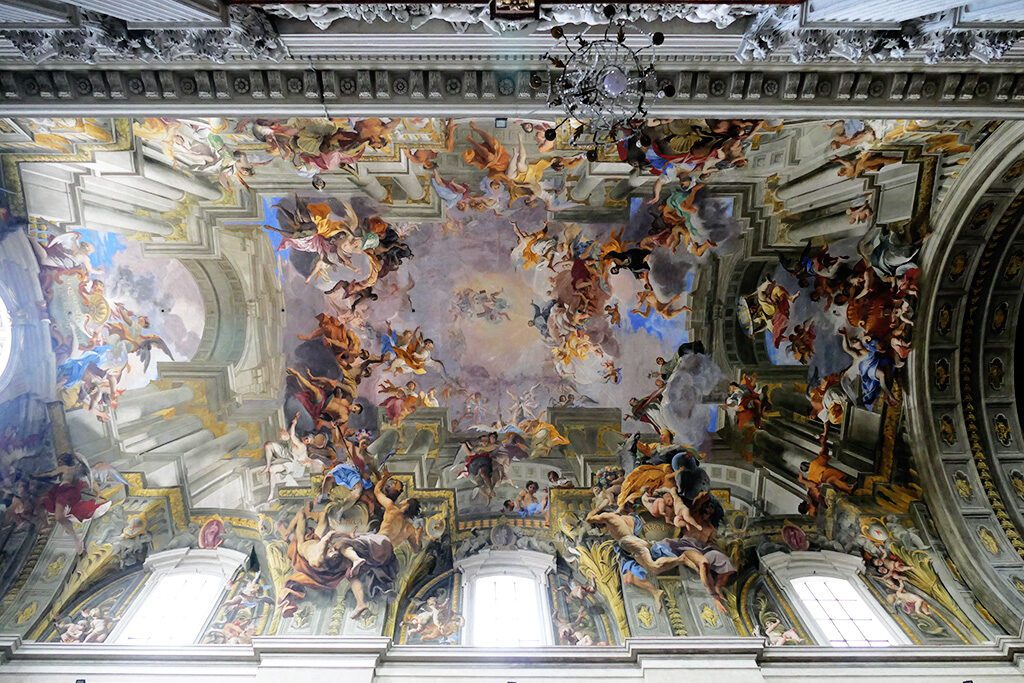
The theme of the huge fresco above the nave is the apotheosis of Saint Ignatius.
I’ve seen an incredible number of ceilings at churches and palaces in Rome, however, this fresco has actually been the most impressive one.
Gelateria Della Palma
Talking ’bout impressive – no visit to Rome would be complete without loads and loads of gelato. Whereby I have to clarify for once and for all that gelato is the Italian word for ice cream and does not necessarily describe some delicacy. Consequently also bad ice cream is gelato – bad gelato.
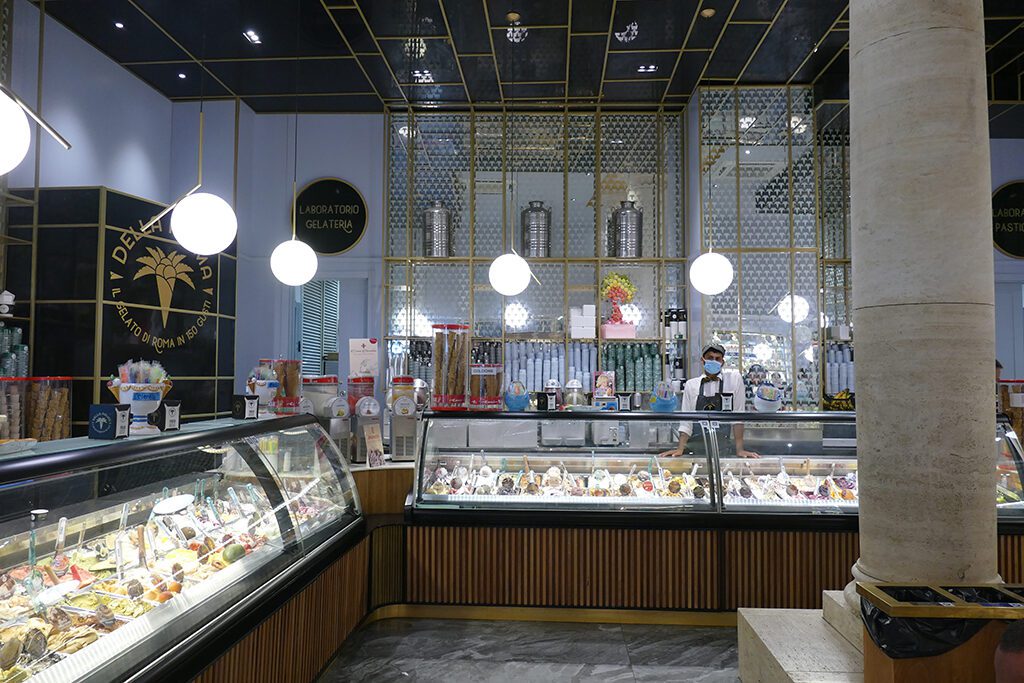
Admittedly, it’s difficult to find a bad gelato in Italy. After all, they have practiced for eternities. And with that, they have developed the most delicious and unusual gusti – flavors. During this trip, I had my most unusual gelato at Corniglia in the Cinque Terre: Basil ice cream, topped with native olive oil.
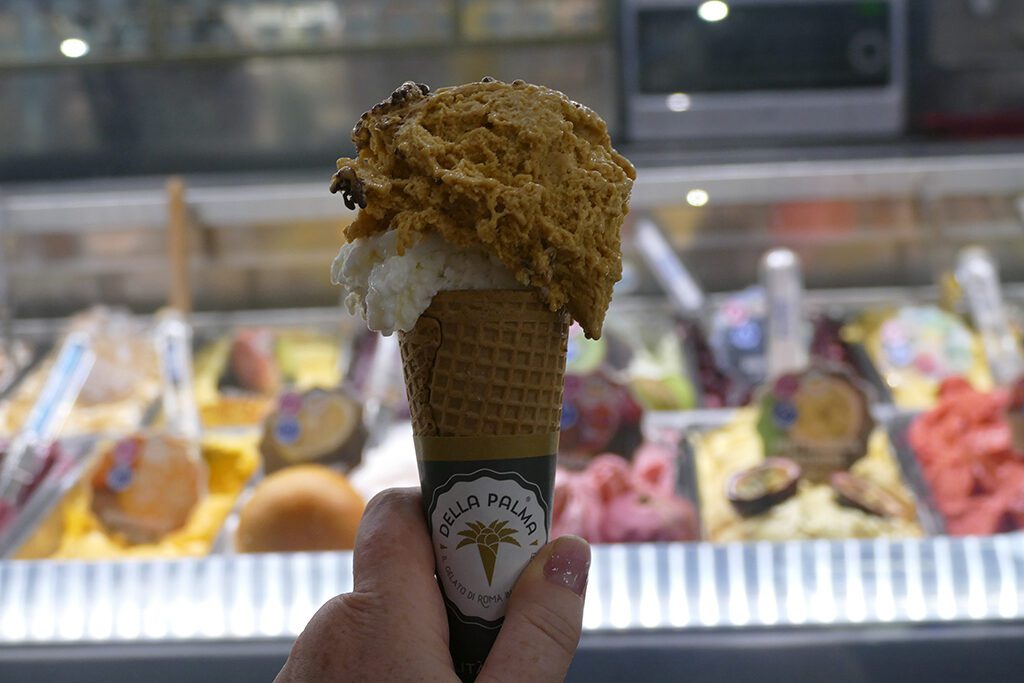
However, you can try gusti ranging from ordinary vanilla and chocolate to all kinds of exotic fruits at the Gelateria della Palma just a few steps from the Pantheon. At their parlor on Via della Maddalena, you can choose from 150 flavors!
Sampling 150 flavors takes a little time. Therefore it’s very convenient that they are open every day from 8.30 a.m. to 12.30 a.m.
Colonna di Marco Aurelio
Licking your gelato – quickly, before it melts and drops on your light-colored summer dress – walk eastwards to the Piazza Colonna.
They call it this for the Colonna di Marco Aurelio, a column erected in honor of the Roman emperor Marcus Aurelius.
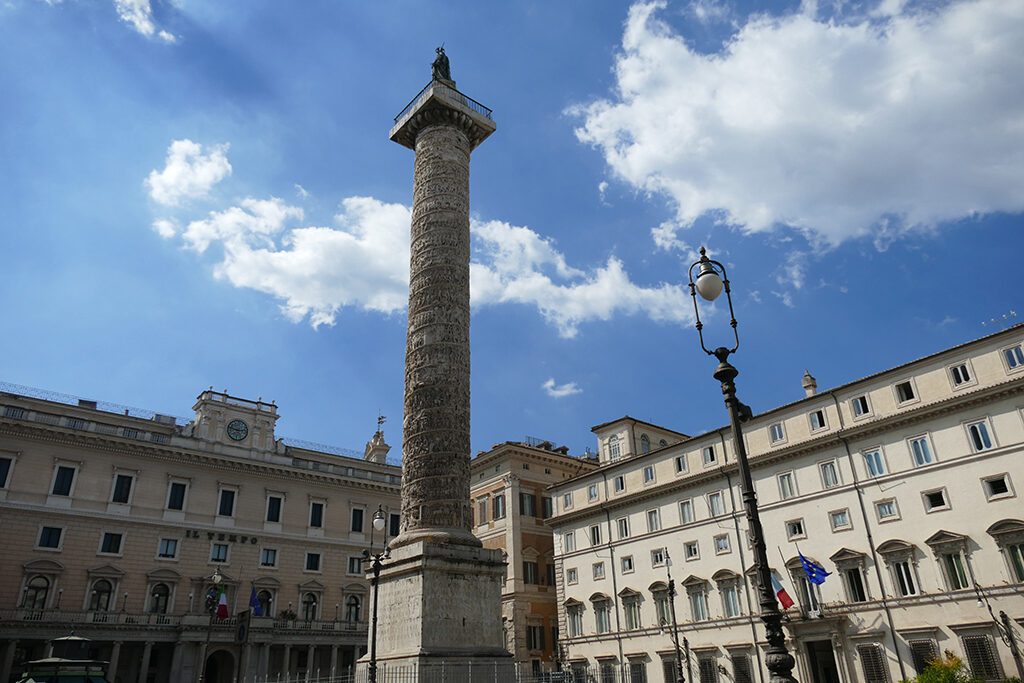
This Doric column’s shaft is over 29 meters high. You can add 10 more meters for the pedestal.
27 marble blocks were brought from Carrara to Rome to build the monument. To build an inner staircase, the builders had to hollow the blocks out. This way, it was possible to climb up all the way to the platform.
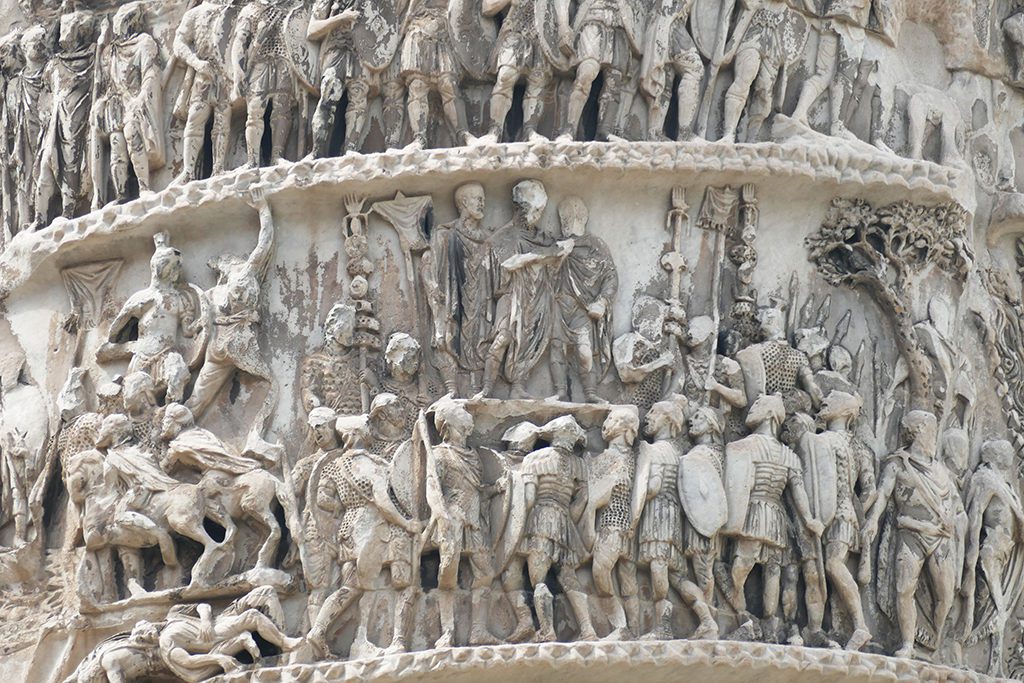
The relief band spirals in 23 turns and depicts 116 scenes from the Marcomannic Wars. Marcus Aurelius appears 62 times.
My Tip
Around the Piazza della Rotonda and the adjacent streets are a couple of jewelers selling replicas of Etruscan and Ancient Roman earrings, rings, and necklaces. If you are into this style, it’s a good place to shop for them. You’ll get very similar stuff at the gift shops of some of the museums, however, for a much higher price.
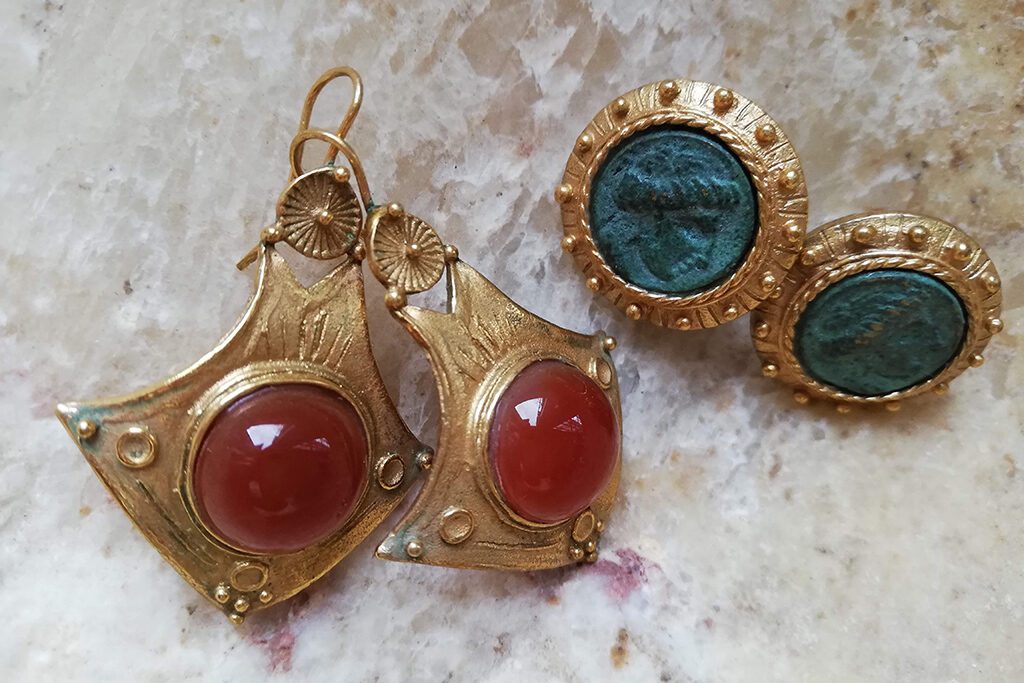
Also, this kind of jewelry makes a great gift for your loved ones at home who haven’t been so lucky to make it to Rome.
Around Piazza di San Giovanni in Laterano
The huge Lateran complex consists of several buildings, not just the Basilica of San Giovanni in Laterano.
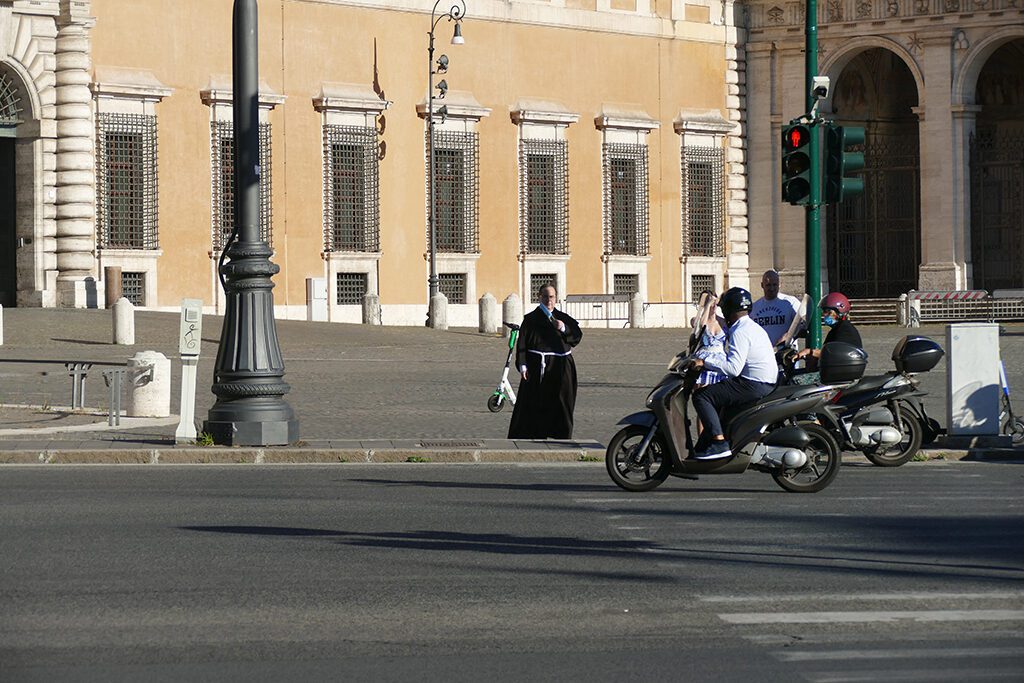
There are also the Lateran Palace, the cloister, the baptistery, and the obelisk. The Papal Chapel and the Holy Stairs are just across the street.
Basilica of San Giovanni in Laterano
The San Giovanni in Laterano is the episcopal church of Rome – and not Saint Peter’s Basilica which is at the Vatican State, as you know. It is one of Rome’s seven pilgrimage churches and one of the five papal basilicas.
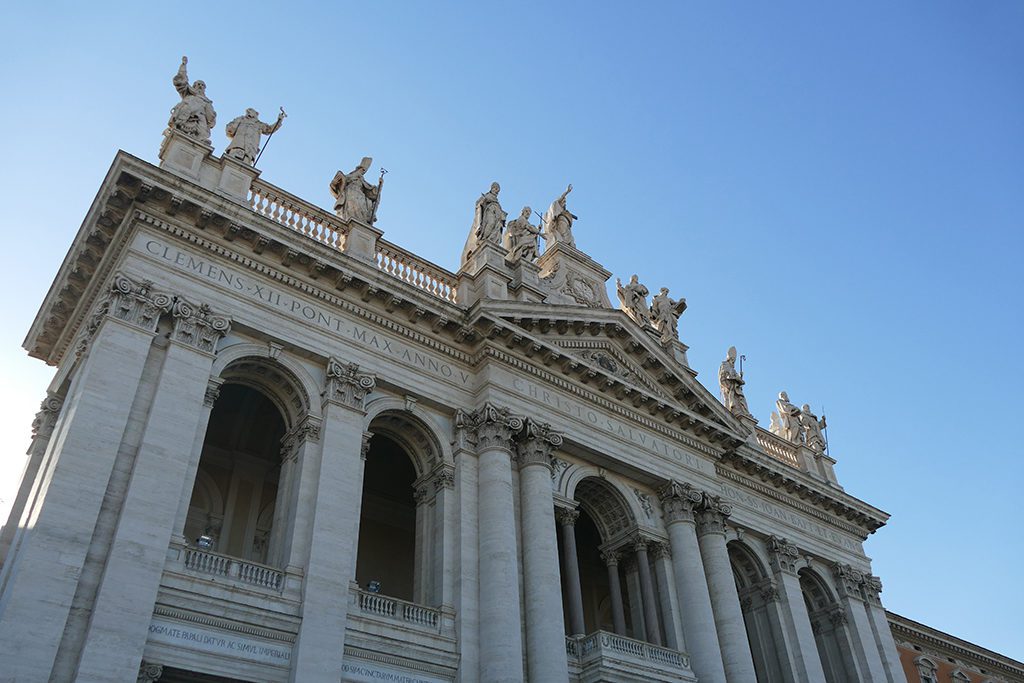
At the request of Innocent X, Francesco Borromini remodeled the dilapidated church. Although he retained the original shape of the church, he had to completely rebuild the aisles. In the main nave, he reduced the original design to 5 arches per side with wall panels in between.
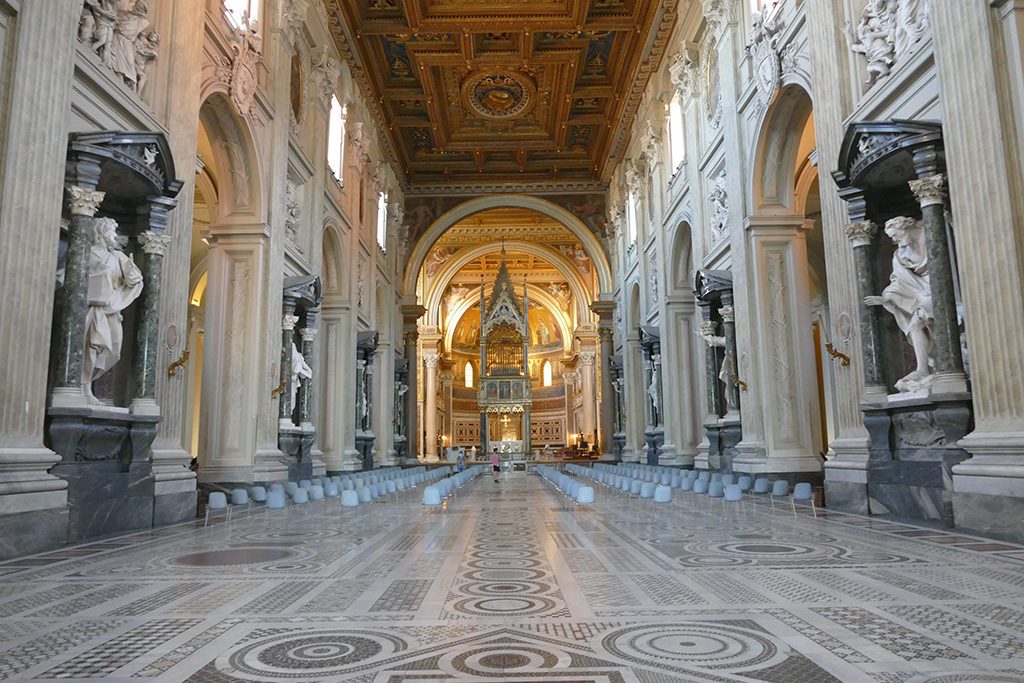
In the walled-in niches, he built large aedicules for colossal marble statues of the twelve apostles by baroque sculptors such as Camillo Rusconi, Pierre Legros, and Pierre Monnot.
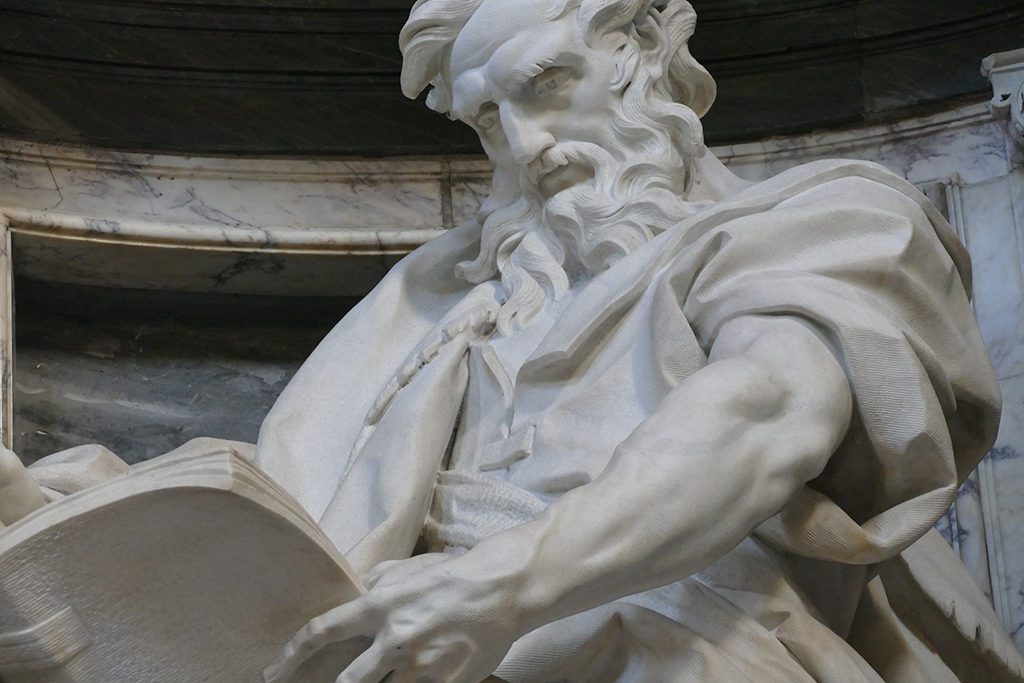
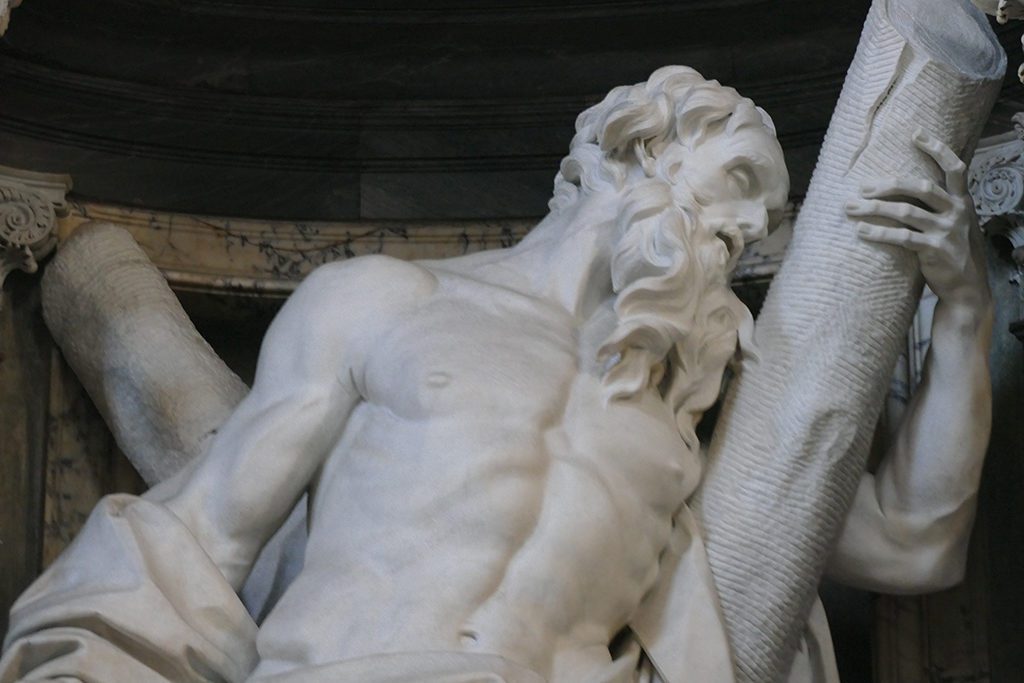
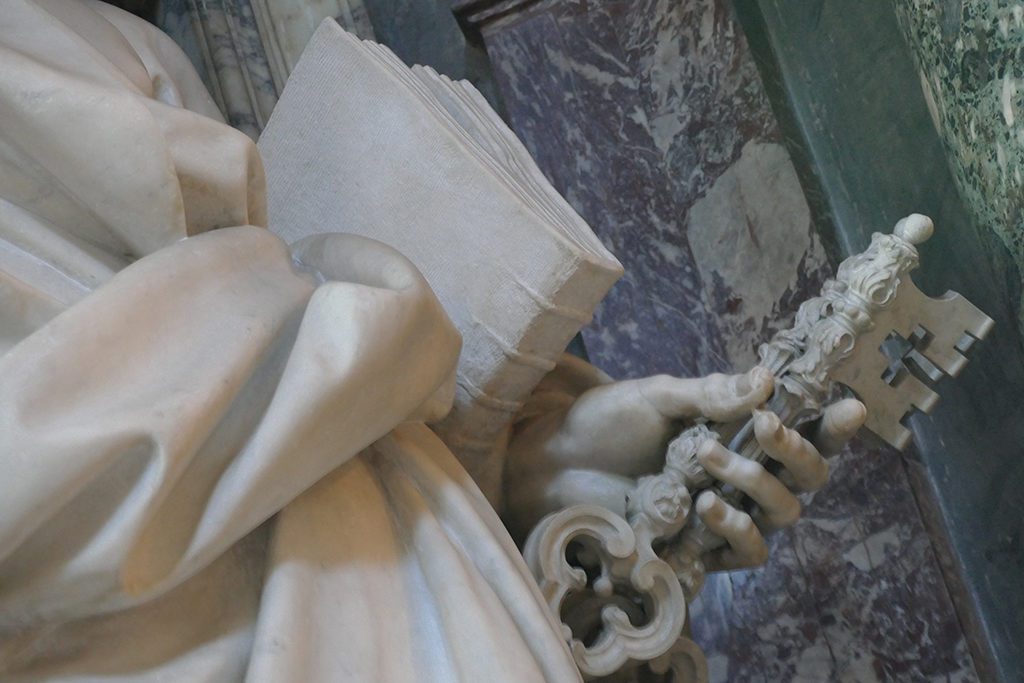
Popes were crowned in the Lateran until the 19th century, and there are numerous papal tombs in the church.
The Baptistery
The octagonal Baptistery of the Lateran is probably the oldest in Christendom. It is freestanding on the square’s western side and is considered the prototype of all baptisteries.
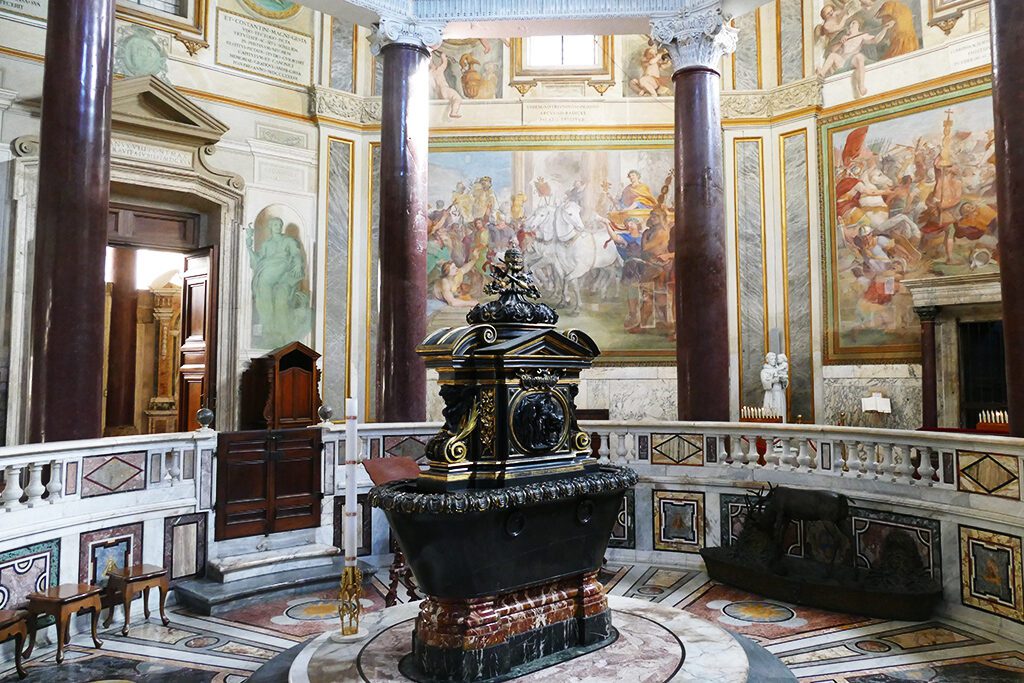
The baptistery stems from 315 and got its octagon shape in the early 5th century. Despite many alterations, it still shows some remains of ancient mosaics and the ancient columns made of Egyptian porphyry.
Scala Sancta
“Do you need any information?” asked the young man at the entrance in a quite snappy tone.
“No?!”
“This is not a museum, this is part of the Holy See!” he kept snapping. “Okay?”
“Do you want to go up on your knees or do you want to take the regular stairs?”
“Uhm…beg your pardon?”
“That’s why I asked whether you needed information. To go up, you can either take the stairs to your right. Or you do it on your knees.” He pointed to the stairs behind me where four ladies were crawling up the stairs on their hands and knees, mumbling the Lord’s prayer on every step.
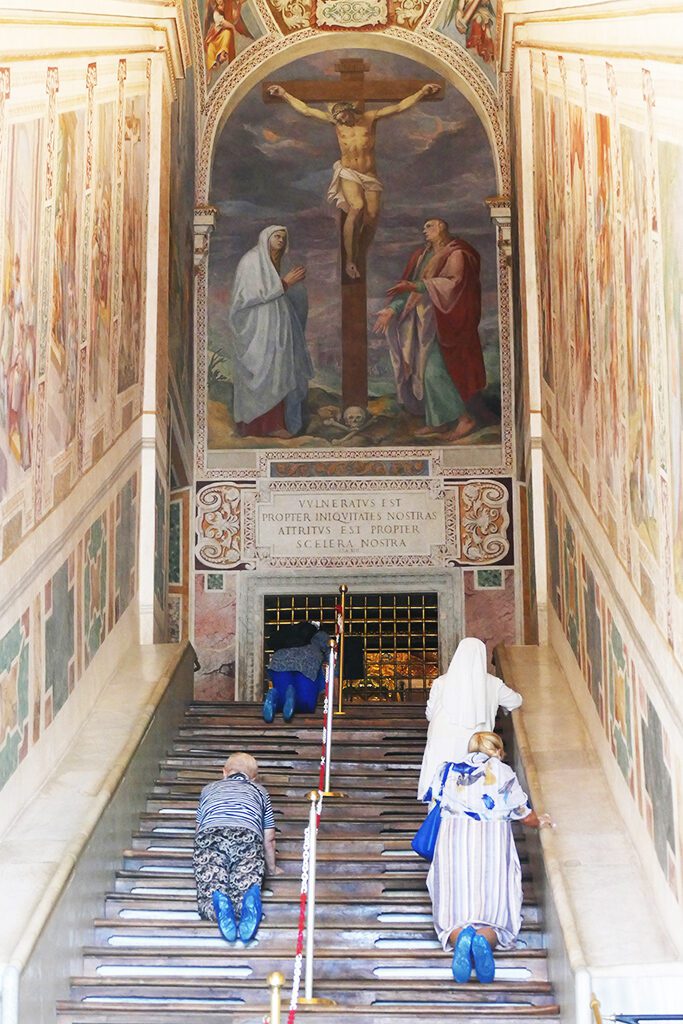
At the second, eleventh, and twenty-eighth steps, a viewing peephole was left open. Through this window, you can see the alleged traces of Christ’s blood.
I’m so not the type that crawls on her knees. I’m very much into equal footing. No pun intended, but also, in this case, I will go on foot.
“Okay, then you can take pictures and eventually go up the other stairs,” shrugged the young man.
To me, the sight of people crawling on their knees deems so demeaning’n’disturbing. Hence, it’s very irritating that on the one hand I got lectured about this Sacred place – and on the other hand, I can merrily snap away….weird.
As I get to the Chapel Sancta Sanctorum upstairs, I spot a large sign that from here, taking pictures is prohibited. So the faithful are granted at least a little dignity.
The staircase led originally to the Lateran Palace. During the modification of the Palace, they moved the three-flight marble staircase to its current location. Architect Domenico Fontana extended the stairs by two more lateral flights.
Above Piazza Venezia
On my first visits to Rome, the Piazza Venezia scared the…you know what out of me. There were streams of cars and motorbikes moving quickly in circles and there seemed to be no chance to cross the square alive. We held each other by the hands and hesitantly searched for a way of crossing. Doing as the Romans do gets a whole different, life-saving meaning. We were looking for locals to cross this square of death in their slipstream.
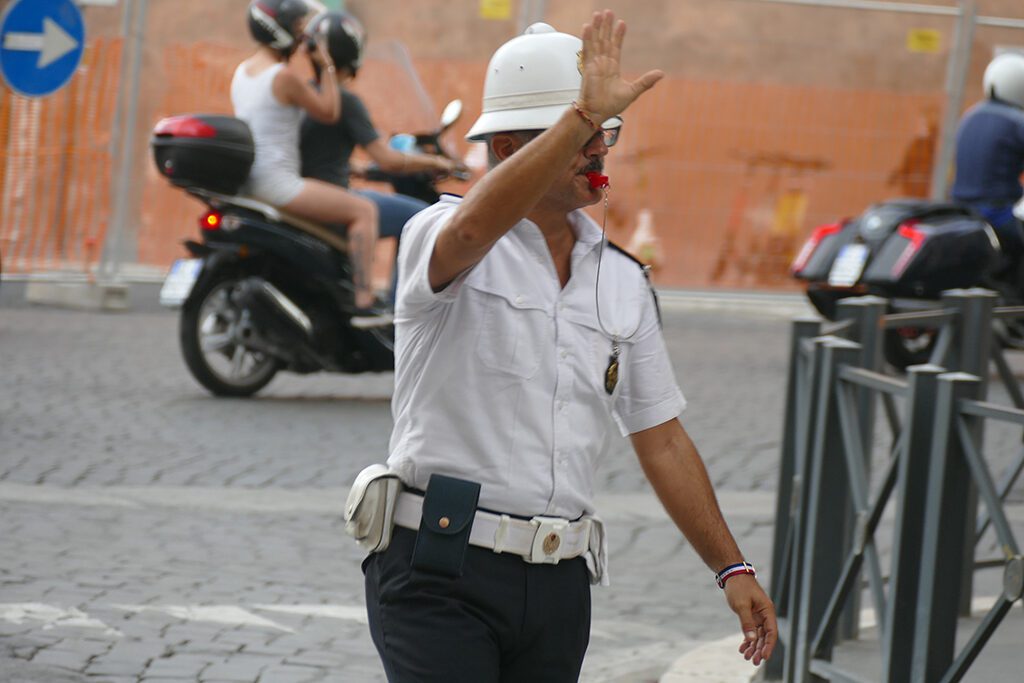
Although already in the time of the Roman Republic, the square was an important traffic junction, it got its current shape when the Monumento Vittorio Emmanuele II was built on its south side.
Monumento Vittorio Emmanuele II
The Monumento Nazionale a Vittorio Emanuele II, the so-called Altar of the Fatherland, completed in 1927, is dedicated to the first king of the newly founded Kingdom of Italy. It is one of the state symbols of the Italian Republic.
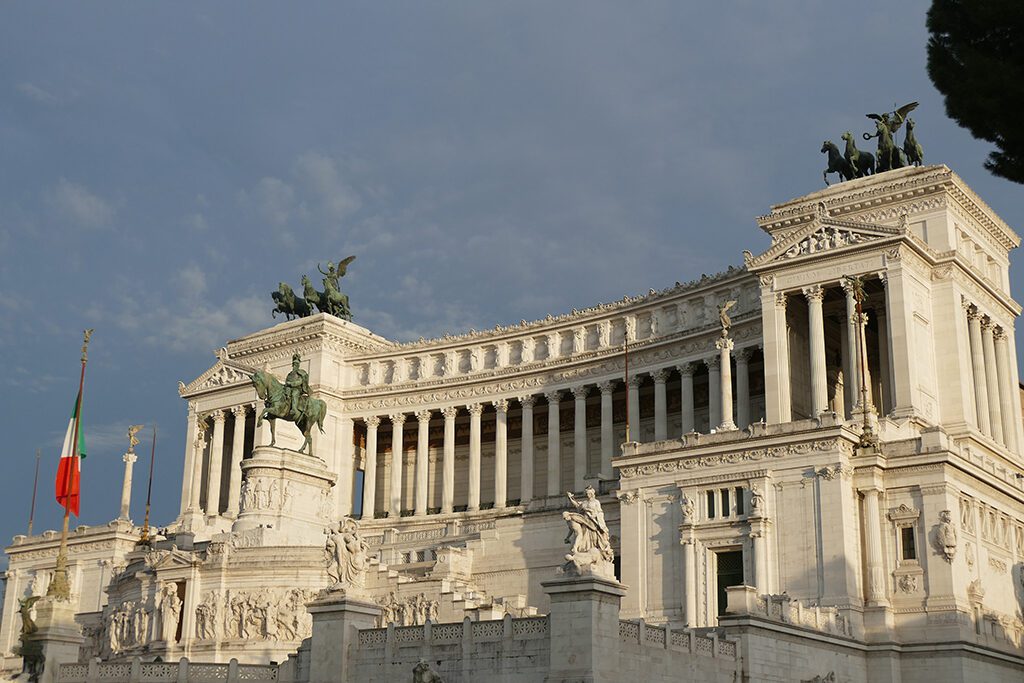
Giuseppe Sacconi began to build it in 1885. In 1911, on the occasion of the 50th anniversary of Italy’s unification, it was inaugurated while still unfinished. It was not completed until 1927. The monument indicates the taste of the neoclassical style. Typical are the massive marble stairs, a twelve-meter-high bronze equestrian statue of the King, and a monumental row of columns on the upper level.
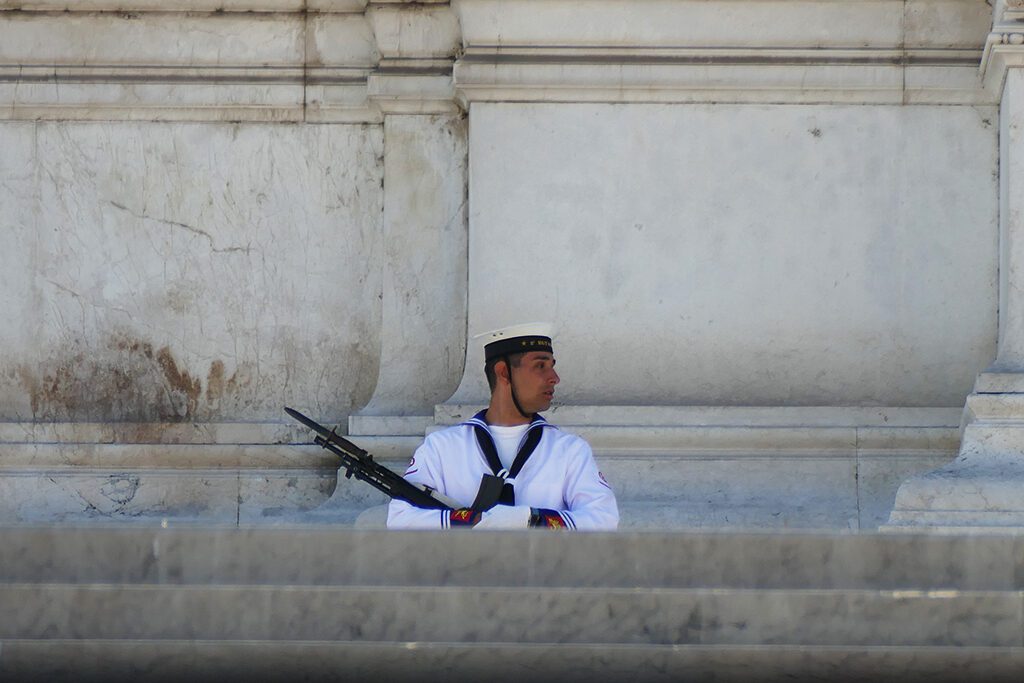
There is a tomb of the unknown soldier and the “Altar of the Fatherland” (Italian Altare della Patria) on the Vittoriano. The eternal flame is guarded day and night by two soldiers. From there, the view extends over the Roman Forum, the imperial forums in the southeast, and far over the city of Rome.
An eternal fire burns in the middle of the stairs in honor of the Unknown Soldier. Two soldiers guard it 24/7.
On top of the monument are two quadrigas, one symbolizing freedom and the other unity.
Museo Centrale del Risorgimento
In the eastern part of the building is the Museo Centrale del Risorgimento. In the middle part, you can visit a flag museum for free.
The ascent to the first terrace is free, you only have to pay for the elevator to the viewing terrace on the rooftop.
Mind you, the drive is definitely worth it since, from there, you have a spectacular 360-degree view over Rome.
Musei Capitolini
Welcome to my favorite Roman museum! Just like the Musei Vaticani, the plural is not a typo, but well-deserved. Various marvelous art collections are presented in spacious galleries. Those are in three buildings standing around the Piazza del Campidoglio just behind the Monumento Nazionale a Vittorio Emanuele II.
The Capitoline Museums date back to 1471 when the city of Rome received a collection of sculptures of ancient Greek and Roman gods from Pope Sixtus IV. Also, when Pius V wanted to clean the Vatican palaces of pagan statues, he transferred them to the Conservator’s Palace, one of the Capitoline Museum’s galleries.
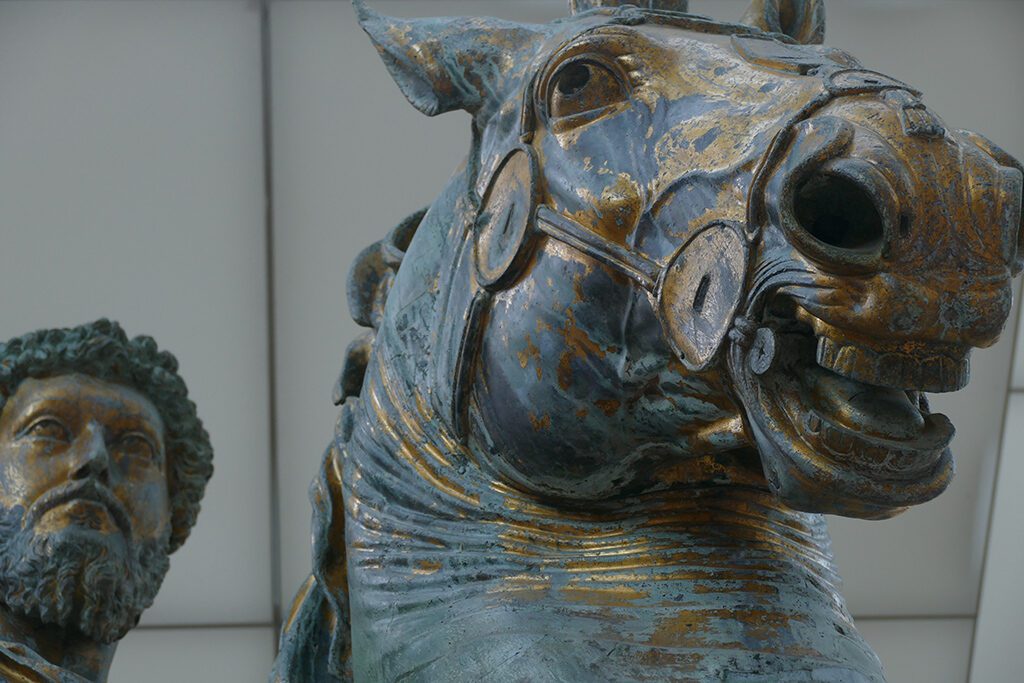
The one standing on the Capitol Square is a replica.
Only after the acquisition of Cardinal Albani’s art collection, the exhibition open to the public in 1734.
During the 20th century, further galleries were incorporated into the museums. Nevertheless, in 1997, part of the collection was moved to the Centrale Montemartini due to construction work, but it remained a permanent branch.
Around the Piazza del Campidoglio are these three buildings:
Palazzo dei Conservatori
On the ground floor of this building are the ticket offices and the main entrance.
The frescoes, stuccos, carved ceilings, and doors have as their main theme the ancient history of Rome. The oldest frescoes date back to the early 16th century. They are on the building’s main floor, called Apartment.
The other rooms were renewed according to Michelangelo’s designs.
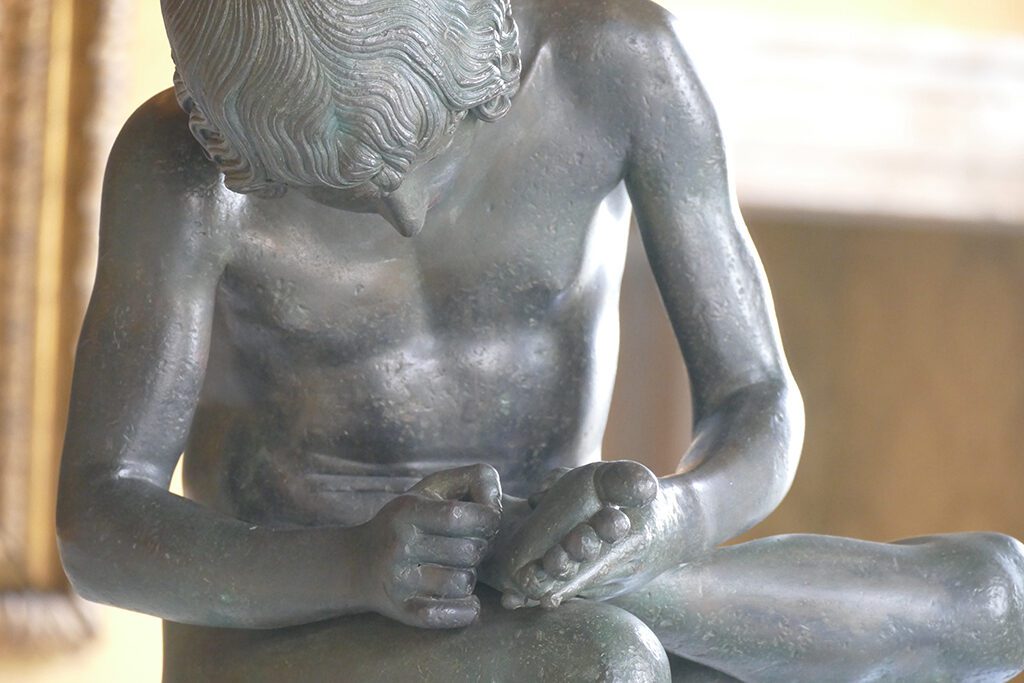
Also, in these galleries, the most iconic works, like the Lupa Capitolina nursing Romulus and Remus, the Artemis of Ephesus, and the Capitoline Thorn Extractor, are on display, next to uncountable other lesser-known treasures.
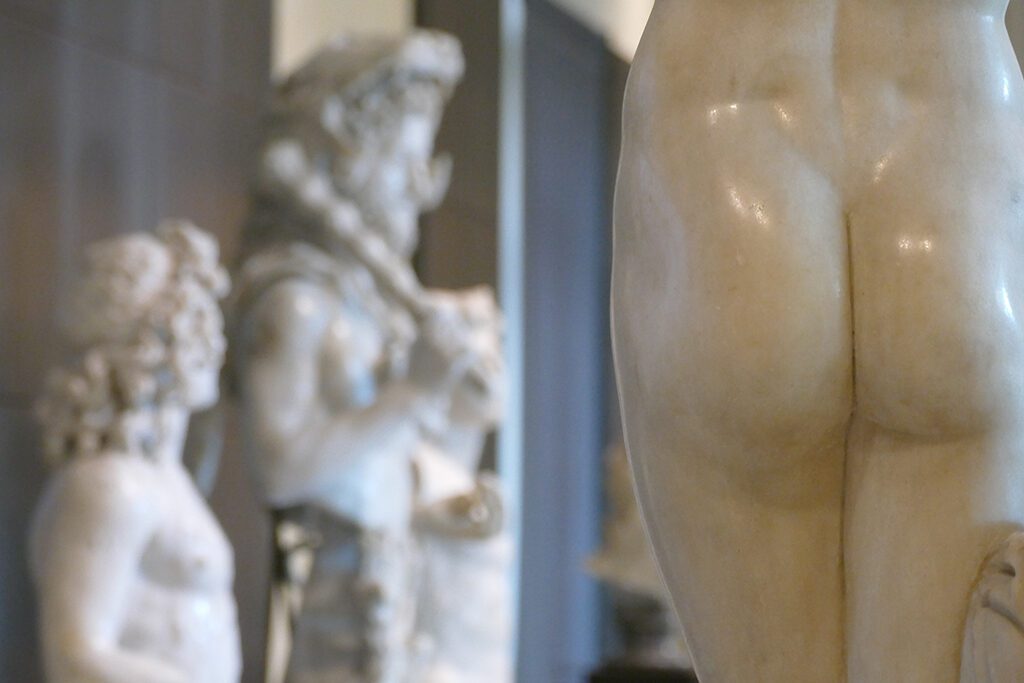
Particularly the former courtyard where you can see the original equestrian statue of Marc Aurelius, as well as the hall with the sculptures from the Horti Lamiani, are just mind-blowing. This amazing sculpture collection once adorned the Lamian Gardens atop the Esquiline Hill.
In a wing added in the mid-20th century is a Pinacotheca. Here, you will admire famous works by Caravaggio, Titian, Rubens, and many other famous artists from Italy and other European countries.
Pieces of larger-than-life sculptures are awaiting you at the Palazzo’s cortile.
Galleria Lapidaria and the Tabularium
The underground Lapidary Gallery has been connecting the Capitoline palaces, Palazzo dei Conservatori, and the Palazzo Nuovo 8 meters below the ground floor level since the end of the 1930s. It also preserves the remains of Roman dwellings from the II century AD.
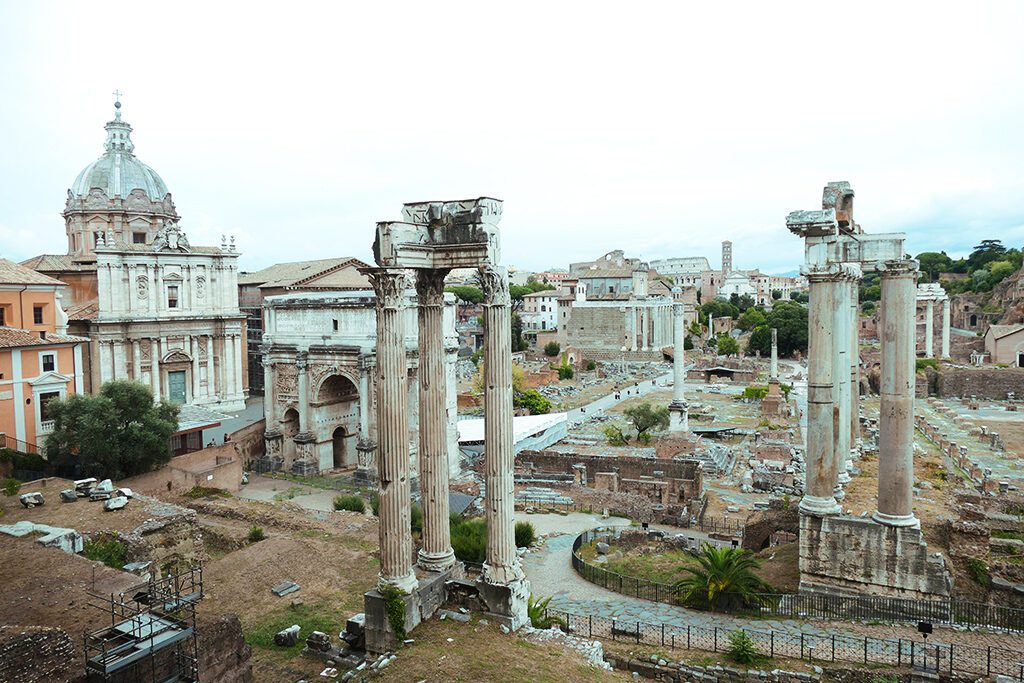
Passing through the Lapidary Gallery, you enter the Tabularium.
There, a gallery is opening onto the Roman Forum – to me, one of the Musei’s most amazing parts.
Palazzo Nuovo
Based on Michelangelo’s project, the Palazzo Nuovo was built to bring the design of the Capitoline Square to perfection.
Following ornamental criteria, rows of sculptures from different periods are lining both sides of the galleries. Mind you, many of the statues are Roman copies of Greek masterpieces.
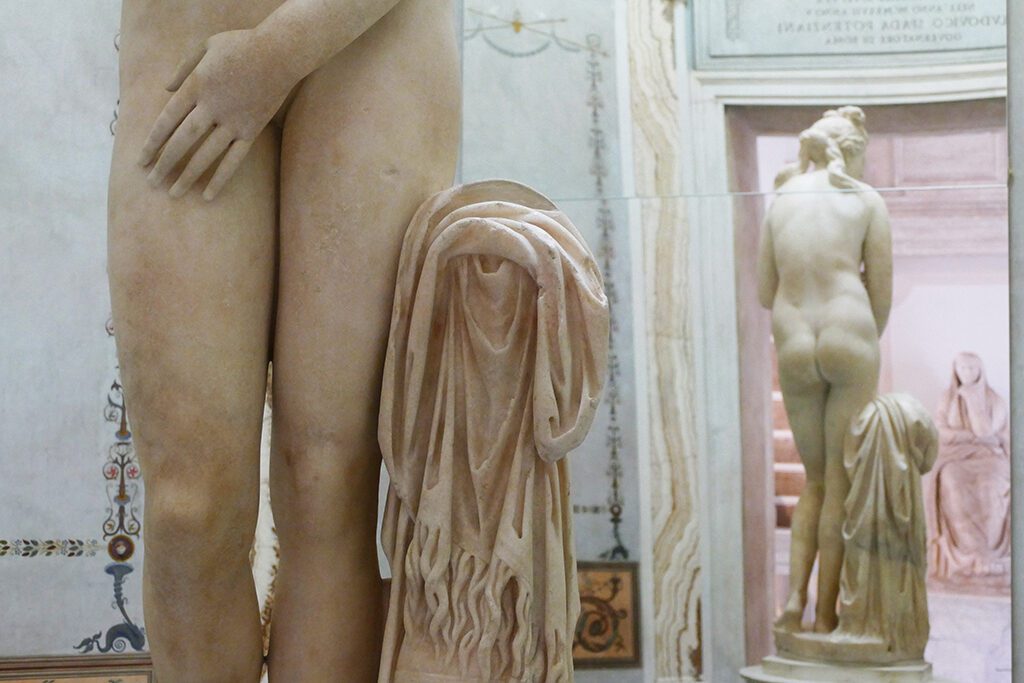
The precious ancient sculptures mostly stemmed from private collections of Roman clerics and noble families.
Sculptures of gods and personages from ancient mythology grant a unique overview of figurative art from antiquity.
Two heads are better than one
My favorite exhibits are the Hall of the Emperors and the Hall of the Philosophers. Both contain shelves of sculpted portraits of Emperors and Empresses and other important personages of the Imperial Age, respectively Greek and Roman philosophers.
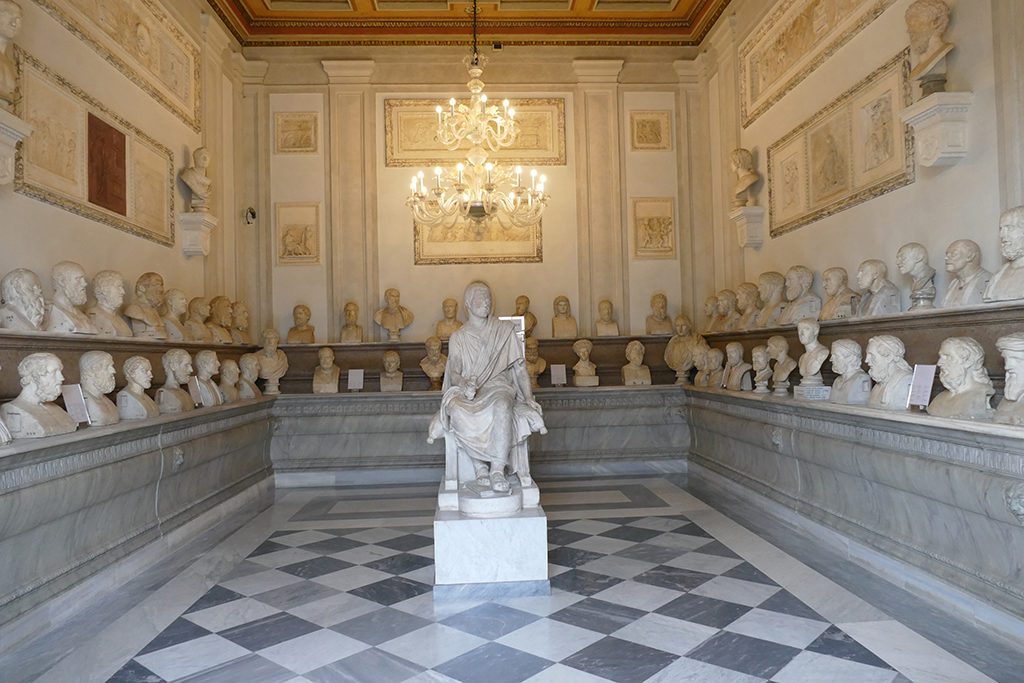
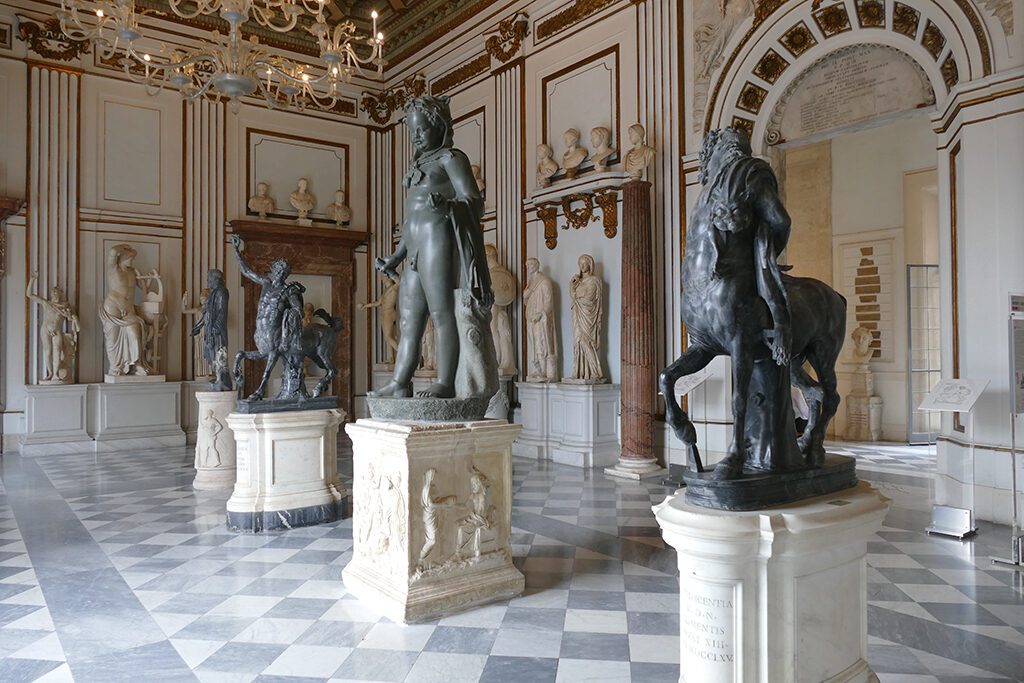
In the center, the young and the old centaur from Hadrian’s Villa flank Baby Hercules.
More important sculptures and statues of emperors are arranged along the walls.
Notwithstanding many changes that had taken place over the centuries, this part of the gallery has more or less maintained its original 18th-century appearance.
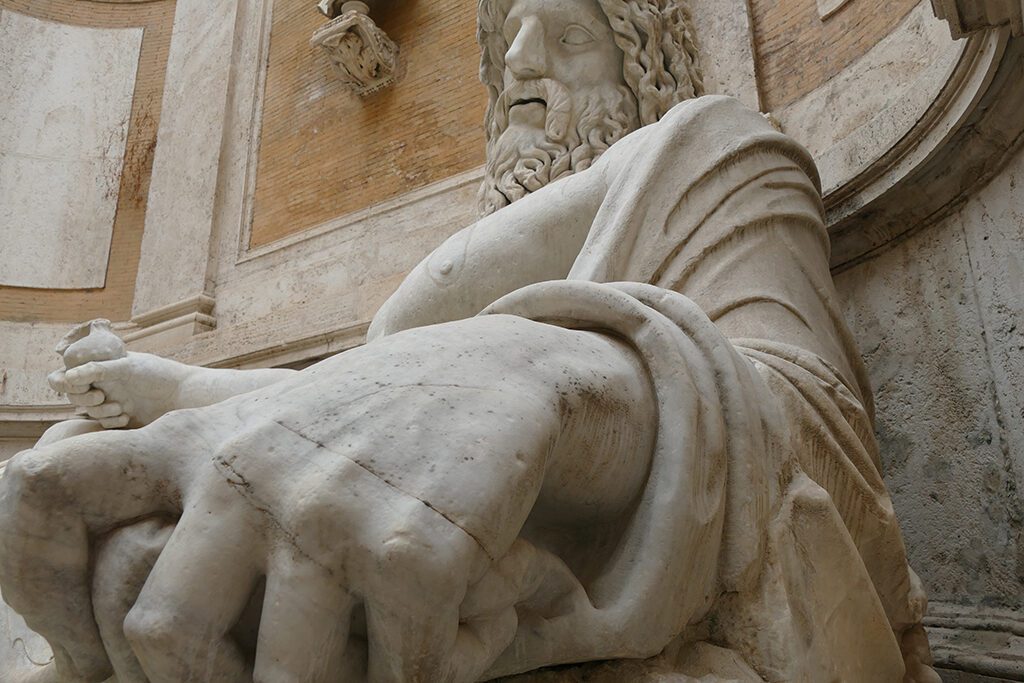
At the Palazzo Nuovo’s cortile is a large niche with a massive fountain from the 1st century AD. Its central piece is Marforio, the powerful river god.
Doria Pamphili Gallery
I’ve already introduced the wealthy and powerful Pamphilj family above.
While the majestic Pamphilj Palace stands at the Piazza Navona, the Doria-Pamphilj Villa is on the Via del Corso, just a stone’s throw from the Piazza Venezia.
The Family
The story of the Doria-Pamphilj is the result of various alliances between noble families from all parts of Italy.
The property originally belonged to the Della Rovere family. Since 1647, it has belonged to the Pamphilj family by marriage.
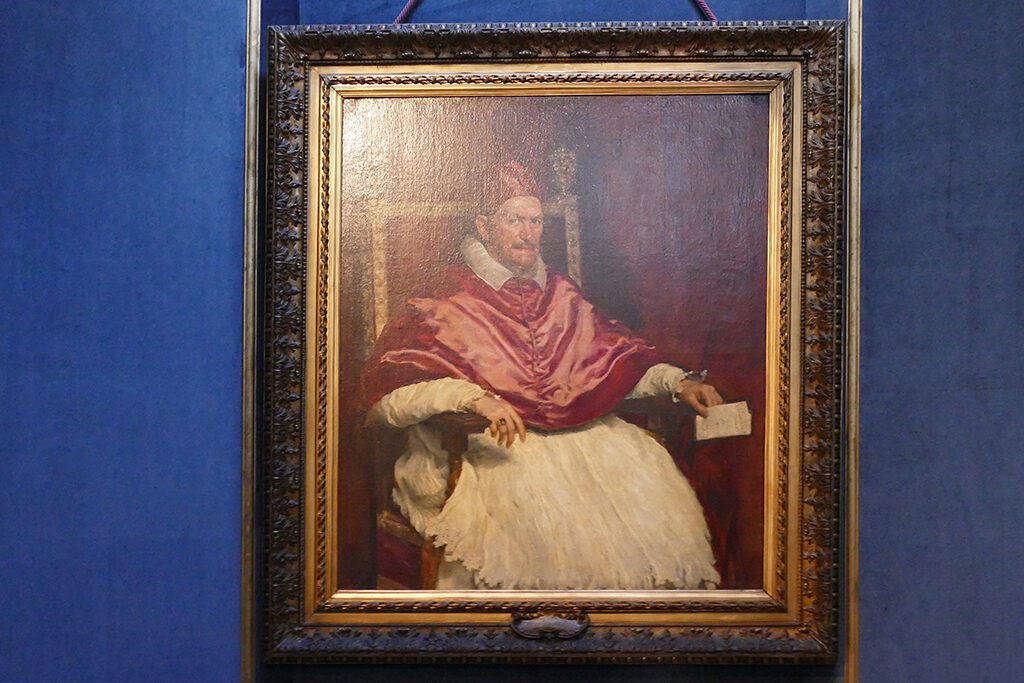
In 1671, Pamphilj’s daughter Anna married the Genoese aristocrat Giovanni Andrea III Doria-Landi. Their descendants inherited the palace, while the Roman branch of the Pamphilj family died out in 1760. In 2000, with Prince Filippo Doria-Pamphilj-Landi’s only daughter, Donna Orietta, the family had died out.
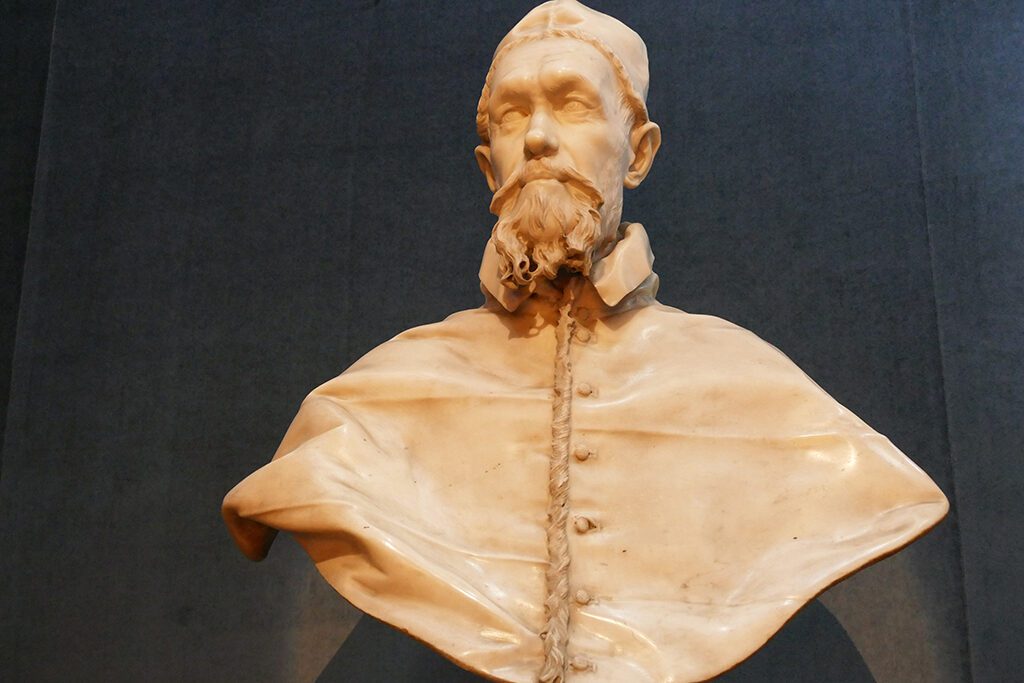
Today’s Galleria Doria Pamphilj houses a valuable collection of paintings and art objects and is open to the public.
The Gallery
The Galleria Doria Pamphilj contains baroque halls with furniture and interior decorations. But also, there is one of Rome’s most important private art collections on display.
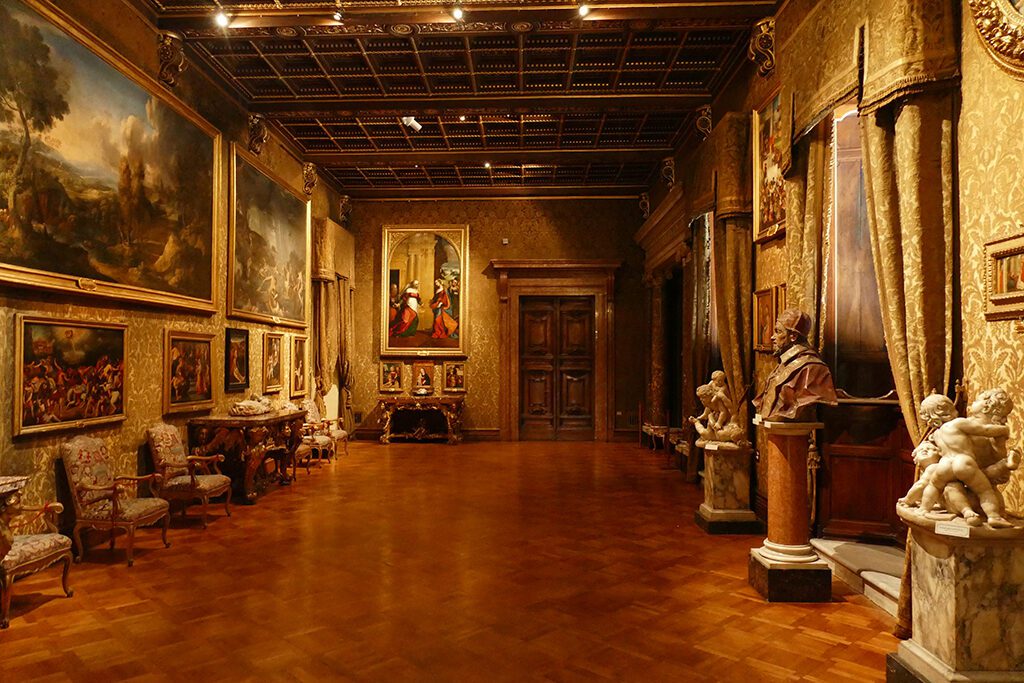
You’ll get to see numerous famous paintings by old masters like Raffael, Tintoretto, Caravaggio, Carracci, and Guercino.
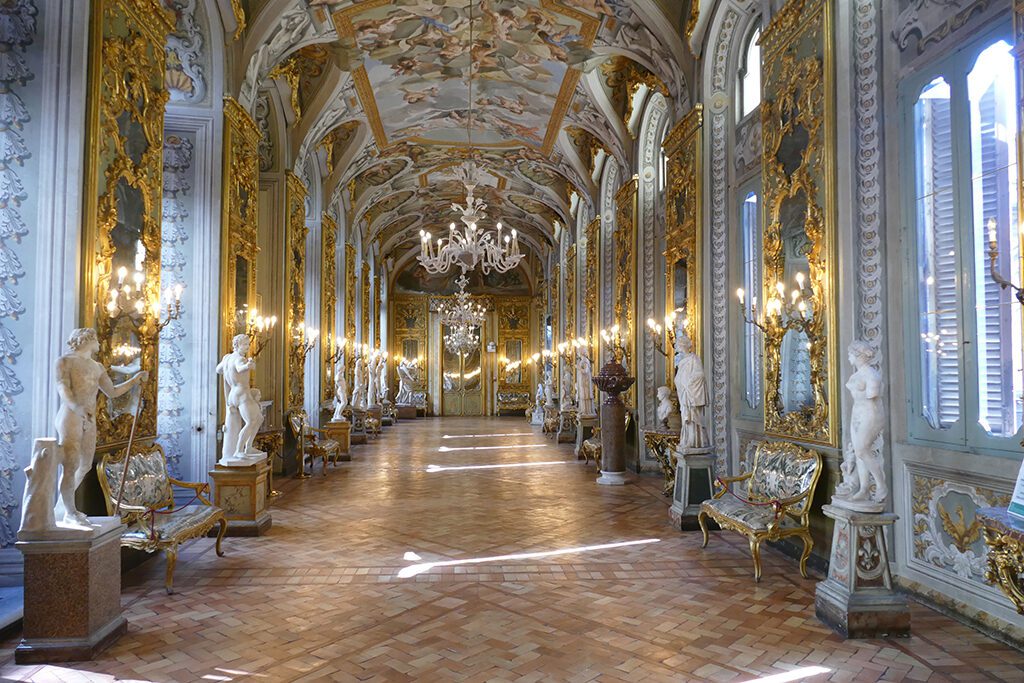
In 1666, Cardinal Benedetto Pamphilj initiated a vast collection of precious paintings.
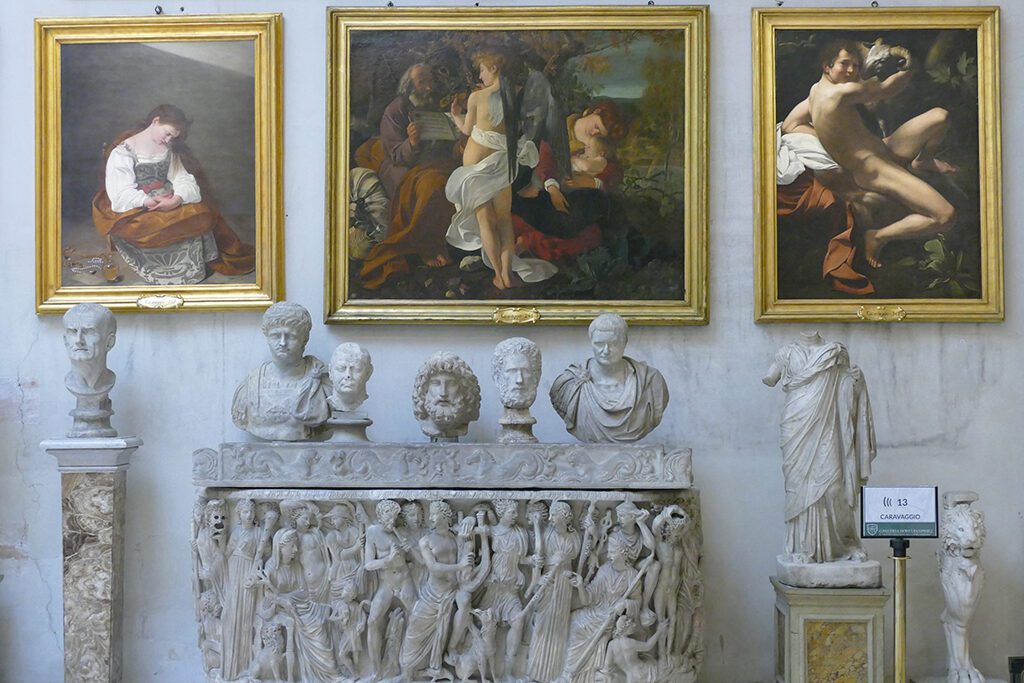
Make sure to pick up one of the audio guides to learn many fascinating details about the families, the building, and, of course, the works on display.
Practical Information
All Roads Lead to Rome: How to Get There
By Plane
Rome has two airports: The Leonardo da Vinci International Airport in Fiumicino and the G.B. Pastine International Airport in Ciampino. The latter is basically a hub for Europe’s low-cost airlines.
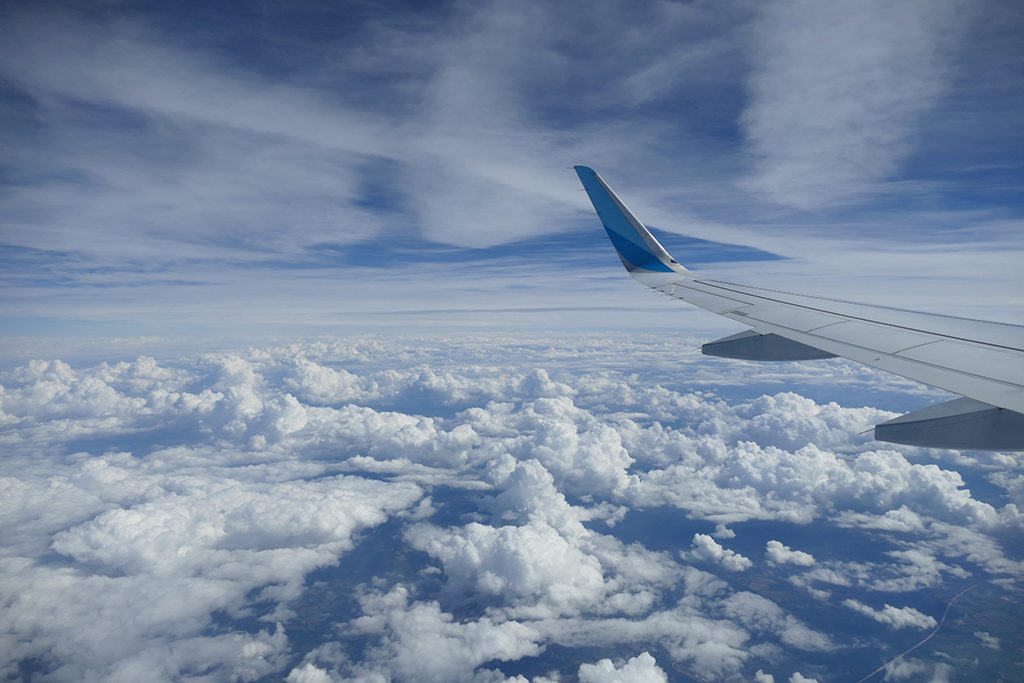
You have 3 options for transportation from Fiumicino Airport to the city center. The most comfortable option is taking a Fiumicino airport taxi. The flat rate to the center is currently 55 €uros. Depending on the traffic, the trip takes around 40 minutes. The cheapest transfer is by bus. The tickets are only 6.50 €uros. The bus should need less than an hour. The best way, however, is by train. There are two trains to choose from. The direct ride costs 14 €uros. With changing trains at Trastevere, you pay only 8 €uros.
By Long-Distance Bus
Travelling by long-distance bus is getting really popular in Europe. The cheap prices make up for the little loss of time compared to trains. And since various companies are competing, the service is usually very reliable.
One of the most popular bus companies in Europe is flixbus. They are going to Rome from many European cities, like, for instance Ljubljana in 10 hours, Munich in about 14 hours, or Vienna in approximately 18 hours. Obviously, there are also many connections within Italy like Milan and Venice.
There are two main bus terminals in Rome. One is Anagnina, which is the southeastern terminus of subway line A. The other is Roma Tiburtina, Rome’s second-largest railway station. It is located in the northeastern part of the city.
Also, the trains to the town of Tivoli leave from the Tiburtina station.
By Train
I know that Italian trains do not have a great reputation. I cannot subscribe to that. Having taken tons of trains in Italy, I never had to face major disruptions or problems.
Compared to other European countries, train travel is very cheap – if you book well ahead, even in first-class coaches.
Also, trenitalia, the national train company, has a very clear, well-functioning website. Here, you can make a reservation and, hence, take advantage of great offers.
Like most other Italian cities, Rome has various train stations. The most important one is Roma Termini. Hence, when buying a ticket, always double-check from which station your train is leaving and at which station it will arrive.
The Times They Are A-Changin’
Do you remember those days when you had to validate your ticket before boarding the train? I’ll never forget a trip from Venice when I realized about 90 seconds before departure that I hadn’t validated my ticket. Now I had the choice between racing to the machine on the platform and risking the train leaving without me. Or staying on the train with an invalidated ticket and risking the controller fining me.
What did I do? Well, with my heart pounding like crazy, I ran to the machine, had almost a heart attack when the train made this exhaling sound as if it was about to leave, yelled noooo, stamped the ticket, ran back, hopped on the train – off we went.
Well, good news: Those days are over – at least when you buy your ticket online, which I highly recommend. Not only can you check in, hence, validate your ticket comfortably on your phone. You can even alter your booking before checking in!
That’s such a great service: You go online, choose your connection, and pay. Then you’ll get an email reminding you that your ticket isn’t valid until you check in online. This is a very easy process including two clicks.
However, you shouldn’t do it too early because until you’re checked in, you can change your ticket free of charge. Been there, done that, worked like a charm.
Therefore, I’d recommend checking in only as you get to the train station.
How to Get Around
Since there are landmarks, churches, and museums everywhere in Rome, I spend basically entire days walking. Already around noon, this app on my phone tells me that I have reached my day’s goal. And that’s a scary amount of steps!
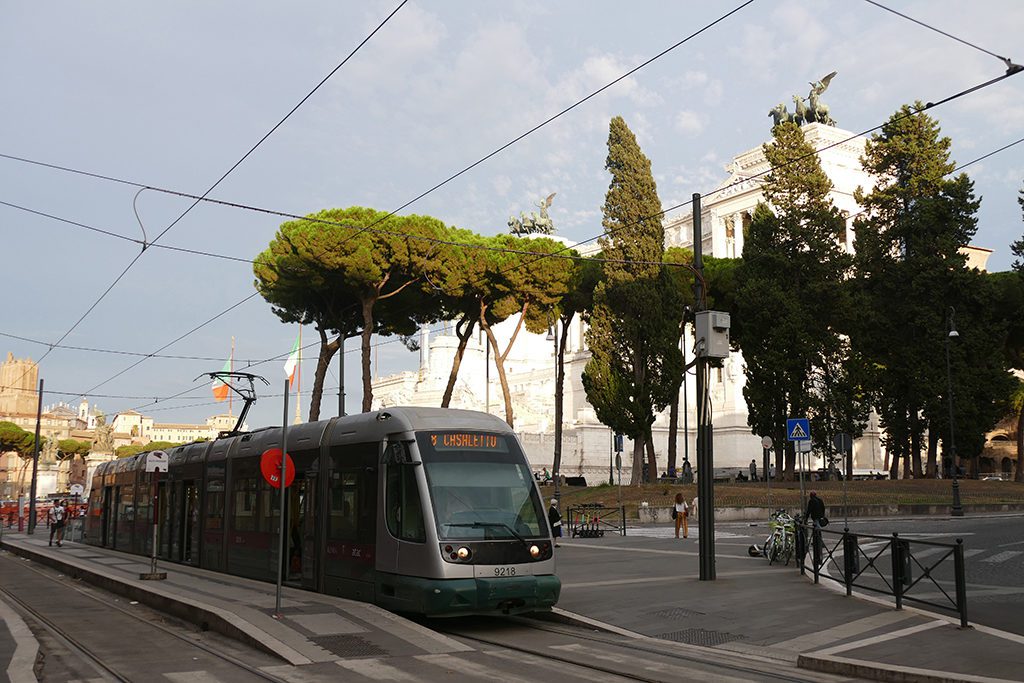
Although it can be very tiresome, I do recommend exploring Rome by walking. It’s the only chance to enjoy also all those unexpected corners and cobblestone alleys. And really, Rome’s center is not that large. Only if you intend to visit places outside the very core, you might want to go by public transport.
Public Transport
There are subways and trams, however, the most comprehensive coverage is by bus.
You’ll get all connections in real time on Google Maps.
An individual ticket costs 1.50 €uros and is valid for 100 minutes from the moment of purchase respectively validation. It allows unlimited transfers between the subway, trams, buses, and urban trains within the municipality of Rome. However, you cannot leave the metro and return through the turnstiles with the same ticket.
You can pay contactlessly as you go.
If you intend to use public transportation more often, the following travel passes might be a better deal. A travel pass granting unlimited use of public transportation for one day costs 7 €uros. For three consecutive days, the pass sets you back 18 €uros and for a week 24 €uros.
My Tip
Ladies, make sure to wear flat, comfortable shoes. Not only will you do a lot of walking. Some of Rome’s alleys are also romantically paved with cobblestones. Hence, there go your heels.
Also, Rome is very hilly. There are slopes’n’stairs practically everywhere. While walking uphill is exhausting, walking downhill can be even more dangerous if your soles are slippery. Good sneakers or even hiking shoes will make your exploration of Rome safe and enjoyable.
Where to Stay
Rome is one of the most touristic cities in Europe. Obviously, there is a wide choice of accommodation. Besides big, modern, and luxurious hotels, there are many smaller, rather cozy, and romantic guest houses and B&Bs.
On this map, you can choose conveniently according to the price and the location*:
What to Eat
Well, it’s Italy, hence you won’t be starving.
Obviously, in Italy’s capital city, you can choose from a broad menu of international cuisines. There is a remarkable number of Chinese restaurants, and even an American fast-food chain has branches in Rome.

However, if you’re going for quick snacks on the go, you’re lucky. Italians kind of invented fast food, after all.
Pizza and Focaccia
There are many small businesses selling pizza al taglio. This means that you choose how big of a piece you want from which kind of pizza. Then you pay for it according to the weight. The pizza’s weight, not yours.
In contrast to other Italian cities, Romans are not afraid of pizza toppings. The classics are zucchini flowers and anchovies, figs and cheese, and chicory, a very hearty green spinach-like vegetable. Also, there is pizza bianca, pizza without toppings that you can stuff with hearty or sweet ingredients as you please.
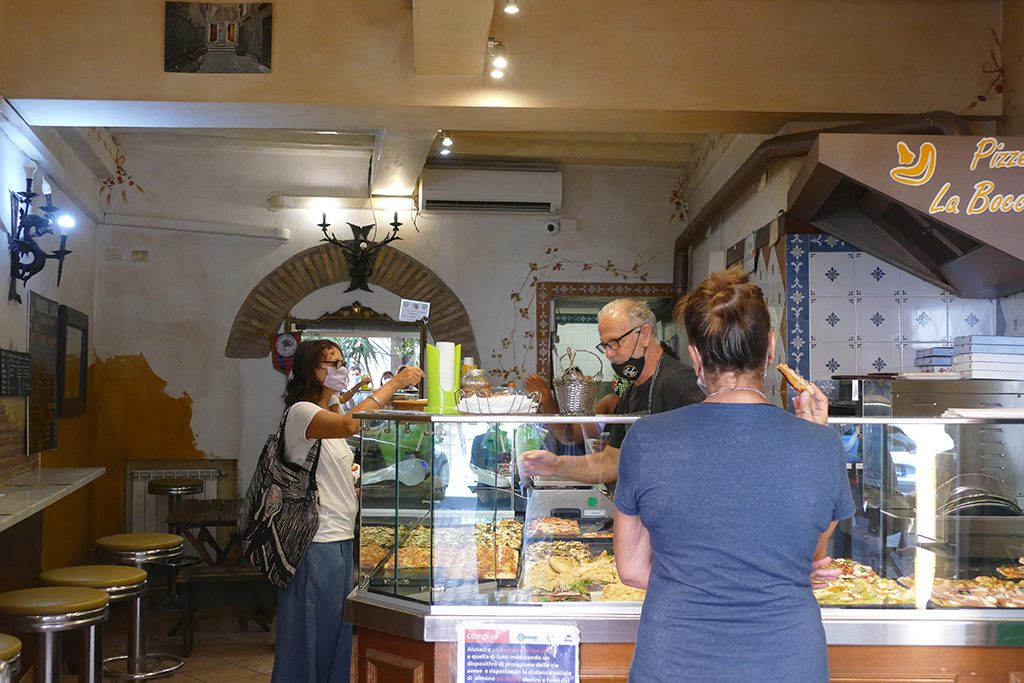
Another bread-ish snack is focaccia. It is made from pizza dough and can be eaten with cheese or prosciutto like a sandwich. If it already comes with rosemary, olives, dried tomatoes, or garlic, you might also enjoy it plain.
My favorite pizza places in Rome are, first of all, Molino Roma around the corner from the Basilica Santa Maria Maggiore on Via Merulana and secondly La Boccaccia at Trastevere across from the Parrocchia Santa Dorthea.
Fritti
Romans don’t like only carbohydrates, they also love fat. They love to cover things in dough and fry them. They do it with all kinds of vegetables. The most sophisticated ones are fried zucchini blossoms.
Another classic is supplì, small fried rice balls. You can get them either plain or with gorgonzola, spicy blue cheese, and other Italian delicacies.
You might know them from other regions in Italy by the name Arancini.
Aperitivo
Aperitivo is a fantastic Italian invention. In the early evening before dinnertime, you go for a drink and feast on some complimentary niblets. What exactly you get depends on the business.
Some places charge something like 5 €uros for an Aperol Spritz or any other long drink. You get some peanuts, crisps, or small chunks of focaccia and pizza with your drink.
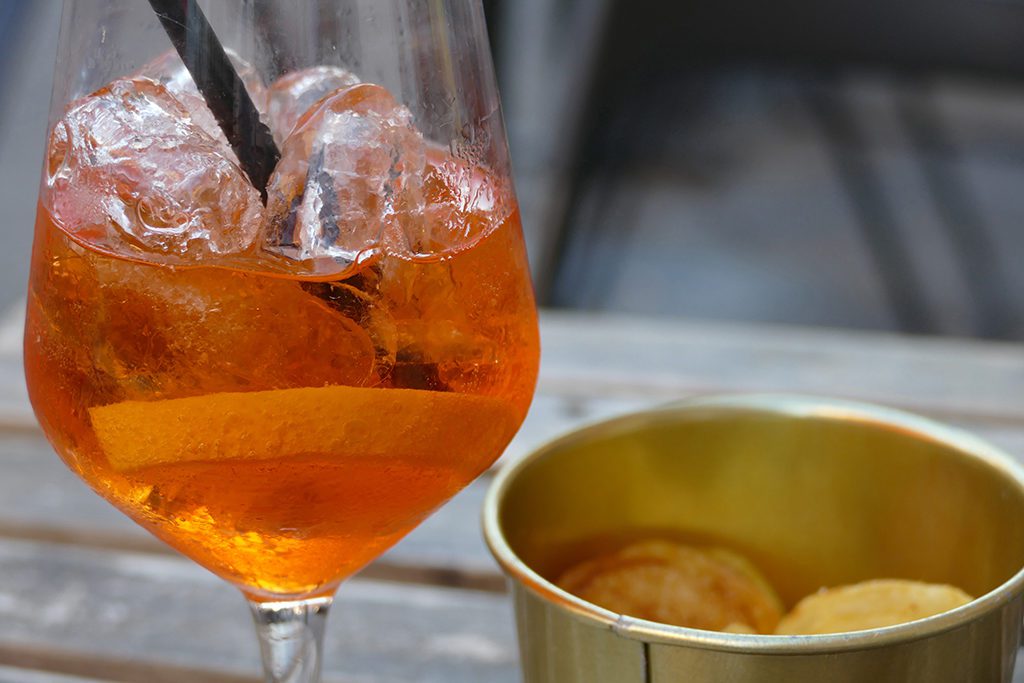
In other places, you pay seven or eight €uros. But here the niblets are actually an entire dinner with small sandwiches, salads, pasta, you name it.
Most of the time, if you choose so, an Aperitivo can replace an entire dinner.
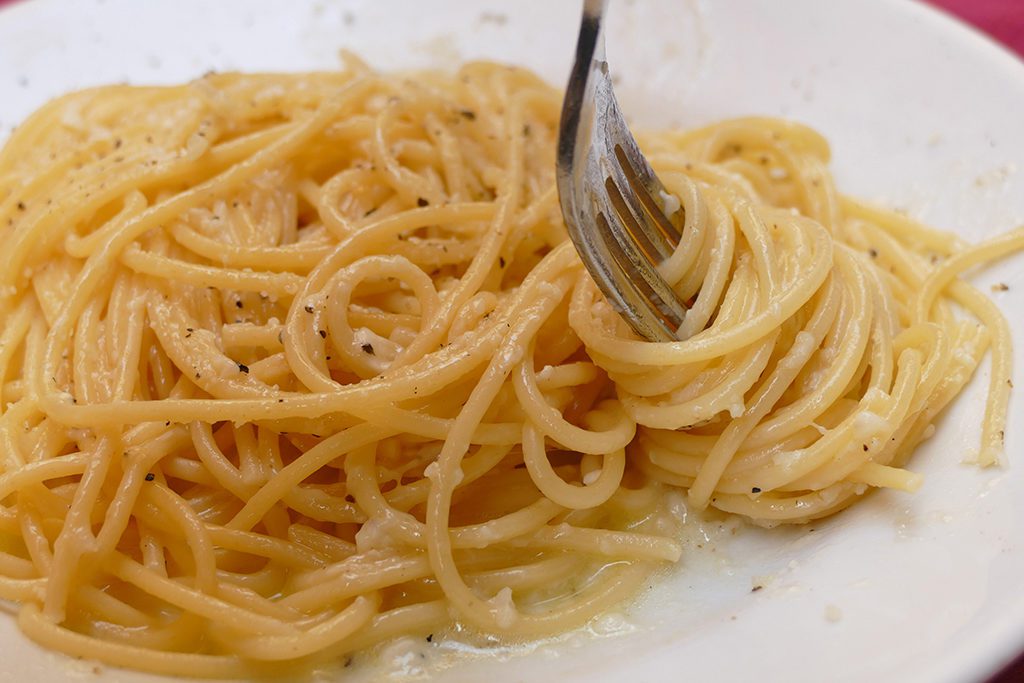
If you’re still hungry, you will find big and small, cheap and expensive restaurants all over the place. In general, there is a big price difference between lunch and dinner. Also, at lunchtime, you can get a menu for a good price. It includes a starter – mostly spaghetti – and the main course. Often, it comes also with water or wine.
Cash, Cards, and Deals
Until now, 20 European countries replaced their former local currency with the €uro starting in 2002. Obviously, Italy is one of them. The exchange rate is 1 US$ = 0.85 EUR as of March 2025. However, you can check today’s conversion rate on this page.
You can pay with credit cards as well as contactless basically everywhere.
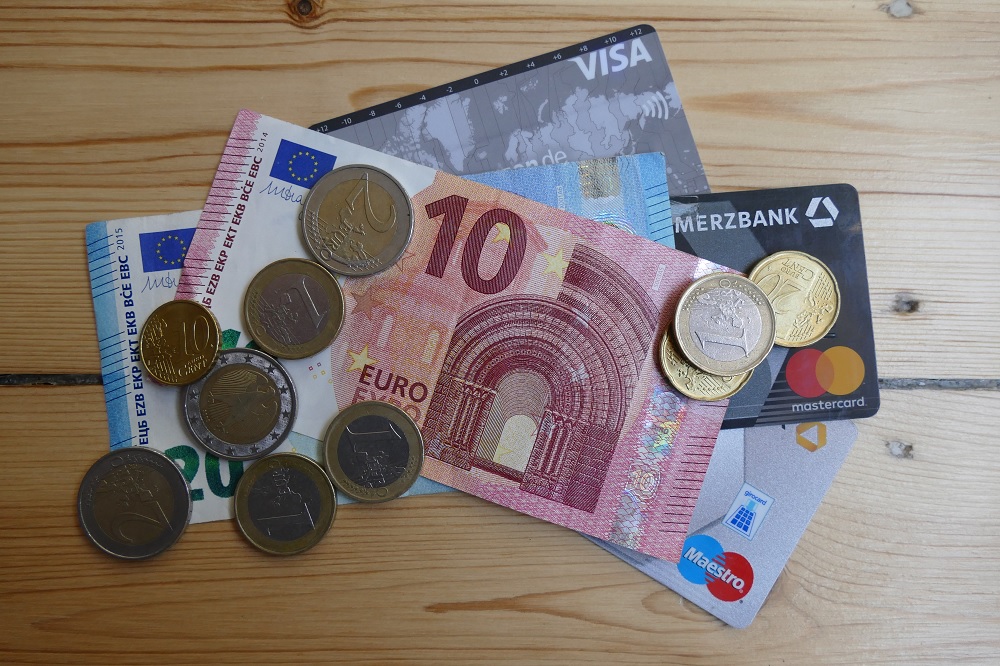
Rome is certainly not a cheap city, but it isn’t neck-cutting, either. Unfortunately, there is no city pass that could save you a significant amount of money. The Roma Pass, issued by the tourist office, is quite expensive considering that you still don’t have free access to the included attractions. For 36.50 €uros for two days, you can visit only one attraction for free. At the other sites, you have to pay a discounted entrance fee. The same goes for the three-day pass, whereby you get two attractions for free but have to pay 58.50 €uros.
Mind you, the archeological sites, as well as most museums in Rome, are very large. Consequently, you simply won’t have time to visit that many in two or three days.
Also, they advertise that public transportation is included. As I stated above, unless you stay on the outskirts, you probably won’t use it that often. And after all, a single ride is only 1.50 €uros, anyway.
To cut a long story short, I really don’t think that these cards are a good deal and strongly recommend you do your math before purchasing them.
Language
In Rome, many people speak decent English. However, older people don’t really like to speak it, even when they are working in the service and tourism sector.
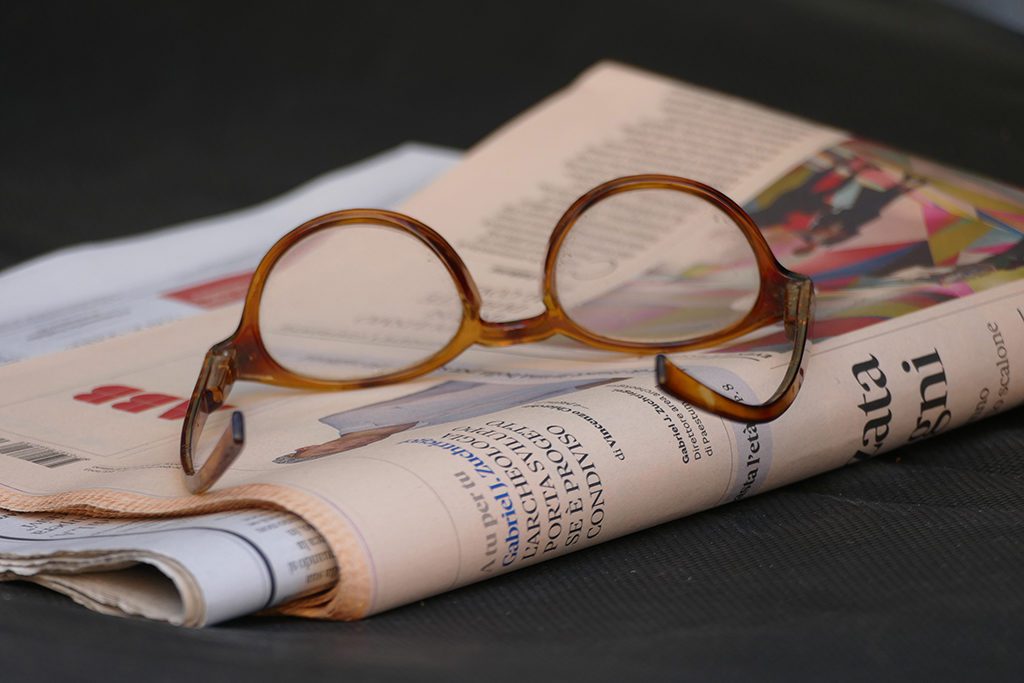
Zushini, Gnotchi, Raditcho – I’m bleeding from my ears since I hear these mispronunciations so often. Seriously, guys, it’s not so hard. So here are some general rules. As in any other Romance language, C is hard before A, O, and U. Consequently, you have to pronounce it K.
If followed by E or I, it’s tch as in witch. Now, if a C followed by E or I should be pronounced K, an H is added. Some examples are Zucchini, Gnocchi, Radicchio – Zukkini, Gnokki, Radikkio. On the other hand, if C followed by A, O, or U should be pronounced tch, they slip a – silent! – I in: Ciocolata, Ciabatta – Tchocolata, Tchabatta – forget about the I in-between.
Anyway, you might want to learn some basic Italian vocabulary on babbel.
Italian Classes in the Eternal City
It might be a great idea to learn some Italian or brush up on what you already know. A great place to do so is the Scuola Leonardo da Vinci. Not only do they have campuses in Milan and Rome, but they are also in Siena and Florence.
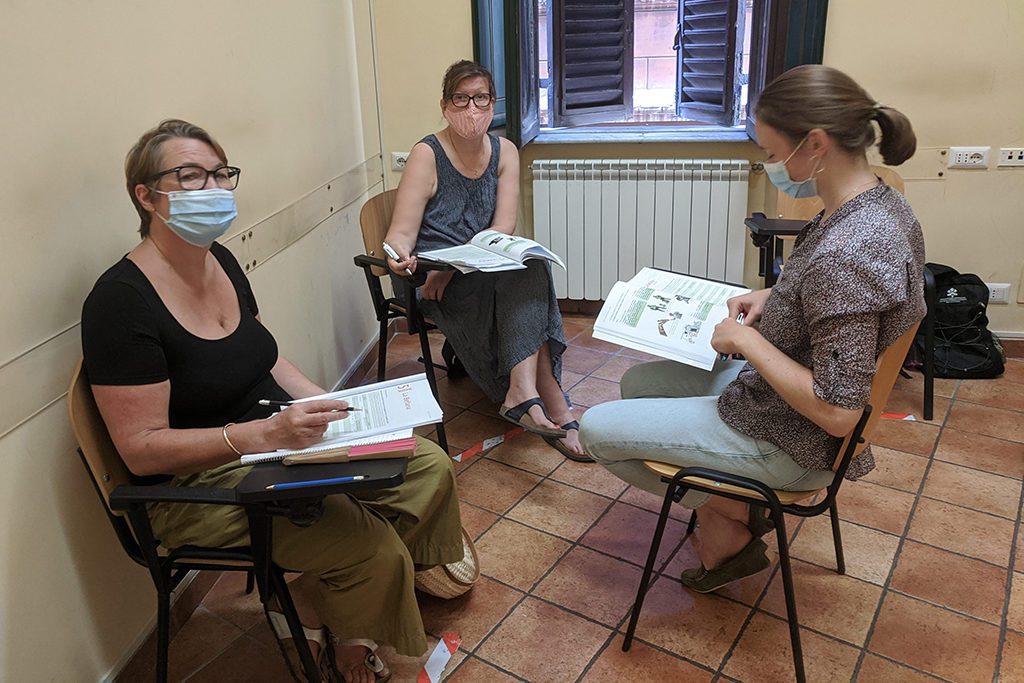
(Photo: Alessandro Savini)
If you’d like to take Italian classes, but you’re insecure about how to organize your stay, don’t worry. The friendly and efficient ladies at the Scuola’s office can arrange literally everything for you.
After a placement test, they advise you which class would be your best choice. They actually help you with every little detail, including providing housing for the duration of your course.
You’ll get more info on my personal experience in a former post.
Connection and Communication
Since June 2017, If you have a European mobile phone contract, no roaming charges apply within the EU. This applies in all 27 countries of the European Union as well as in Iceland, Liechtenstein, and Norway.
The EU roaming regulation applies to all contracts.
In case European roaming is not available, you can connect to the internet without any issue at basically every museum, eatery or café, and, of course, hotel. As a matter of fact, I had the impression of having the fastest Internet ever.
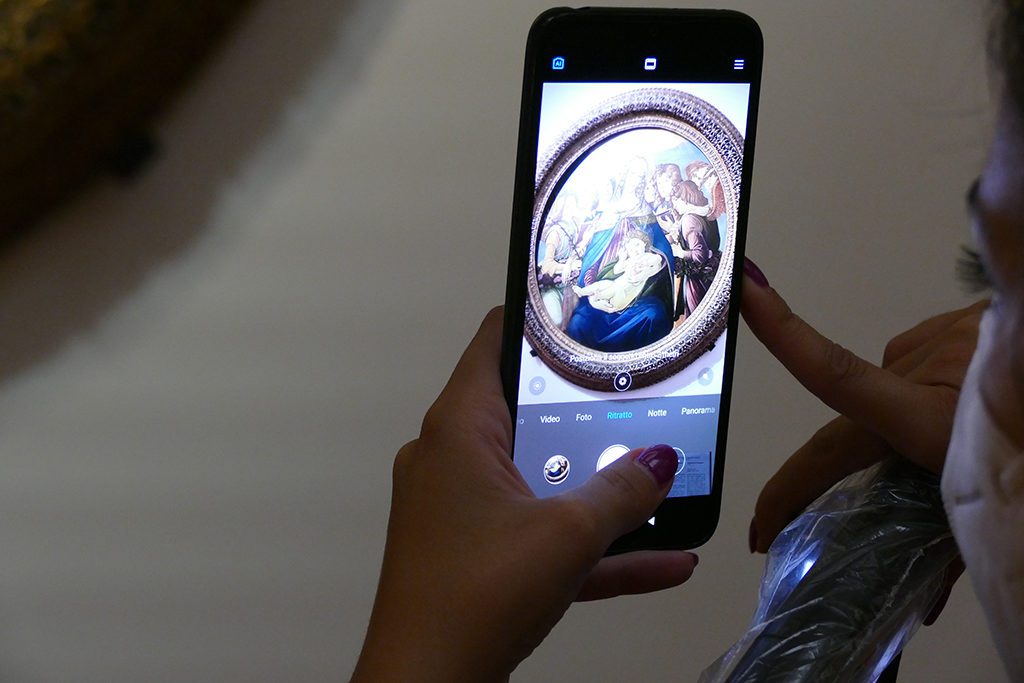
If you insist on being online 24/7, you can, of course, get a SIM card, preferably from Vodafone.
The standard voltage in Europe is 220 V, and the frequency is 50 Hz. In Italy, they use three plug types, namely C, F, and L.
Whereby, since nowadays, all these chargers have integrated adapters, in general, the voltage and frequency don’t really matter.
By the way, you’ll find comprehensive travel info in my post World’s Most Complete Travel Information – an indispensable globetrotter-classic.
Map
This map should help you to find all the wonderful places I’m introducing in this post. This way, you can plan your itinerary accordingly. Clicking on the slider symbol at the top left or the full-screen icon at the top right will display the whole map, including the legend.
Pinnable Pictures
If you choose to pin this post for later, please use one of these pictures:
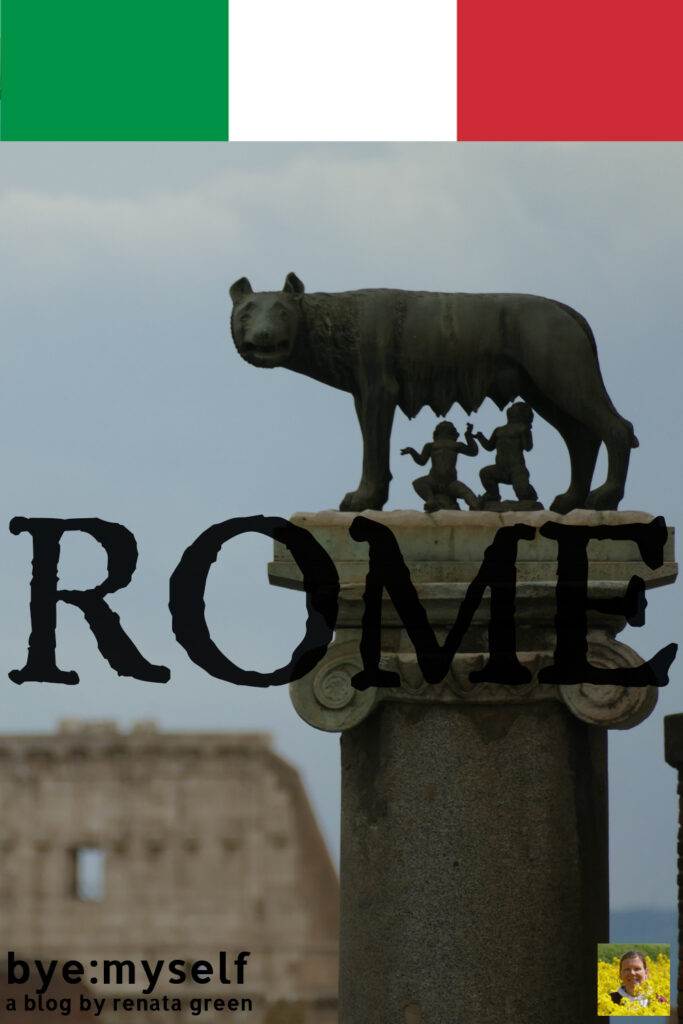
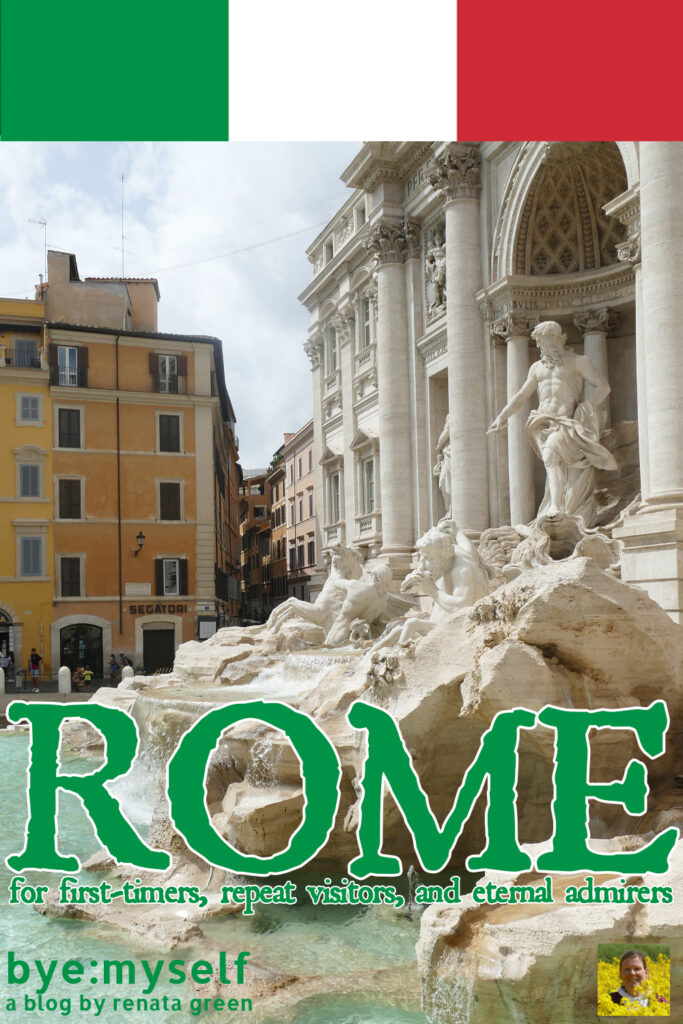
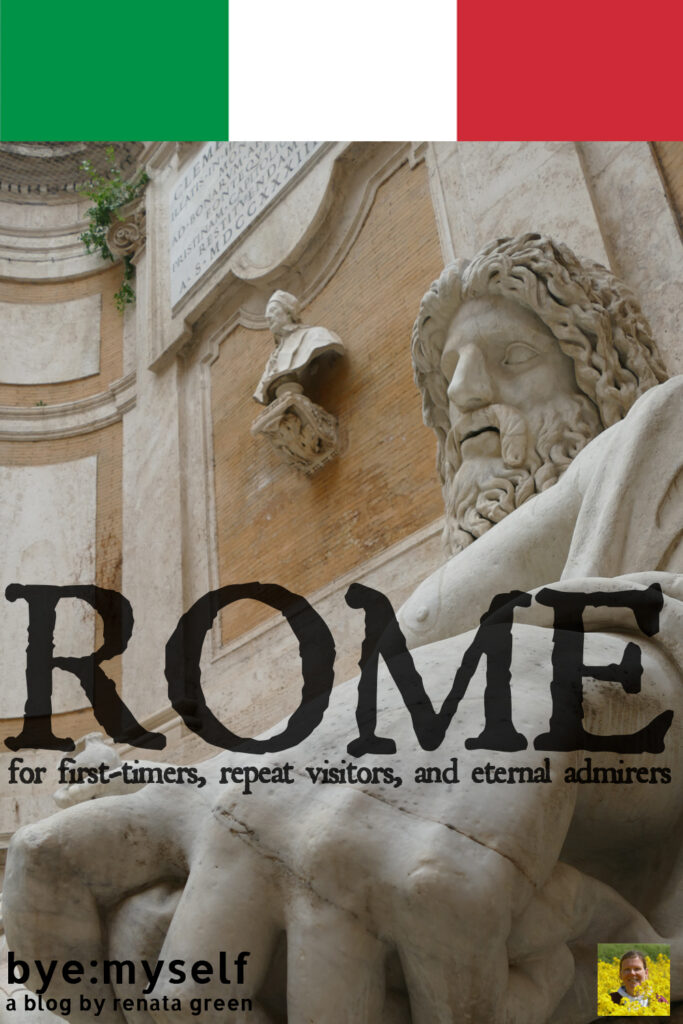
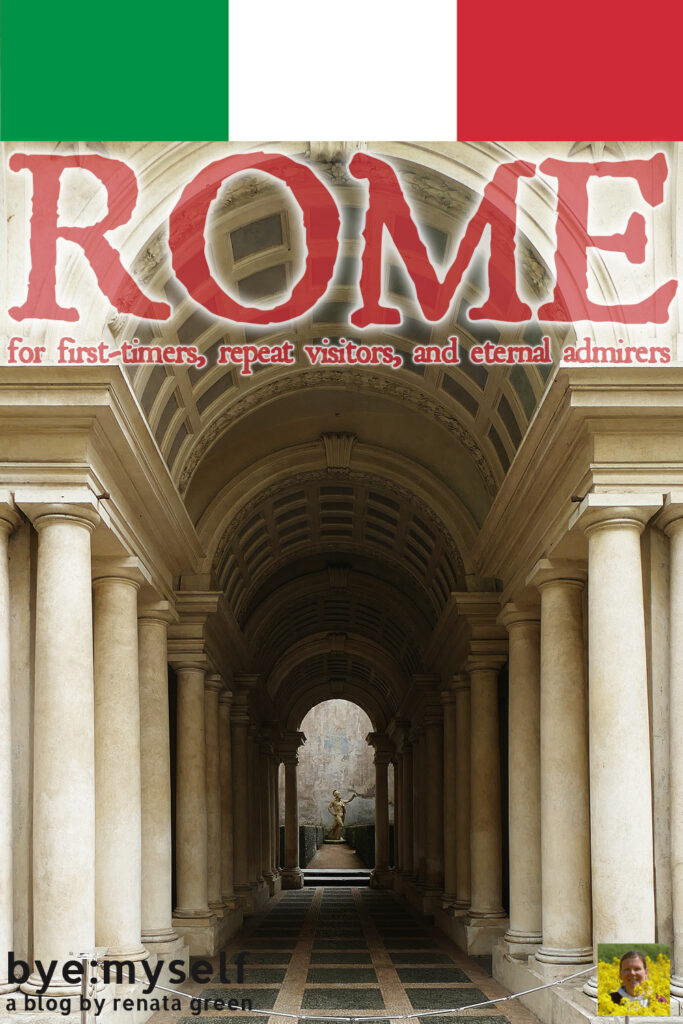
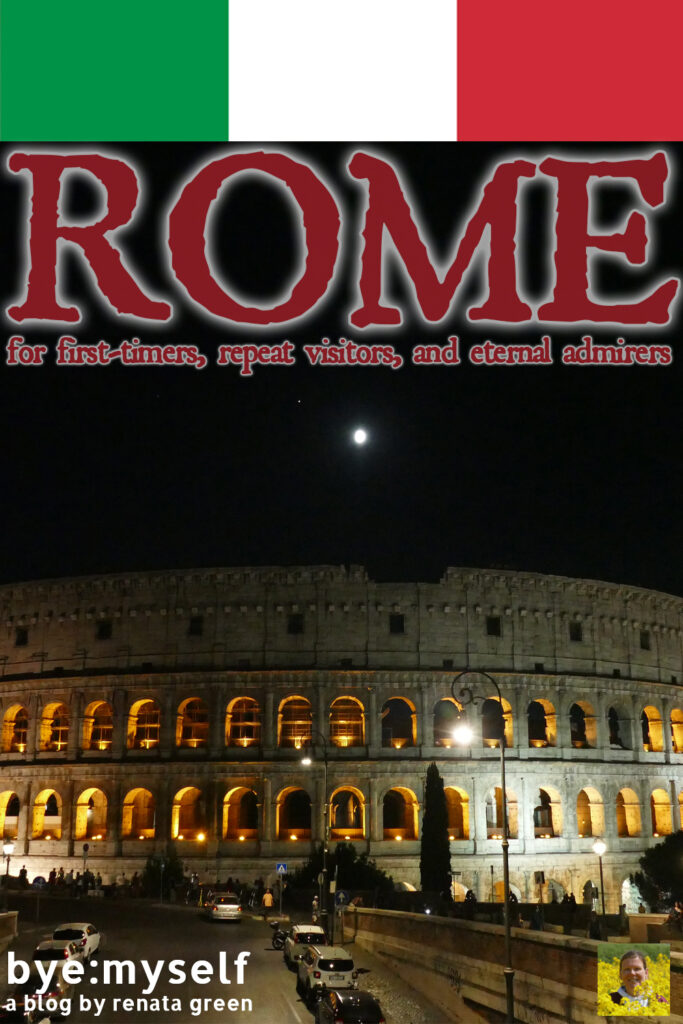
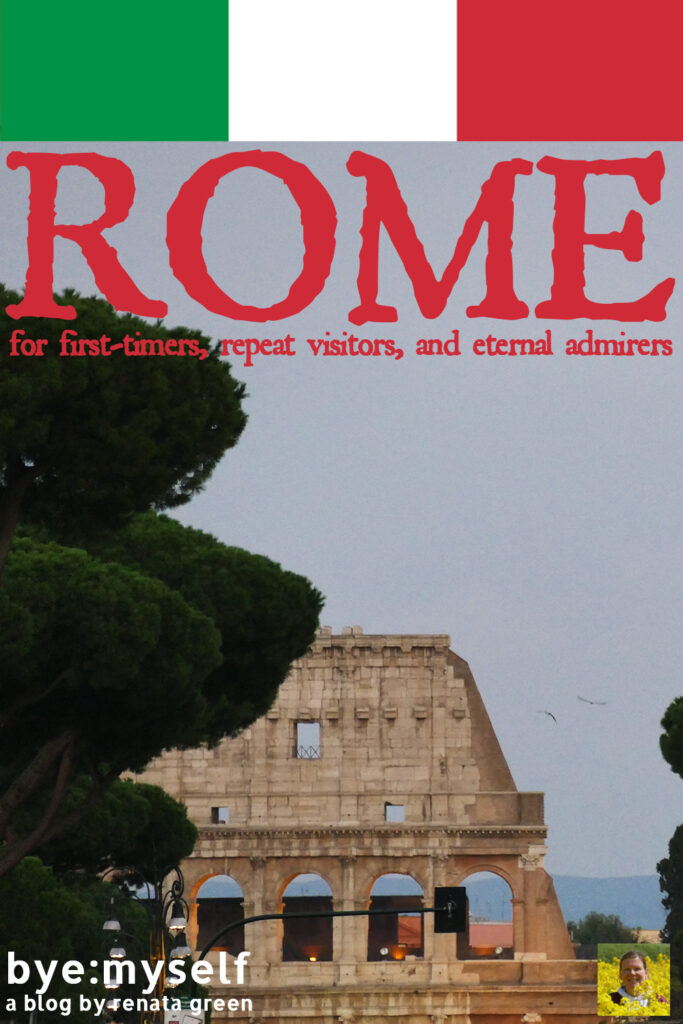
Note: I’m completing, editing, and updating this post regularly – last in March 2025.
Did You Enjoy This Post? Then You Might Also Like These:
Comprehensive Guide to FLORENCE – Home of the Medici, Cradle of the Renaissance
TORCELLO – a church, a bridge, and 15 residents
LA SPEZIA and PORTO VENERE – Precious Gems on the Ligurian Coast
MURANO – BURANO – TORCELLO: A Self-Guided Island Tour
Take a Break: The Three Best Beaches You Can Easily Visit From VENICE
One Day in CATANIA, Sicily’s Building Ground of Grand Palaces
What to See in NOTO, the Baroque Town of Sicily
Language Learning in Rome
During this stay, Scuola Leonardo da Vinci granted me a small discount on my super-intensive course. Still, all opinions on their service are mine. They were by no means influenced by my cooperation partner. The provided links are a service to my readers.
Apart from the link to booking.com, there are no affiliate links in this post.
Hence, the *-marked link is an affiliate link. If you book through this page, not only do you get the best deal. I also get a small commission that helps me run this blog. Thank you so much for supporting me!
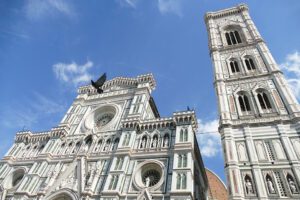
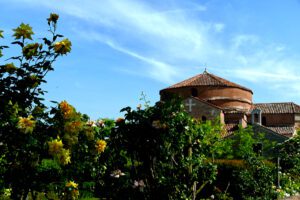
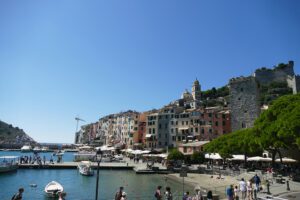
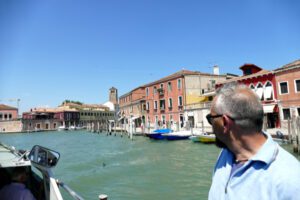
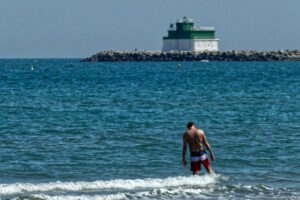
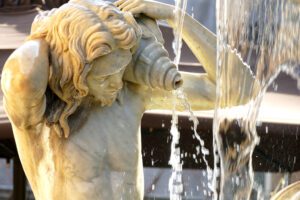
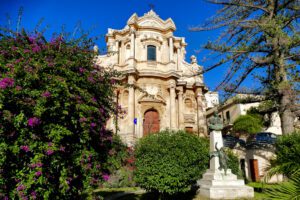
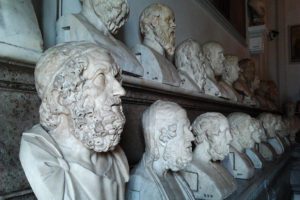
After looking into a handful of the blog articles on your website, I honestly appreciate your technique of blogging.
I bookmarked it to my bookmark website list and will be
checking back in the near future.
Thank you, glad you enjoy my page. Normally, I’m posting every weekend – so I hope to see you here again very soon 🙂
Great place!
It definitely is – the eternal city 😉
I was able to find good advice on what to do in Rome from your blog article.
I’m glad – helping others with their travel planning is my goal 😉
This is such an informative and exhaustive guide for Rome. Rome can be really overwhelming for the first timer as it has so much to see and also needs a lot of walking.
Indeed, there is beauty everywhere! You need to be really organized to get to see a lot. If not, it’s just dolce vita – nothing wrong with that 😀
Pretty nice post. I just stumbled upon your weblog and wished to say that I’ve really enjoyed browsing your blog posts.
What a detailed and comprehensive guide to Rome! I love all the historical and cultural information, trivia tid-bits, and tips for travelers. I grew up in Romania that was at once point, a Roman outlier, so we hav a Romulus and Remus statue in the center of my home-town. The Mouth of Truth was something I never knew about. Interesting. Love all your photos, too. Great post!
How interesting – I knew that Romanian is related to Italian, hence, a Romance language, but didn’t know about the statue. Actually, I know far too little about southeast Europe – it’s on my list for “later” 😉
wow, such an amazing place! hope to be able to visit here soon!
Rome is such an amazing city with an overwhelming list of things to see and do. I love how you’ve outlined these recommendations so it’s easy for folks to pick and choose what fits their interests (and their time in Rome) best!
We love visiting historical places, which is why, Rome is on our wish list. We were looking for the information for the ‘first time visitors’ in your post but the details that you have put made us look much beyond that. The details on the history of the eternal city is amazing as well, truly eternal.
Think of my post as an hors d’oeuvre-plate – and pick only what looks most appealing 😉
I’m hoping to visit Rome next year, so this post was really helpful. Unfortunately I won’t be there for long, but it will be wonderful to see in person some of the sights you recommend. And of course I will love eating Italian food every day!
Yes, Rome is definitely a city you need to visit more than once. In any case: Enjoy!
One of my favorite cities, and what an incredibly thorough post! You put so much thought into all the details.
That’s what happens when you really love a place 🙂
Amazing and interesting place. It looks like this has an awesome history and I wish one day I can visit it.
I haven’t been to Rome yet but would love to at some point soon, so this was a great read for me! I’m always put off visiting if I don’t have a lot of time to spend there because there are so many fantastic historical sites to visit, like you’ve pointed out. I would love to walk around the museums and look at the incredible art masterpieces – great photos!
What a comprehensive post that tells me I have missed so much even after going there twice!!!
This is the most in depth and informative post about Rome that I have read. I have been to Rome once as a student so would love to go back and appreciate the beauty of the city. I will be sure to park this post for went I go.
Thank you, so glad you like it 🙂
An incredible and complex post about Rome! Love the photos and all the info!
Last year, I visited Rome and instantly fell in love with the city, food and culture. I am going to save this post so that next time I visit the city…I don’t miss out anything. Thanks for sharing!
Glad you like it – nevertheless, there are still landmarks missing 😉 I will include them after my next visit!
Very informative post! I loved reading the history of Rome and how it developed over the years. I always love knowing the history and cultural information about a country before visiting. Its great to know there is a big difference between lunch and dinner pricing. I usually only eat once a day when traveling, so choosing the cheaper menu would go a long way for my travel budget!
Such a great guide to Rome. Fascinating facts from the ancient history of the city. I love Rome, its architecture, museums, and food. I would love to go back there again for a few days—lots of useful tips and information.
Well, I guess at noon, it’s eating, in the evening dining – and that comes with a price-tag 😉
fantastic and crazy comprehensive Rome guide. I think for a first-timer, this guide would be so overwhelming. Like you said, So Many Places, So Little Time! I was in Rome and barely saw anything in the 2 days I was there.
Think about this post as an hors d’oeuvre plate: Just take what tickles your fancy 😉
Wow, what an incredibly detailed post. You obviously love Rome. It’s one of my favourite cities and I thought I knew a lot about the place but apparently not, according to this. I’m very interested to read about your experience learning Italian as I’m very interested in doing that myself and weirdly hadn’t considered Rome.
I’ve written about it in my post Back to School: Italian Classes at the Scuola Leonardo da Vinci in 2020 – if you have further questions, don’t hesitate to contact me again!
Having grown up in Rome, this makes me really nostalgic! And I absolutely love Isola Tiberina and love that you included it in this guide 🙂
Aaah, I’m happy 🙂
What nice pictures you have over here and I’ve learn a great deal of history from this as well. I wish i could have a chance to visit rome in the future. Fingers crossed
So glad you like it! 🙂
I love Roma! It’s one of my favorite cities. Rome has been a center of culture, fashion and gastronomy. I like the Colosseo a lot!
I’ve heard so many beautiful things about Rome and I aim to go there in the summer for a friend’s wedding. Along with the culture and the sites you’ve pointed out here, I’d love to also hear the dialectical difference between Roman and traditional Italian.
Good point – the local particularities are highly interesting! Have a great trip there!
Rome is such a beautiful city! This is a very comprehensive post about everything to see and do. I hope to make it back there again one day.
Me too. I just came back – and miss it already!
This is such a well-written post. I am impressed with the quality of information. I have not had the pleasure to visit Rome but am certainly interested. The statue with the wolf is rather interesting too.
Thank you, glad you like it. The Lupa Romana is truly iconic!
Very detailed and informative post! Its been almost a decade since I visited Rome…Took me back to the days I was a tourist in Rome.
Well, welcome back 😉
It will be apt to label me an eternal admirer as I have had visiting Rome in my bucket list like forever. But, with your really convincing post, I think the time has finally come.
That’s good – I’m sure you’ll love it!
Amazing places. I have not visited Rome before in my life. I really wish I can visit them next year.
I’m curious what next year holds in store for us…. 😉
I love your articles. So much details. In fact you do not need a tour guide exclusively. My parents have visited Rome and they liked it very much. I am yet to visit.
It’s a wonderful city – you’ll love it!
I love Rome! Your blog post brought back memories of our visit to this beautiful city many years ago. We walked a whole day taking in all the history and architecture! Lovely post and gorgeous pictures. 🙂
Yes, you can easily spend a day just walking around – it’s like an outdoor museum.
Rome is such a beautiful and amazing city that I could visit over and over again! There is so much to see and to do!
Yap, I think the length of my post is proof of that 😉
Wow! This post is huge! I’ve been to Rome many times & always love it but I’ve now realised how much more there is to the city. I usually concentrate on the bigger sites but next time I will definitely put some of these smaller spots on my list too. I stayed in Trastevere last time & loved it, you can’t beat just walking the streets of Rome. Thank you for all the info!
Hahaha, I know it’s quite comprehensive – but there is sooo much to see. Mind you, it’s still not complete 😉
I absolutely love how detailed and informative this post is. It’s really helpful especially for those who haven’t visited Rome yet. You compiled them all into this post and made everything more convenient. Rome has a lot of areas to explore so I’m sure it’s best to plan it all out and maybe stay for a while to see all of the tourist spots.
Thank you, glad you appreciate it. And there is still more to come… 😉
This is the most thorough guide I have read for visiting Rome. I truly hope to be able to visit Rome sometime, looks like I’ll need to plan a long stay, no complaints there!
….or you go several times 😉
I learned so much about Rome and Roman history from this post. I feel like you could spend months in Rome and not see it all! I would love to visit Italy someday.
Yes, that’s true – it’s amazing how much there is to see in Rome.
This is definitely going to be how I plan my trip to Rome! This post has so much wonderful information in it. It’s going to make it so much easier to put a trip together.
I’m glad – that’s what I was aiming for 🙂
Rome has always been in our bucket list , I thought this year it’s going to happen unfortunately because of this pandemic we have to cancel our holiday, oh well we are just glad that we are safe and healthy. Will deffo save this so when we can travel again I have a detailed list on what to do and places to visit.
Yes, I guess we all have a place where we were supposed to go this year….;-) 🙁
My oh my….how did you even manage to visit and document all these places? They are simply so many, with lots to see and enjoy about them!
Haha, I had over a week – and I was racing like a mad-woman 😀
Such a lovely post and so much information on this lovable city that I felt I was journeying with. Love your tip on the teeny tiny Pizzeria round the corner across from the church of Saint Dorothea. I will look out for this place on my next visit to Rome.
You won’t regret it! Glad you’ve enjoyed this post 🙂
Rome is a common gateway when we visit Italy from Canada. So we usually try to pick one or two things to see when we visit. Then we can really enjoy them. There were a few new spots here for next visits (the Isola Tiberina, Palazzo Spada, Trastevere Church, Villa Farnesina to name a few). I loved the way you walked us around Rome through different periods in the tumultuous history of Rome. I will never tire of spending more time in Rome with so many beautiful spots. More than just a guide for first timers!
Although I got so much to see on this trip, there are still some spots I’ve already bookmarked for my next visit….it is an Eternal City for sure!
Wow! Thank you for this comprehensive post. I think it would take me at least a month to explore the city. The art is magnificent. I’d love to get a stamp from the Vatican too.
Actually, I agree: To get to see everything in a relaxed way, you might need a month; or various visits 😉
Wow, been to Rome a few times, and it seems that I missed a lot of things. Maybe It’s because I usually only stay half of the number of days you recommended in this article haha. Will have to go back and tick the rest of these off my bucketlist, thanks!
To get to know Rome well, you might need….an eternity 😉
I’ve been to Rome twice but still there’s plenty here that I’ve not yet explored, what a fabulous resource. I particularly enjoyed the history section, which gave just the right level of detail for me!
Thanx for your feedback on the history-part. It’s always a challenge finding the balance of informing without boring 😉
I think it was my fourth or fifth time in Rome…and there is still a lot on my bucket list 😀
Wow! Lovely places to visit and very informative post for someone like me who loves to visit Rome , hopefully in the near future . How I miss travelling!
Me too! 🙂
Very informative and helpful, I haven’t gone yet but I’m sure this will definitely help when I’m ready.
You will love it!
I would love to visit Rome again in the future! I went nearly 9 years ago and it was absolutely stunning and full of so much history and culture. I live in the Netherlands and while it is beautiful here – all Roads lead to Rome as they so say!
Yes, for me, it has been 8 years – and I fell in love with the city all over again.
wow! I am somewhere in between of frequent visitors and admirers and this guide is something. I am SO fired up to visit Rome again now!
Glad a pro like you does appreciate it 😉
I enjoyed reading your blog about Rome and now I am feeling more like “drunk in Rome”! I love watching period-drama about Rome, read books about their culture, lifestyle, etc, and what is missing now is to actually breath Rome’s air 🙂
Soon I will make it, I know that.
Seems as if in your case, actually all roads lead to Rome 😉
Wow so informative it’s really beautiful here! Thanks for sharing.
Rome has always being one of my favorite city in the world.
It’s really a beautiful place and reading it’s history just makes me curious.
Yes, it’s quite overwhelming.
Rome is like Art in itself, in every single way. I don’t know if that even makes sense but the more I learn about the history and how it’s still standing today, I am just in awe. Thanks for sharing.
That’s exactly what fascinated me from the first moment on: Those historic rocks representing the cradle of our civilization in the very center of a modern, functioning city – sooo special!
Wow. Beautiful photos. My husband has been to Rome…way before we met. And I have been trying to get him to take me for years now. Maybe someday.
You should force him – it’s so beautiful! 😀
Rome looks so beautiful. The legend of Romulus and Remus threw me off. That was a surprise. I have never heard of that legend.
What I skipped was the part that they were thrown in the river Tiber where the wolf found them….at least that’s what they claim 😉